The Complete Classic Commentaries Bundle 3.0 (1,978 vols.)
Digital Logos Edition
Overview
With over 1,900 scholarly commentaries covering every book of the Bible, the Complete Classic Commentaries Bundle is a timeless trove of expositions, analyses, and illustrations. This massive bundle is made up of classic public domain and early twentieth-century commentaries Logos has released separately in the past. Build your library or complement the resources you already own with these classic works in Logos’ advanced digital format.
Version 3.0 contains ten new collections, including Classic Commentaries and Studies on the Epistles of Peter and Jude Upgrade (12 vols.), Classic Commentaries and Studies on the Apocalypses of Daniel and Revelation (14 vols.), Classic Commentaries and Studies on Joshua, Judges, and Ruth (19 vols.), Classic Commentaries and Studies on Amos (5 vols.), and more.
This bundle includes numerous comprehensive collections, such as The Pulpit Commentary (77 vols.), The Cambridge Bible for Schools and Colleges (58 vols.), and Calvin’s Commentaries (46 vols.). Additionally, it has eight series on the New Testament, multivolume commentaries for each book of Scripture, expositional selections by renowned theologians such as H.A. Ironside, John Calvin, A.W. Pink, J.C. Ryle, and John Wesley, as well as individual works by Charles Spurgeon on the Psalms, Martin Luther on Galatians, John Owen on Hebrews, and much more.
- Contains nearly 2,000 volumes of commentary covering every book of the Bible
- Includes every public domain commentary Logos has released to date
- Offers variety in your study—commentaries from Cyril of Alexandria to Charles Spurgeon
- Title: The Complete Classic Commentaries Bundle
- Version: 3.0
- Volumes: 1,978
- Resource Types: Commentaries, Sermons, Monographs
- Topic: Biblical Studies
Complete Old and New Testament Commentaries and Collections
- The Pulpit Commentary (77 vols.)
- Lange’s Commentary on the Holy Scriptures (63 vols.)
- The Cambridge Bible for Schools and Colleges (58 vols.)
- Calvin’s Commentaries (46 vols.) by John Calvin
- Preacher’s Homiletic Commentary (38 vols.)
- Classic Studies on the Parables of the Bible (30 vols.)
- Barnes’ Notes on the Old and New Testaments (26 vols.)
- Charles Simeon’s Horae Homileticae Commentary (21 vols.)
- Critical and Exegetical Commentary on the New Testament (21 vols.)
- Cambridge Greek Testament for Schools and Colleges (21 vols.)
- Classic Commentaries on the Greek New Testament (14 vols.)
- Poor Man’s Old and New Testament Commentary (12 vols.) by Robert Hawker
- Church Pulpit Commentary (12 vols.)
- The Great Commentary of Cornelius à Lapide (8 vols.)
- The Greek Testament (8 vols.) by Henry Alford
- The Numerical Bible (7 vols.) by Frederick W. Grant
- Biblical Commentary on the New Testament (6 vols.) by Hermann Olshausen
- Gnomon of the New Testament (5 vols.) by John Albrecht Bengel
- The Expositor’s Bible (6 vols.)
- The Expositor’s Greek Testament (5 vols.)
- A Commentary on the New Testament from the Talmud and Hebraica (4 vols.) by John Lightfoot
- Wesley’s Explanatory Notes upon the Old and New Testaments (4 vols.) by John Wesley
- The Analyzed Bible (10 vols.)
- A Popular Commentary on the New Testament (4 vols.)
- Adam Clarke’s Commentary on the Bible (6 vols.)
- Eadie’s Commentaries on the Greek New Testament (5 vols.)
- Henry Cowles Commentary Series (16 vols.)
- John Darby’s Synopsis of the Books of the Bible (5 vols.)
- Matthew Poole’s Commentary on the Holy Bible (3 vols.)
- Through the Bible Day by Day: A Devotional Commentary (7 vols.)
- The Great Texts of the Bible (20 vols.)
- The Lutheran Commentary (12 vols.)
- Jamieson, Faussett, and Brown’s Abridged Commentary Critical and Explanatory on the Whole Bible
- The Messages of the Books by Frederic William Farrar
- Haydock’s Catholic Bible Commentary by George Leo Haydock
- Biblical Encyclopedia and Museum (15 vols.)
- Expositions of Holy Scripture (33 vols.)
- The Complete Works of Thomas Manton (22 vols.)
- Light and Truth Bible Thoughts (5 vols.)
- Vincent’s Word Studies in the New Testament (4 vols.)
- John MacEvilly Commentaries Collection (6 vols.)
- The Expository Thoughts of J.C. Ryle (7 vols.)
- Ellicott’s Commentaries on St. Paul’s Epistles (6 vols.)
- H.A. Ironside’s Commentaries on the Bible (32 vols.)
- Collected Homilies of St. John Chrysostom (15 vols.)
- The Expositions of John Gill (10 vols.)
Commentaries on Individual Books of the Bible
- Pentateuch
- Notes on the Pentateuch: Genesis to Deuteronomy
- Classic Commentaries and Studies on Genesis (22 vols.)
- Studies In Genesis
- An Exposition of the First Ten Chapters of Genesis
- The Serpent of Eden
- Gleanings in Genesis by A.W. Pink
- Classic Commentaries and Studies on Exodus (21 vols.)
- Classic Commentaries and Studies on Exodus Upgrade (14 vols.)
- Gleanings in Exodus by A.W. Pink
- The Book of Exodus: A Complete Analysis of Exodus with Annotations by Arno Gaebelein
- Classic Commentaries and Studies on Leviticus (21 vols.)
- Classic Commentaries and Studies on Numbers and Deuteronomy (20 vols.)
- Historical Books
- Classic Commentaries and Studies on Joshua (17 vols.)
- Gleanings in Joshua by A.W. Pink
- Types in Joshua by Arno Gaebelein
- Classic Commentaries and Studies on Judges (16 vols.)
- Classic Commentaries and Studies on Ruth (12 vols.)
- Classic Commentaries and Studies on Joshua, Judges, and Ruth (19 vols.)
- Classic Commentaries and Studies on the Books of Samuel (11 vols.)
- Classic Commentaries and Studies on the Books of Samuel Upgrade (11 vols.)
- Notes on the Hebrew Text of the Books of Samuel
- Classic Commentaries and Studies on Kings (12 vols.)
- Classic Commentaries and Studies on Chronicles (7 vols.)
- Classic Commentaries and Studies on Ezra, Nehemiah, and Esther (18 vols.)
- Poetic Books
- Classic Commentaries and Studies on Job (18 vols.)
- Morals on the Book of Job (4 vols.)
- Translation of the Vulgate Collection (4 vols.)
- Classic Commentaries and Studies on Psalms (35 vols.)
- The Treasury of David (6 vols.)
- Commentary on the Psalms (3 vols.)
- Commentary on the Psalms from Primitive and Mediæval Writers (4 vols.)
- Augustine’s Exposition on the Book of Psalms (6 vols.)
- Classic Commentaries and Studies on Proverbs (20 vols.)
- Classic Commentaries and Studies on Ecclesiastes (26 vols.)
- Classic Commentaries and Studies on the Song of Songs (24 vols.)
- Prophetic Books
- Classic Commentaries and Studies on Isaiah (22 vols.)
- Commentary on the Book of Isaiah: Critical, Historical, and Prophetical
- Commentary on the Prophets of the Old Testament (5 vols.)
- The Book of Isaiah according to the Septuagint (Codex Alexandrinus), vol. 1
- The Book of Isaiah according to the Septuagint (Codex Alexandrinus), vol. 2
- Classic Commentaries and Studies on Jeremiah and Lamentations (22 vols.)
- Classic Commentaries and Studies on Ezekiel (15 vols.)
- Classic Commentaries and Studies on Ezekiel Upgrade (9 vols.)
- The Prophet Ezekiel: An Analytical Exposition by Arno Gaebelein
- Classic Commentaries and Studies on Daniel (21 vols.)
- The Prophet Daniel: A Key to the Visions and Prophecies of the Book of Daniel, 2nd ed. by Arno Gaebelein
- The Four Prophetic Empires and the Kingdom of the Messiah: Being An Exposition of the First Two Visions of Daniel
- Classic Commentaries and Studies on the Apocalypses of Daniel and Revelation (14 vols.)
- Classic Commentaries and Studies on the Minor Prophets (40 vols.)
- The Prophet Joel: An Exposition by Arno Gaebelein
- Classic Commentaries and Studies on Amos (5 vols.)
- The Man Among the Myrtles: A Study in Zechariah’s Visions
- Classic Commentaries and Studies on the Biblical Apocrypha / Deuterocanon (42 vols.)
- Four Gospels and Acts
- Classic Commentaries and Studies on the Gospels and Acts (24 vols.)
- Classic Commentaries and Studies on Matthew (25 vols.)
- The Prophetic Parables of Matthew 13 by A.W. Pink
- An Exposition of the Sermon on the Mount by A.W. Pink
- The Sermon on the Mount: A Practical Exposition
- Commentary on the Sermon on the Mount
- The Literal Interpretation of the Sermon on the Mount
- Catena Aurea: Commentary on the Four Gospels (8 vols.)
- Commentary on the Gospel According to Matthew
- Commentary on Matthew and Mark
- Classic Commentaries and Studies on Mark (24 vols.)
- The Gospel of Mark: A Complete Analysis of the Gospel of Mark, with Annotation by Arno Gaebelein
- J.D. Jones’ Commentary on Mark (4 vols.)
- Classic Commentaries and Studies on Luke (24 vols.)
- A Commentary upon the Gospel According to S. Luke by Cyril of Alexandria
- Godet’s Commentary on Luke’s Gospel (2 vols.) by Frédéric Louis Godet
- Commentary on Luke
- Classic Commentaries and Studies on the Gospel according to John (25 vols.)
- The Genius of the Fourth Gospel: A Homiletical Commentary on the Gospel of John
- An Exposition with Notes, Unfolded and Applied, on John 17
- St. John the Author of the Fourth Gospel
- Commentary on the Gospel of John: With a Critical Introduction, vol. 1 by Frédéric Louis Godet
- Commentary on the Gospel of John: With a Critical Introduction, vol. 2 by Frédéric Louis Godet
- Commentary on the Gospel of John: With a Critical Introduction, vol. 3 by Frédéric Louis Godet
- An Exposition of the Gospel of John by A.W. Pink
- Four Gospels and Acts, Continued
- Sermons on Selected Lessons of the New Testament, vol. 1: St. Matthew, St. Mark, & St. Luke
- Sermons on Selected Lessons of the New Testament, vol. 2: St. John, Acts, Romans, 1 Corinthians, Galatians, Ephesians, Philippians, 1 Thessalonians, 1 Timothy, Titus, James, & 1 John
- Homilies on the Gospel According to St. John, and his First Epistle, vol. 1: Homilies 1–43 & St. John 1–8
- Homilies on the Gospel According to St. John, and his First Epistle, vol. 2: Homilies 44–124, St. John 9–21, Homilies 1–10, & 1 St. John
- Cyril of Alexandria: Commentary on the Gospel according to St. John (2 vols.)
- Among the Gospels and the Acts
- Classic Commentaries and Studies on the Acts of the Apostles (31 vols.)
- Lectures on the Acts of the Apostles
- A Commentary on Acts of the Apostles
- The Whole Works of John Lightfoot, vol. 8: Commentary on Acts 1–12
- The Acts of the Apostles: An Exposition by Arno Gaebelein
- Epistles
- Paul, the Apostle of Jesus Christ: His Life and Work, His Epistles, and His Doctrine, vol. 1
- Paul, the Apostle of Jesus Christ: His Life and Work, His Epistles, and His Doctrine, vol. 2
- Studies on the Epistles of St. Paul by Frédéric Louis Godet
- Classic Commentaries and Studies on Romans (32 vols.)
- Classic Commentaries and Studies on Romans Upgrade (32 vols.)
- Commentary on St. Paul’s Epistle to the Romans (2 vols.) by Frédéric Louis Godet
- A Commentary on St. Paul’s Epistle to the Romans by Joseph Agar Beet
- The Epistle to the Romans
- Sermons on the Eighth Chapter of the Epistle to the Romans (Verses 1–4)
- Notes on the Epistles of St. Paul from Unpublished Commentaries
- A Critical and Doctrinal Commentary Upon the Epistle of St. Paul to the Romans
- Charles Hodge Commentary Collection (4 vols.)
- Classic Commentaries and Studies on Corinthians (29 vols.)
- Classic Commentaries and Studies on Corinthians Upgrade (12 vols.)
- A Commentary on St. Paul’s Epistles to the Corinthians by Joseph Agar Beet
- Historical Commentary on the Epistles to the Corinthians
- Commentary on St. Paul’s First Epistle to the Corinthians, vol. 1 by Frédéric Louis Godet
- Commentary on St. Paul’s First Epistle to the Corinthians, vol. 2 by Frédéric Louis Godet
- Classic Commentaries and Studies on Galatians (24 vols.)
- Classic Commentaries and Studies on Galatians Upgrade (14 vols.)
- A Commentary on St. Paul’s Epistle to the Galatians by Joseph Agar Beet
- Luther’s Commentary on Galatians
- A Historical Commentary on St. Paul’s Epistle to the Galatians
- The Epistle to the Galatians
- Classic Commentaries and Studies on Ephesians (23 vols.)
- Classic Commentaries and Studies on Ephesians Upgrade (14 vols.)
- God’s Masterpiece: An Analytical Exposition of Ephesians 1–3 by Arno Gaebelein
- St. Paul’s Epistle to the Ephesians
- The Ephesian Letter
- Studies in Ephesians
- The Works of Thomas Goodwin, vol. 1: Commentary on Ephesians 1–2 by Thomas Goodwin
- The Works of Thomas Goodwin, vol. 2: Commentary on Ephesians and James by Thomas Goodwin
- The Epistles to the Ephesians and the Colossians
- A Commentary on St. Paul’s Epistles to the Ephesians, Philippians, Colossians, and to Philemon by Joseph Agar Beet
- Classic Commentaries and Studies on Philippians (18 vols.)
- Classic Commentaries and Studies on Philippians Upgrade (12 vols.)
- The Incarnation: A Study of Philippians 2:5-11
- Paul’s Joy in Christ: Studies in Philippians
- New International Commentary: The Epistles of Paul to the Philippians and to Philemon
- Classic Commentaries and Studies on Colossians and Philemon (14 vols.)
- Studies in Colossians
- Classic Commentaries and Studies on Thessalonians (11 vols.)
- Classic Commentaries and Studies on Thessalonians Upgrade (9 vols.)
- Classic Commentaries and Studies on the Pastoral Epistles (12 vols.)
- Historical Commentary on the Pastoral Epistles
- Classic Commentaries and Studies on Hebrews (31 vols.)
- An Exposition of the Epistle to the Hebrews (7 vols.)
- An Exposition of Hebrews by A.W. Pink
- Classic Commentaries and Studies on the Epistle of James (14 vols.)
- Classic Commentaries and Studies on the Epistle of James Upgrade (12 vols.)
- Studies in the Epistle of James
- Classic Commentaries and Studies on the Epistles of Peter and Jude (26 vols.)
- Classic Commentaries and Studies on the Epistles of Peter and Jude Upgrade (12 vols.)
- Classic Commentaries and Studies on the Epistles of John (25 vols.)
- Classic Commentaries and Studies on the Epistles of John Upgrade (9 vols.)
- Revelation
- Classic Commentaries and Studies on Revelation (27 vols.)
- The Book of Revelation: A Study of the Last Prophetic Book of Holy Scripture
- Explanation of the Apocalypse by Bede
- The Apocalypse of John: Studies in Introduction, With a Critical and Exegetical Commentary
- The Mystery of Providence: Or, the Prophetic History of the Decline and Fall of the Roman Empire: An Exposition of Revelation 8, 9
- The Works of Thomas Goodwin, vol. 3: Commentary on Revelation by Thomas Goodwin
- The Revelation: An Analysis and Exposition of the Last Book of the Bible by Arno Gaebelein
- Classic Commentaries and Studies on the Apocalypses of Daniel and Revelation (14 vols.)
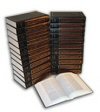
The Pulpit Commentary (77 vols.)
- General Editors: H.D.M. Spence and Joseph S. Exell
- Publisher: Logos Research Systems
- Volumes: 77
Veteran preachers already know the value of this best-selling commentary set, but it's also perfect for lay leaders. Far more than just a simple commentary, it provides an unrivalled range of homiletic helps that go a long way toward presenting the biblical text in a Sunday school lesson, sermon, or Bible study.
The Pulpit Commentary covers every book of the Bible, with at least three treatments of every verse. For each biblical chapter, the commentary includes an Exposition, Homiletics, and various sample Homilies.
- Exposition
Commentary on the passage, with exegetical, interpretive, theological, historical, and geographical observations. Written by the author of that volume. - Homiletics
A guide for preaching or teaching through the passage, with personal application, devotional insights, and observations about the rhetorical structure of the passage. Written by the author of that volume. - Homilies
Actual sermons from various contributors, covering a couple of verses or a pericope. Typically, a brief introduction followed by 2-5 "points" with a number of references to other passages that provide biblical context.
Taken together, the three treatments of each passage provide a detailed outline of key concepts in the passage, while imparting a rich sense of biblical context—context of both the immediate book and the larger themes of Scripture.
NOTE: The version of The Pulpit Commentary available for Logos Bible Software is the Public Domain edition, not the Hendrickson Publishers edition.
I have used the paper version of the Pulpit Commentary for over 20 years. It is and continues to be my primary commentary for all my messages. I appreciate its scholarly work and the simplicity and power of its commentaries. I have also been an avid user of Logos since its inception and often wished that this commentary would find its way into the [digital] library.
—Hilton Garcia, Patuxent River Assembly of God, California, Maryland

Lange’s Commentary on the Holy Scriptures (63 vols.)
- Publisher: Logos Research Systems
- Volumes: 63
- Pages: 14,814
This 19th century commentary has served as a standard reference for more than a century. The original work was edited by Peter Lange in Germany (1864-1880). Phillip Schaff supervised the English translation and contributed substantially to the American edition, which runs to some 14,000+ pages. Many early reviewers regarded Schaff’s edition with his additional material as superior to the original.
Newly added to the Logos Bible Software edition – but left out of more recent reprints – is the original fifteenth volume covering the Apocrypha of the Old Testament. Difficult and expensive to acquire on its own, this volume rounds out Lange’s magnum opus and adds extra value to the set for all commentary completists. Read the interesting story of how we discovered Lange's Long Lost Volume!
This commentary series appears on recommended book lists to this day (e.g., the Master's Seminary 850 Books for Biblical Expositors) but is out of print and quite difficult to find as a complete set. The Logos edition will offer all the benefits of searching, copy-and-pasting, linked Bible references, and synchronous scrolling with whatever Bible you may own.
The volumes greatly differ in excellence, yet none could be spared. We have nothing equal to them as a series.
. . . we unhesitatingly commend the Commentary of Dr. Lange, which is, in brief, a vast reservoir in which is collected an immense amount of material for the use of students and all intelligent, educated Christians.
—Putnam's Magazine
It promises to be a complete and useful Commentary and will prove especially valuable to ministers. It contains critical annotations of the text and its translation, and a threefold commentary, exegetical, doctrinal, and homiletical. Under these three heads the text is viewed under every aspect. It forms almost an exegetical library by itself.
—The New Englander
The critical, doctrinal, and homiletical elements are distinctly brought out; and the volumes... are marked by elaborate investigation, full and careful discussion, profound scholarship, liberal and enlarged views on debatable questions, admirable suggestions of topics for the pulpit, and, at the same time, by earnest advocacy of the great fundamental doctrines held among orthodox Protestant Christians.
—Putnam's Magazine, Third Volume, January-June, 1869, pp. 242-243
Of the present volume, treating of the most important, as well as most difficult of St. Paul’s Epistles, we need hardly say more than that its profound learning, its fearless investigation and discussion of points in debate, its searching exposition of the falsity and wickedness of pantheism and rationalism will prove of great value to Christian readers and students, especially in these times. We have no space to attempt anything like a review of the present volume. It is one to be studied, and it will repay study, whatever conclusion maybe arrived at on the deep and unfathomable mysteries of absolute decrees, election, predestination (supralapsarian or suplapsarian), the free will of man, the sovereignty of God, the atoning efficacy of the sacrifice of Christ, and many such like.
—Putnam's Magazine, Fourth Volume, July-December 1869, p. 627

The Cambridge Bible for Schools and Colleges (58 vols.)
- Publisher: Cambridge University Press
- Volumes: 57
- Pages: 14,549
The Cambridge Bible for Schools and Colleges was the first ever complete commentary set to be published by Cambridge University Press. The more than thirty theologians and biblical scholars that contributed to this collection have illuminated the Scriptures for thousands of readers for nearly one hundred years, and continue to provide a fantastic, holistic look at the entirety of the Bible, including 1 Maccabees, Ecclesiasticus, and The Wisdom of Solomon. Contributing authors include noted scholars Herbert Edward Ryle, S.R. Driver, J. Skinner, A. Plummer, F.W. Farrar, H.C.G. Moule, and W.H. Simcox. The original audience for this series was the English Bible student, and the commentaries continue to be an excellent resource for those in the scholastic arena. In addition, the accessible writing style makes the fifty-seven volumes included a great scriptural study guide for pastors and laity.
The history, original language studies, outlines, maps, literary analysis, and verse-by-verse commentary for each book of the Bible contained in The Cambridge Bible for Schools and Colleges provide a comprehensive backdrop to the understanding of the Scriptures. With nearly 15,000 pages, these books are easily searchable in digital format, and the commentaries will appear in Passage Guide results. What's more, in the Logos edition you can link the commentaries with your preferred Bible for ease of scrolling and searching. Hebrew and Greek word studies can be performed with the click of a mouse, and Scripture references can be accessed instantaneously with a mouse-over.
There are no better books in exposition of the different parts of Scripture than those contained in the Cambridge Bible for Schools and Colleges. The series has long since established its claim to an honorable place in the front rank of first-rate commentaries; and the teacher or preacher who masters its volumes will be, like Apollos, mighty in the Scriptures.
—Church Sunday School Magazine

Calvin’s Commentaries (46 vols.)
- Author: John Calvin
- Volumes: 46
- Pages: 22,455
Calvin’s Commentaries are, in the words of Philip Schaff, one of the few exegetical works that have outlived their generation. Calvin preached and wrote prolifically on the Bible. His commentaries display a rare combination of exegetical insight, pastoral concern, and theological depth which have inspired generations of Christians. Calvin wrote commentaries on most books of the Bible, and is best known for his commentaries on the Pauline epistles, his harmony of the Gospels, and his 5-volume work on the Psalms—all included in this massive collection.
The greatest exegete and theologian of the Reformation was undoubtedly Calvin. . . . He is one of the greatest interpreters of Scripture who ever lived. He owes that position to a combination of merits. He had a vigorous intellect, a dauntless spirit, a logical mind, a quick insight, a thorough knowledge of the human heart, quickened by rich and strange experience; above all, a manly and glowing sense of the grandeur of the Divine. The neatness, precision, and lucidity of his style, his classic training and wide knowledge, his methodical accuracy of procedure, his manly independence, his avoidance of needless and commonplace homiletics, his deep religious feeling, his careful attention to the entire scope and context of every passage, and the fact that he has commented on almost the whole of the Bible, make him tower above the great majority of those who have written on Holy Scripture.
—Frederic William Farrar, English clergyman and author
...Calvin’s theology interests us in its historical context as an outstanding record of Reformation theology that historically—and at times even legally—has served as a basis of proclamation in modern Protestant churches.
—Karl Barth, author, Church Dogmatics, The Epistle to the Romans
Calvin helped the Reformation change the entire focus of the Christian life. Calvin’s teaching, preaching, and catechizing fostered growth in the relationship between believers and God.
—Joel R. Beeke, President and Professor of Systematic Theology, Church History, and Homiletics, Puritan Reformed Theological Seminary, Grand Rapids, Michigan

Preacher’s Homiletic Commentary (38 vols.)
- Publisher: Logos Research Systems, Inc.
- Volumes: 38
- Pages: 18,934
For more than a century, the Preacher’s Homiletic Commentary has shaped the trajectory of expository preaching and defined the role Bible commentaries play in sermon preparation. As a commentary written by preachers for preachers, the Preacher’s Homiletic Commentary is uniquely designed to foster the kind of biblical study that produces engaging and clear sermons. For every chapter of the Bible, the commentary contains a section on preaching themes, which are organized topically, conceptually, and chronologically. Significant theological themes are also outlined for each section of the Bible, and homiletic notes are provided. The authors have also solicited and summarized commentary from a wide range of contributors to Biblical, historical, and theological scholarship, drawing from the collective wisdom of those who understand that good preaching has its origin in Biblical study. This work ranks among the few Bible commentaries that remain practical and accessible without compromising scholarship, making it an integral part of sermon planning and preparation.
Full of interest, and carefully thought out.
—Evangelical Magazine and Missionary Chronicle

Classic Studies on the Parables of the Bible (30 vols.)
- Volumes: 30
- Pages: 11,082
The Classic Studies on the Parables of the Bible Collection offers some of the nineteenth and early twentieth centuries’ most significant studies on Jesus’ and the Old Testament’s parables—over 11,000 pages of research. From familiar authors such as A.C. Gaebelein, H.B. Swete, and A.B. Bruce, you’ll get the best in classic scholarship on some of the most important teachings on character, God, faith, and more.
This collection contains a wide array of studies on the parables of the Bible, including resources for teaching the parables to youth, sermon structures for teaching the parables, Greek and Hebrew exegesis of Old Testament parables, and personal devotional application from the lessons of the parables. Whether you’re a pastor, scholar, or student, this collection will help you conduct research and give you practical advice.
The Logos edition of this collection gets you access to much more. Each volume is completely searchable, allowing you to find every study on any specific parable, or find every parable on a specific topic.

Barnes’ Notes on the Old and New Testaments (26 vols.)
- Authors: Albert Barnes and James Murphy
- Volumes: 26
- Pages: 10,715
Albert Barnes and James Murphy wrote this 26-volume commentary on the entire Bible (KJV), verse-by-verse from Genesis through Revelation. Published in the 1800s, it is still well-loved and well-read by evangelicals who appreciate Barnes' pastoral insights into the Scripture. It is not a technical work, but provides informative observations on the text, intended to be helpful to those teaching Sunday School. Today, it is ideally suited to anyone teaching or preaching the Word of God, whether a professional minister or layperson.

Charles Simeon’s Horae Homileticae Commentary (21 vols.)
- Author: Charles Simeon
- Series: Horae Homileticae
- Publisher: Logos Research Systems, Inc.
- Volumes: 21
- Pages: 12,414
Logos is proud to present Charles Simeon’s classic commentary, Horae Homileticae. These 21 volumes, featuring Simeon’s collected sermons, represent the fruit of his fifty-four years of preaching. Published originally in 1832 for the benefit of younger pastors seeking practical improvement at the task of sermon creation, Horae Homileticae reflects the rich source of Biblical understanding of its author, a towering figure in the history of evangelical theology.
These expository outlines (or “skeletons”) are not a verse-by-verse explanation of the English Bible. Rather, they are a chapter-by-chapter study with explanations of the most important and instructive verses in each chapter. Simeon’s aim with this commentary is “Instruction relative to the Composition of Sermons.” To this end, his exposition of the Scriptures is designed to maintain a focus on the more general aspects of a passage over and above possible treatments of particulars. His test for a sermon, as he teaches in Horae Homileticae, is threefold: does it humble the sinner, exalt the Savior and promote holiness?
Opposing all human systems of divinity, Simeon’s commentary is also marked by an avoidance of any possible systemization of God’s Word and entanglement with theological controversies. A self-described “moderate Calvinist” or, more plainly, a “Biblical Christian,” Simeon believed that the Bible should speak for itself. “Be Bible Christians, not systems Christians” was his maxim; "My endeavor is to bring out of Scripture what is there, and not to thrust in what I think might be there. I have a great jealousy on this head; never to speak more or less than I believe to be the mind of the Spirit in the passage I am expounding." With Horae Homileticae this conviction is soundly applied.
[Horae Homileticae] is the best place to go for researching Simeon's theology. You can find his views on almost every key text in the Bible. . . . What Simeon experienced in the word was remarkable. It is so utterly different from the counsel that we receive today that it is worth looking at carefully.
One can easily find suggestive and practical helps in the preparation of sermons, devotional talks, young people’s messages, prayer meeting talks, Sunday School lessons and personal Bible study. The study of these outlines will contribute greatly to expository preaching.
—B.B. Siegel, Bibliotheca Sacra
If Wilberforce is the most famous evangelical layman in the Church of England, then Simeon is the most famous evangelical clergyman.
—Who's Who in Christian History
Hours and hours of toil and labor have produced this veritable treasure, full of scholarship and intellectual endeavor.
—Paul Mizzi, Truth for Today
[The volumes of Horae Homileticae] have been called 'a valley of dry bones': be a prophet and they will live.

Critical and Exegetical Commentary on the New Testament (21 vols.)
- Publisher: T.&T. Clark and Funk & Wagnalls
- Volumes: 21
- Pages: 8,318
Known as "Meyer's Commentary," the Critical and Exegetical Commentary on the New Testament (21 vols.) is considered one of the best New Testament commentaries published in English in the early nineteenth century. Heinrich August Wilhelm Meyer, a German Protestant with a gift for languages, published the first commentary in this collection in 1832 at the age of thirty-two. It would be a lifelong project, one he worked on concurrently with a busy pastorate and raising a family. Known to have an encyclopedic memory and an appetite for buying books, it was not uncommon for Meyer to be reading his contemporaries in his native German, but also in English, Dutch, and French—languages that came as natural to him as Greek, Latin, and even Gothic. For over forty years Meyer balanced working on new additions to the commentary collection while also updating those already published with multiple, serious revisions. Before passing the baton to a few of his trusted peers to finish the NT, Meyer had completed sixteen volumes.
The Critical and Exegetical Commentary on the New Testament (21 vols.) includes the sixteen volumes by Meyer, two by Gottlieb Lünemann, three by Joh. Ed. Huther, and the final work on the Revelation of John by Friedrich Düsterdieck. Each book of the Bible is amply introduced, including biographical information about the authors, authorship controversies, information about the times of its composition, its intended audience, and more. Each volume focuses on the Greek text, and Meyer uses and discusses an abundance of sources and authors to illustrate meaning derived from the text. Meyer also likes to include important bibliographic material which was integral to his studies and research.
Meyer's scholarship was lauded across denominational lines, and the English translations of his works were highly anticipated. With the Logos Bible Software edition, you have instant access to all twenty-one volumes of this important commentary series along with a wealth of dictionaries, lexicons, and language reference tools. All Scripture passages are linked directly to the original language texts and English translations, and double-clicking any Greek word automatically opens a lexicon to help you decipher its meaning and understand its context. That makes the Logos edition of the Critical and Exegetical Commentary on the New Testament (21 vols.) the most useful and accessible for students, pastors, and scholars.
Consummate scholarship and something like exegetical genius unite in Dr. Meyer in a degree to which it would be difficult to find a parallel.
—The British Quarterly Review
Meyer's Handbook is for scholars, and to them it is invaluable, especially for its strictness of method, its exegetical acumen, and its wealth of reference and citation.
—The United Presbyterian Magazine
As an Exegete, he is simply unrivalled.
—The Baptist Magazine
The ablest grammatical exegete of the age.
In accuracy of scholarship and freedom from prejudice, he is equaled by few.
—Literary Churchman
We have only to repeat that it remains, of its own kind, the very best Commentary of the New Testament which we possess.
—Church Bells
No Exegetical work is on the whole more valuable, or stands higher in public esteem. As a critic he is candid and cautious, exact to minuteness in philology, a master of the grammatical and historical method of interpretation.
—Princeton Review
The commentaries on the Epistles are marvels of patient, laborious research, and often times of most penetrating insight. If we were restricted to one commentary we should certainly choose Meyer.
—The Evangelical Magazine and Missionary Chronicle

Cambridge Greek Testament for Schools and Colleges (21 vols.)
- Publisher: Cambridge University Press
- Volumes: 21
- Pages: 5,928
Featuring 15 distinguished scholars of the New Testament, the Cambridge Greek Testament for Schools and Colleges (21 vols.) is an indispensable collection of references for studying the New Testament in its original language. Each volume contains a selected New Testament book in Greek, followed by a detailed and insightful commentary. These commentaries include outlines, verse-by-verse interpretation, historical facts, doctrinal discussions, word studies, and more. Written in an easy-to-understand style but still rich with biblical exegesis, this collection is perfect for anyone studying the New Testament in the Greek language.
A remarkable set of commentaries, this collection features well known scholars from the late 19th and early 20th centuries such as Alfred Plummer, Handley C.G. Moule, and Arthur Carr. Their recognized authority on biblical Greek leads readers to a fuller understanding of the Scriptures. Each volume also includes an in-depth introduction to the text, providing the reader with a complete overview and history of each Book of the New Testament—their authorship, their canonicity, where and why they were written, their literary history, and more. The goal may have been to produce these books for students in “schools and colleges,” but these volumes are ideal for anyone studying the New Testament in the Greek language, even if your school days are long behind you!
We could not point out better handbooks for the student of the Greek.
—Expository Times
One of the most popular and useful literary enterprises of the nineteenth century.
—Baptist Magazine
The value of the work as an aid to biblical study, not merely in schools, but among people of all classes who are desirous to have intelligent knowledge of the Scriptures, cannot easily be over-estimated.
—The Scotsman
The books are scholarly without being pretentious, and information is so given as to be easily understood.
—Sword and Trowel

Classic Commentaries on the Greek New Testament (14 vols.)
- Publisher: MacMillan
- Volumes: 14
- Pages: 4,996
Some time ago a Logos employee discovered an old volume in a used bookshop, and, finding it useful, brought it to work to share with others. Following the trail of titles mentioned in the back of that first volume, we’ve put together a fantastic collection featuring eight authors, 14 volumes, and nearly 5,000 pages.
Common to most of the volumes is a running set of notes, sometimes keyed to the verse but more often to a Greek word or phrase. (The print editions also include the whole Greek text of the NT book being commented on; the electronic editions will not, since it’s easier to open a parallel window with the whole Greek NT.)
The “Text and Notes” section is typically bracketed by introductory articles, essays, and dissertations. This introductory material is quite voluminous. The page count (in roman numerals) is roughly equal to the page count of the actual commentary, rising over 250 pages in some volumes (Swete and Lightfoot, particularly).
The last three volumes (Matthew, Luke, and Acts) are intended for the “average school-boy,” meaning they are less comprehensive and more concise. Valuable notes on the Greek text are provided, while introductory and background matter is omitted.
The Macmillan commentaries on the Greek NT were among the first acquisitions as I was building my reference library in the 1970s. I still value this series, especially the volumes by Westcott and Lightfoot. I recommend this series...
—John R. Kohlenberger III

Poor Man’s Old and New Testament Commentary (12 vols.)
- Author: Robert Hawker
- Volumes: 12
- Pages: 7,981
Charles Spurgeon exhorted his students, “Gentlemen, if you want something full of marrow and fatness, cheering to your own hearts by way of comment, and likely to help you in giving to your hearers rich expositions, buy Dr. Hawker’s Poor Man’s Commentary . . . he sees Jesus, and that is a sacred gift which is most precious.” Delve into the exegetical and devotional writings of one of the most influential preachers and theologians of eighteenth- and nineteenth-century England. His thoroughly Christ-centered view of Scripture comes through clearly in his extensive nine vol. commentary on the whole Bible. According to Joel R. Beeke of Puritan Reformed Theological Seminary, “Hawker increased in fame and popularity as a powerful ‘high Calvinist’ preacher” and “was remarkably winsome in preaching Christ to all.” Hawker brings his homiletical skill to the reading of Scripture in this rich commentary. His two devotional volumes, included in this collection, will guide you through deep morning and evening meditations on God’s Word. Also included in this collection is The Poor Man’s Dictionary, Hawker’s nearly 1,000-page work on the words of the Old and New Testaments, written as a companion volume to his commentaries. Much more than a dictionary, this work provides encyclopedic and theological treatment on all the words in the Bible.
There is always such a savor of the Lord Jesus Christ in Dr. Hawker that you cannot read him without profit . . . Full of devotion and sweetness.
—Lectures to My Students, vol. 4, by Charles Spurgeon
Hawker excels in Christ-centered, experiential divinity. He was taught by the Spirit how to find Christ in the Scriptures, as well as how to present Him to hungry sinners in search of daily communion with a personal Redeemer. For the genuine Christian, here is devotional writing at its best: it is always warmly Christ-centered, eminently practical, personally searching.

Church Pulpit Commentary (12 vols.)
- Series: The Church Pulpit Commentary
- Publisher: J. Nisbet & Co.
- Volumes: 12
- Pages: 4,016
The Church Pulpit Commentary includes work by various important members of the church such as Thomas Arnold who was a supporter of the Broad Anglican Church Movement, English theologian and socialist Rev. F.D. Maurice and John William Burgon who served as the Dean of Chichester Cathedral in 1876 and was an English Anglican Divine. The 12 volumes included in The Church Pulpit Commentary include short essays which cover one verse, sometimes two, at a time that the authors view as important and relevant. By utilizing the Logos edition of the 12 Volume set, you are able to access a complete commentary on the entire Bible in one location.
At the beginning of each chapter is a reference guide so you can find the ideal sermon illustration for your next sermon. Additionally, with the Logos Bible Software Edition, you can search each volume of the text for that perfect illustration on the text or topic you are preaching on.

The Great Commentary of Cornelius à Lapide (8 vols.)
- Author: Cornelius à Lapide
- Translators: Thomas W. Mossman, W.F. Cobb
- Volumes: 8
- Pages: 3,478
Considered one of the most important Catholic theologians and Bible commentators, Cornelius à Lapide's writings on the Bible have remained critical to the Catholic Church for centuries. Although à Lapide's commentaries were written from the Catholic perspective, Christians of all denominations worldwide have benefited from his sound exegesis and the wide-breadth of learning his works provide. Brimming with spiritual devotion and scholarly acumen, à Lapide's commentaries weave together his profound insights into the biblical texts alongside commentary from many Church Fathers, including the Venerable Bede, Cyril of Alexandria, St. Augustine, Tertullian, St. Jerome, Origen, and more.
A trove of biblical wisdom, The Great Commentary of Cornelius à Lapide (8 vols.) brings together the English translations of his greatest works on the New Testament. These commentaries cover the Gospels of Matthew, Mark, Luke, and John, as well as John's Epistles and the Epistles to the Corinthians.
It would be gilding the finest gold to bestow praise on the Great Commentary of à Lapide. It is a work of unequalled, we should say unapproached value. We specially entreat the clergy on no account to neglect obtaining so vast a treasure of saintly wisdom, even if in so doing they are obliged to sacrifice many volumes far inferior to it in real helpfulness.
—John Bull
His method makes his commentary not only a valuable work for proficient students of Holy Scriptures, but it further brings the study of the sacred writings within the reach of all educated minds, and at the same time provides a delightful fund of sacred instruction and devotional reading. Cornelius à Lapide loses none of its charms in the clear, pure, vigorous English of its present translation; indeed, we confess that it seems to borrow a new beauty and allurement from its English dress.
—The Month
We set a high store on this commentary. There is about it a clearness of thought, a many-sided method of looking at truth, an insight into the deeper meaning, and a fearless devotion to what appears to him to be truth, which lend a peculiar charm to all that he writes. We heartily commend the work to our ministerial readers.
—Literary World
It is one of the most learned and richest commentaries that have ever been written. They are a storehouse for the preacher and a valuable aid to the devout lovers of the Word of God among the laity.
—Catholic World
A very mine of research and exegetical learning of the rarest kind.
—Standard
It is one of those few 'books which are books,' an unfailing magazine of instruction and devotion of the profoundest views of the Holy Scripture and theology in general, and one of the most valuable and important recently issued from the press.
—Church Review
The varied and solid learning, the intense theological acumen, combined with verbal exegesis of the most comprehensive and practical character, and last, and by no means least, the deep and spiritual insight into the more remote and hidden sense of the Gospel narrative are here displayed in thoroughly idiomatic English, which reads like an original composition rather that a translation.
—The Pilot
To say one word in recommendation of the great work of a Lapide is superfluous, but it is our simple duty to call attention to the great work now being done by Mr. Mossman for English readers.
—Literary Churchman
The commentary is learned, intelligent, and full.
—The Expositor
Mr. Mossman has done his part well, as an able and sympathetic scholar might be expected to do; and the books, both in execution and translation, its worthy of its author.
—Saturday Review
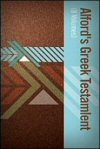
The Greek Testament (8 vols.)
- Author: Henry Alford
- Edition: Fifth edition
- Publication Date: 1863
- Volumes: 8
- Pages: 3,478
The Greek Testament, by Henry Alford ranks among the most important and authoritative works on the Greek text of the New Testament. In addition to Alford's Greek text, this massive work includes detailed grammatical, literary, lexical, and textual analysis of nearly every Greek word in the New Testament, along with comprehensive linguistic and idiomatic notes.
The Greek Testament represents an epochal shift in New Testament exegesis. Alford's approach to the Greek text is primarily textual and philological, unlike the purely homiletical and theological approach which previously dominated English language commentaries. This shift in approach not only changed the method of New Testament exegesis, it also altered the role of commentaries. Through The Greek Testament, Henry Alford made a scholarly and textual approach to the Bible widely accessible. He introduced German biblical criticism to the English-speaking world, thereby making a lasting impression on the scholarly approach to biblical translation and interpretation.
The 8-volume Logos edition of The Greek Testament contains Henry Alford's original four volumes, which includes the prolegomena Alford wrote at the beginning of each volume. The prolegomena discuss the critical apparatuses and contain introductory notes on the historical, textual, and linguistic issues that pertain to the Greek text of each book. In these prolegomena, Alford also discusses his method of textual criticism, and he evaluates at length the textus receptus and Tischendorf edition of the New Testament and the historical approach to textual criticism.
When I'm stumped with a … grammatical or syntactical or logical [question] in Paul, I go to Henry Alford. Henry Alford … comes closer more consistently than any other human commentator to asking my kinds of questions.
—John Piper
An invaluable aid to the critical study of the text of the New Testament.
—Charles Spurgeon
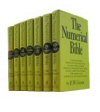
The Numerical Bible (7 vols.)
- Author: Frederick W. Grant
- Publisher: Loizeaux Brothers, Inc.
- Volumes: 7
- Pages: 3,801
Many prominent numbers from the Bible—such as 666, 7, 12, 40—have entered the broader cultural consciousness. But what do they mean? And what does the Bible really say about them? In the 7-volume Numerical Bible, Frederick W. Grant surveys the structure and symbolism of Scripture, showing that the Bible is not comprised of piecemeal literary fragments and forgeries, but that its structure and symbolism reflects the careful intentions of divine inspiration.
In The Numerical Bible, Grant shows that the Bible is organized in much the same way as nature. The precision of numbers and the laws of mathematics, which undergirds the order of the universe, also undergirds the order of Scripture. Like the rest of the nature, Scripture exhibits traits of order, structure, and symbol. In fact, the numbers and the very structure of the Bible contain elements of divine revelation.
How do we discern the voice of God in the patterns, structures, and numerical symbols found throughout Scripture? In his attempt to answer this question, Grant’s exploration of numbers in The Numerical Bible launched the modern fascination with biblical symbolism and profoundly influenced the development of dispensational thought. Grant also provides his own translation of the Bible—noteworthy in its own right—along with notes and critical commentary. Notable authors such as Tim LaHaye and Hal Lindsey and famous preachers such as Harry A. Ironside are indebted to Grant’s interpretation of Scripture and his careful analysis of biblical structure and symbolism.

Biblical Commentary on the New Testament (6 vols.)
- Author: Hermann Olshausen
- Translator: A.C. Kendrick
- Publisher: Sheldon, Blakeman, & Co.
- Volumes: 6
- Pages: 3,694
Hermann Olshausen’s Biblical Commentary on the New Testament—a penetrating chapter-by-chapter commentary—investigates in detail the important historical, textual, and interpretive issues of the entire New Testament. In these volumes, Olshausen discusses the leading critical points and unfolds the rich doctrinal and practical teachings of the New Testament. He also carefully traces the history of canonization and the entire history of interpretation. This commentary set also includes Olshausen’s 100-page treatise, “The Genuineness of the Writings of the New Testament,” a valuable introduction the central issues at stake in the interpretation of the New Testament.
In his Biblical Commentary on the New Testament, Olshausen writes at length on historical and authorship issues, linguistic and textual issues, and the New Testament use of the Old Testament. His commentary recognizes the organic unity of the entire Scriptures and the role of the Holy Spirit in its writing and interpretation, yet he encourages the use of historical and critical investigation of Scripture. In this way, Olshausen anticipates the debate over infallibility, inspiration, and inerrancy later taken up by B.B. Warfield and the generations of Reformed and evangelical biblical scholars that followed.
Although his New Testament commentary is rich with scholarly insight on textual, historical, and linguistic issues, his main goal of explaining the theological meaning of Scripture for ordinary readers remains throughout each volume of the commentary. That makes Olshausen’s Biblical Commentary on the New Testament eminently useful for scholars; yet lay readers will profit from its readability. Olshausen’s pivotal position in the history of biblical scholarship—serving as a bridge between eighteenth century Protestant orthodoxy and the rise of nineteenth century liberalism and fundamentalism—also make him important for historical studies.
The Commentaries of Olshausen are remarkable for their union of the results of critical learning with devout feeling, and an insight which takes up very effectively the train of thought in the apostle or evangelist. In this last respect he approaches Calvin.
—Charles Spurgeon

Gnomon of the New Testament (5 vols.)
- Publisher: T & T Clark
- Author: Johann Albrecht Bengel
- Volumes: 5
- Pages: 2,706
The Gnomon of the New Testament was written in 1742 by Johann Albrecht Bengel and is the result of twenty years’ labor. Bengel’s Gnomon awakened a fresh interest in the study of the New Testament. The Gnomon of the New Testament is still one of the books most valued by expositors of the New Testament.
He includes the principles of interpretation from Scripture to draw out of it everything that it contains, in conformity with grammatico-historical rules and without being hampered by dogmatical considerations. This 5-volume set contains Bengel’s commentary on each of the books in the New Testament.
While Gnomon may not be a very well-known word, its meaning helps us understand why Bengel titled his work Gnomon of the New Testament. One of the definitions of Gnomon is "the raised part of the sundial that casts the shadow." While the basic function of a sundial is simple, its function serves the greater purpose of telling time and guiding our day. In the same way the sundial serves a purpose in our lives, knowing the New Testament (as well as the entire Bible) is imperative for every Christian.
It is the Scholar's delight! Bengel condensed more matter into a line than can be extracted from pages of other writers.
—C.H. Spurgeon, preacher, New Park Street Church, London, England
...a marvel of condensation and spiritual insight, must always remain a classic.
—Philip Schaff, Protestant theologian

The Expositor’s Bible (6 vols.)
- Editor: William Robertson Nicoll
- Volumes: 6
- Pages: 5,410
A recognized standard of expository commentaries written by twenty-nine eminent scholars who were also preachers, representing every important branch of Protestantism. The Expositor’s Bible may thus be regarded as an interdenominational exposition demonstrating agreement on the profound realities and essentials of the Christian Faith.
The inception of this work took place at a time when critical and historical scholarship had arrived at mature and reliable conclusions concerning the text and truth of the Bible. What had been regarded as subversive of the Christian faith was now accepted without question. To be sure, there have been changes and even modifications in the attitude toward certain subjects, but the general consensus of Biblical scholarship has not been thereby affected. None of the results has in the least undermined the accepted view of the Church that the Bible is the Revelation of the spiritual life, imparted "by divers portions and in divers manners," and marked by energy, variety and adaptability. The Bible continues to occupy its place of finality as the supreme Authority on Religion and Morals. This is the basis on which The Expositor’s Bible was written.
This notable work was conceived and carried out by that genius among editors, Sir William Robertson Nicoll, C.H., D.D., LL.D. He had an exceptional knowledge of religious and literary, of theological and philosophical, thought. He understood what were the most urgent needs of the church as to spiritual enlightenment, for the better exercise of the Church's mission in advancing the Kingdom of Christ to earth's remotest bounds.
—Oscar L. Joseph, Litt. D.
If you can locate the six-volume edition of the Expositor’s Bible, buy it immediately! It takes up less space than the original fifty-volume set, and not everything in the original set is worth owning. Samuel H. Kellogg on Leviticus is a classic; so is Alexander Maclaren on the Psalms and on Colossians.
—Warren W. Wiersbe, A Basic Library for Bible Students
This set, originally published in 1903, contains expositions by both conservative and liberal theologians. The most important works are by Dod (Genesis), Chadwick (Exodus and Mark), Kellogg (Leviticus), Blaikie (Joshua, I and II Samuel), Adeney (Ezra, Nehemiah and Esther), Maclaren (Psalms), Moule (Romans), Findlay (Galatians and Ephesians), Plummer (Pastoral Epistles and the Epistles of James and Jude), and Milligan (Revelation.)
—Cyril J. Barber, The Minister’s Library

The Expositor’s Greek Testament (5 vols.)
- Publisher: George H. Doran Company
- Editor: William Robertson Nicoll
- Volumes: 5
- Pages: 3,342
The 5-volume Expositor’s Greek Testament ranks among the most important commentaries on the Greek text of the New Testament from the 19th century, drawing from the scholarship of twenty contributors under the editorship of William Robertson Nicoll. In addition to the Greek text, this massive reference work contains textual, literary, and grammatical commentary on nearly every Greek word in the entire New Testament. The Expositor’s Greek Testament also includes lengthy introductions to each of the books in the New Testament, surveying the literary and interpretive history, along with an introduction to the historical context of each book and an extensive bibliography.
. . . the five volumes of the old Expositor’s Greek New Testament are still worth owning and reading, along with more recent works. . .
—D.A. Carson
. . . the Expositor’s Greek Testament will rank as one of the best commentaries in English. . .
—Review of Theology and Philosophy

A Commentary on the New Testament from the Talmud and Hebraica (4 vols.)
- Author: John Lightfoot
- Publisher: Oxford University
- Volumes: 4
- Pages: 1,634
John Lightfoot’s Commentary on the New Testament from the Talmud and Hebraica uses rabbinical literature to comment on the text of the New Testament, and to help modern readers understand the textual background from within the framework of Jewish literature. Lightfoot makes full use of Hebrew and Aramaic literature to provide thorough commentary on the New Testament. He uses Jewish sources not only to illuminate textual matters, but also the social and cultural context of the people, places, and events in the New Testament. This important work is meticulously written and has served as a model for synthesizing the New Testament with Jewish literature in the four centuries since its first publication. Lightfoot’s commentary covers the Gospels, Acts, portions of Romans, and 1 Corinthians.
With the Logos Bible Software edition of John Lightfoot’s Commentary on the New Testament from the Talmud and Hebraica, all Scripture references are linked directly to the original language texts and English translations in your library. Double-clicking on any word in any language—Greek, Hebrew, Latin, or Aramaic—automatically opens your lexicons and searches for a match. The entire text of Lightfoot’s Commentary is fully searchable, letting you locate specific verses, topics, or words within the entire commentary. Results from Lightfoot’s Commentary will also appear when you run searches across your entire library, helping you find references, commentary, or other details you wouldn’t find otherwise. That makes the Logos Bible Software edition the premiere edition for students and scholars, and for anyone interested in understanding the New Testament from the context of Jewish literature.
First written in Latin, A Commentary on the New Testament from the Talmud and Hebraica was first published between 1658 and 1674, and reprinted as a whole in 1675, 1686, and 1699. The first English translation was published anonymously in 1684. It was reprinted in 13 volumes between 1822 and 1825 by John Rogers Pitman—an edition popular in the middle part of the nineteenth century. By the 1850s, however, the Pitman edition was becoming “scarce and expensive,” and work on a new edition was begun. The resulting work was published in 1859 by Oxford University. It remains the standard translation of Lightfoot’s work to this day, and has been reprinted numerous times—most recently by Baker in 1979 and Hendrickson in 2004. This edition underlies the electronic edition planned by Logos Bible Software.
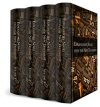
Wesley’s Explanatory Notes upon the Old and New Testaments (4 vols.)
- Authors: John Wesley
- Volumes: 4
- Pages: 3,438
Founder of the Methodist movement, celebrated preacher, abolitionist, and gifted writer; the significance John Wesley can hardly be overestimated. Like his friend and contemporary George Whitefield, John Wesley took the proclamation of God's Word beyond the church and into the world. He preached wherever a group of people would listen— a field, a cottage, a town hall—and he did it every day. Although he never officially left the Church of England, the Methodist movement that he planted quickly spread across England, Scotland, Wales, Ireland, and to colonial America. Today, over seventy-million people belong to Methodist organizations in the Wesleyan tradition all over the world.
Wesley’s Explanatory Notes on the Old and New Testaments will give every reader essential information about the Bible. The cardinal doctrines of the Christian life are set forth by Mr. Wesley in plain and simple language. The scholar, the preacher, the teacher or the student will find a wealth of fresh and invigorating material in this rare set of books.
With the Logos Bible Software edition, each volume in in this collection is fully integrated with the other resources in your Logos library, including Bibles, maps, dictionaries, and numerous other Bible study tools. The Logos edition also allows you to perform powerful searches and word studies. Scripture references are linked to the wealth of language resources in your digital library. This makes Wesley's Explanatory Notes on the Old and New Testaments more powerful and easier to access than ever for reading, sermon preparation, research, and Bible study.
As truly an apostolic man, in saintly devotion, strength of character, and influence among men, Wesley ranks in history with Savonarola, Wycliffe, Huss, Luther, Calvin, and Fox: all era making men.
—The Friends’ Review

A collection rich in biblical analysis and wisdom, The Analyzed Bible is an excellent commentary for anyone wishing to obtain a more expansive knowledge of the Bible. This Bible commentary laid an early foundation for later Fundamentalist, conservative, Bible-centric exegesis. Pastoral and eminently applicable, this extensive commentary brings illumination to the theological mysteries of the Bible.
Morgan, long-time pastor of Westminster Chapel in London and mentor of Martyn Lloyd-Jones, made it his aim to share his wealth of knowledge and years of scholarly research as simply as possible, in order to make his works accessible to all. His words have inspired and encouraged thousands in the past century, and will continue to provide excellent, biblically-based hope to all who read his works.
G. Campbell Morgan (1863-1945), a contemporary of Rodney “Gipsy” Smith, preached his first sermon at age 13. He was the pastor of Westminster Chapel in London from 1904-1919 and then from 1933-1943, pausing for a brief period between those timeframes to work at Biola in Los Angeles. In 1939, he began to mentor Martyn Lloyd-Jones, who would eventually become his successor. Morgan’s essay entitled The Purposes of the Incarnation are included in a collection called The Fundamentals—a set of 90 essays that is widely considered to be the foundation of the modern Fundamentalist movement.
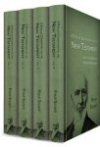
A Popular Commentary on the New Testament (4 vols.)
- Editor: Philip Schaff
- Publishers: T&T Clark and Charles Scribner’s Sons
- Publication Date: 1879–1890
- Pages: 2,270
- Volumes: 4
Aiming to produce both an international and interdenominational commentary that unifies Christians, Philip Schaff worked closely with publishers T&T Clark in Edinburgh and Charles Scribner’s Sons in New York and with almost a dozen biblical professors and scholars from around the globe to produce a New Testament commentary that could be read and enjoyed by Christians of any denominational calling. His project was a great success, resulting in solid exegesis and practical applications for nearly every verse in the New Testament. With familiar classic authors like Marcus Dods, William Burt Pope, and Philip Schaff, this commentary is essential to any Logos library looking for interdenominational depth.
Over a hundred years later, this commentary is still referenced in modern commentaries and textbooks. Filled with maps, charts, pictures, graphs, and images, this commentary appeals to the aesthetic mind as much as to the academic. Discover the timeless, interdenominational teachings of this popular, hard-to-find English commentary.
- Philip Schaff (DD, New York)
- Matthew B. Riddle (DD, Hartford University)
- William Milligan (DD, University of Aberdeen)
- William F. Moulton (DD, The Leys College, Cambridge)
- John Saul Howston (DD, Cambridge)
- Donald Spence (Rector of St. Pancras)
- David Brown (DD, Free Church College, Aberdeen)
- Joseph Rawson Lumby (DD, Magdalene College, Cambridge)
- Marcus Dods (DD, University of Glasgow)
- Edward Hayes Plumptre (DD, King’s College)
- J. Oswald Dykes (DD, London)
- Joseph Angus (DD, Regent’s Park College)
- Paton J. Gloag (DD, Galashiels)
- Stewart Dingwall Fordyce Salmond (MA, Free Church College, Aberdeen)
- William Burt Pope (MA, Didsbury College)
- Arnold Guyot (PhD, LLD, Princeton)
- William M. Thomson (DD, Beirut)
- William H. Thomson (MD, New York)
Philip Schaff was born on January 1, 1819 in Chur, Switzerland. He was educated in Germany at Tübingen, Halle, and Berlin, where he studied under August Neander. In 1843, moved to America and became professor of church history and biblical literature at the German Reformed Theological Seminary in Mercersburg, Pennsylvania.
During this time, he edited a hymnal, worked on the liturgy in the German Reformed Church, and edited a translation of the Heidelberg Catechism. The English translation of his History of the Apostolic Church appeared in 1853. Schaff remained at Mercersburg until 1863, when the Civil War forced the seminary to close.
In 1870, Schaff became a professor at Union Theological Seminary. During his tenure there, he held the chair of theological encyclopedia and Christian symbolism, the chair of Hebrew and cognate languages, the chair of sacred literature, and the chair of church history. He also served on the committee that translated the American Standard Version.
In addition to the four volumes in this collection, throughout his lifetime Schaff also authored or edited the History of the Christian Church, Early Church Fathers, and the New Schaff-Herzog Encyclopedia of Religious Knowledge. He is remembered as one of America’s foremost church historians of the nineteenth century.
Schaff died October 20, 1893.
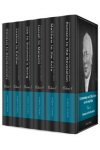
Adam Clarke’s Commentary on the Bible (6 vols.)
- Author: Adam Clarke
- Publisher: G. Lane & P.P. Sandford
- Pages: 5,523
- Volumes: 6 (in one resource)
Adam Clarke remains one of the most influential Wesleyan-Arminian theologians of its early days, and his six–volume whole Bible commentary, which defined Methodist scholarship, remains one of the most revered and used commentaries today. Taking almost 40 years to complete, this theological masterpiece is a cornerstone in Methodist biblical scholarship and a go-to resource for countless Christians today. The Logos edition presents this work in one digital volume for ease of use.
Adam Clarke (1760–1832) was one of the most influential Methodists to follow John Wesley. Clarke served an unprecedented three terms as president of the Wesleyan Conference, and his writings were particularly influential in the development of the doctrine of sanctification in the American Holiness movement. His 6–volume whole Bible commentary which defined Methodist scholarship remains one of the most revered and used commentaries today.
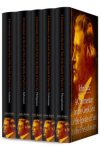
Eadie’s Commentaries on the Greek New Testament (5 vols.)
- Author: John Eadie
- Publication Date: 1869–1884
- Pages: 2,156
- Volumes: 5
Get classic theological and exegetical exposition from early Scottish Presbyterian theologian John Eadie. These commentaries represent his most well-respected work, and contributed to a revival in biblical scholarship and criticism. Covering seven of Paul’s letters to the early church, these volumes explore the core message of Paul’s teachings, bringing clarity to confusing messages in the most theologically significant works of the major theologian.
You’ll get:
- A Commentary on the Greek Text of the Epistle of Paul to the Galatians
- A Commentary on the Greek Text of the Epistle of Paul to the Ephesians
- A Commentary on the Greek Text of the Epistle of Paul to the Philippians
- A Commentary on the Greek Text of the Epistle of Paul to the Colossians
- A Commentary on the Greek Text of the Epistles of Paul to the Thessalonians
John Eadie was born on May 9, 1810 at Alva, Stirlingshire, in Scotland. He spent many childhood years as the assistant to Rev. Browning, a local preacher. He studied at the University of Glasgow, where he excelled at the classical languages. Upon graduation, Eadie became an active member of the Succession Church, an influential nineteenth century Scottish Presbyterian denomination, which was later renamed the United Presbyterian Church.
In 1835, Eadie became a minister at the Cambridge Street Church is Glasgow. The church later moved to Lansdowne Crescent in 1863. In addition to his pastoral duties, Eadie became a professor of biblical literature and hermeneutics at the United Presbyterian Divinity Hall, and he received his D.D. from St. Andrews in 1850. During his industrious career at the Divinity Hall, Eadie penned the five New Testament commentaries for which he is best known. His writings contributed to the growing interest in biblical criticism and hermeneutics. Eadie died on June 3, 1876.

Henry Cowles Commentary Series (16 vols.)
- Author: Henry Cowles
- Publisher: D. Appleton and Company
- Publication Date: 1868–1887
- Pages: 6,597
- Volumes: 16
The 16-volume Henry Cowles Commentary Series strives to make the original words of Scripture understandable to today’s church. Cowles aims for sound interpretation, bringing out the truest sense of the passage, while illuminating its historical context, its audience, and the intent of its author. In this way, Cowles’ commentary affirms that the Bible is a practical book, useful for Christians of every time and place.
Each volume begins with a lengthy introduction that provides contextual information. Much of the commentary on the text is verse-by-verse, with the exception of the Pentateuch and historical books, which are treated topically in chronological order. Although Cowles makes full use of his expertise in the original languages by explaining the literary and linguistic background as necessary, this commentary series is accessible for English-only Bible study. It is beneficial for both pastors and scholars, as well as laypersons.
Many of the volumes in the Henry Cowles Commentary Series also contain appended essays on theological topics relevant to themes in the book, including an essay on atonement in the volume on Hebrews, an essay on prophecy and eschatology appended to Revelation, an essay on theodicy appended to the volume on the Pastoral Epistles, and several others.
Henry Cowles was born in Connecticut. He graduated from Yale in 1826 and from the seminary at Yale in 1828, where he was honored as the salutatorian of his class. He later received his DD from Hillsdale College.
Upon graduation from Yale, Cowles became a professor at Oberlin College. He served as professor of languages from 1835 to 1837, professor of ecclesiastical history and pastoral theology from 1837 to 1840, professor of Old Testament literature from 1840 to 1848, and a lecturer on prophecy and biblical introduction from 1869 to 1878. Cowles was influential at Oberlin during its early years, and joined a circle of notable Oberlin professors which included John Morgan, Charles Finney, and John Cowles. He also served as editor of the Oberlin Evangelist from 1844 to 1862, where he promoted the efforts of the college and helped spread its theological ideals. While at Oberlin, Cowles advocated for African Americans during the decades preceding the Civil War, and promoted racial equality not only in academic settings, but also in his publications.
In 1863, at the age of 60, Cowles began writing his commentary on the Bible, and worked on the project nearly every day for 17 years. He also spoke and wrote widely on prophecy, biblical interpretation, and the practical application of the Bible for ordinary readers. He died in 1881.
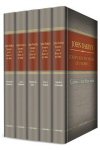
John Darby’s Synopsis of the Books of the Bible (5 vols.)
- Author: John Nelson Darby
- Publisher: Loizeaux Brothers
- Pages: 3,024
- Volumes: 5
Read chapter-by-chapter commentary on the entire Bible along with one of the founding figures and most influential thinkers of dispensationalism—John Darby.
John Darby’s 5-volume Synopsis of the Books of the Bible has played a central role in the emergence of fundamentalism and the development of American Christianity. As the intellectual and theological forerunner of well-known preachers such as Dwight Moody and contemporary authors such as Tim LaHaye, John Darby’s influence is profound. From a dispensational interpretation of the Bible, to the contemporary understanding of the rapture and the End Times, the prominent features of evangelical theology are indebted to Darby’s influence.
Born in London in 1801, John N. Darby attended Westminster School and Trinity College, where he graduated in 1819. Darby became a lawyer, but practiced law for only one year, since he felt the nature of his profession was incompatible with his religious beliefs. He was ordained as a deacon in the Church of England in 1825, and became a priest in 1826.
As a priest, Darby became quickly disenchanted by what he perceived as the empty ritual and corrupt bureaucracy prevalent in the Church of England. He resisted the necessity of clergy, asserting that their role contradicted New Testament teaching, and claimed that the presence of clergy implicitly denied that the Holy Spirit speaks to laypersons. He gathered with other like-minded dissidents to form the movement which later became known as the Plymouth Brethren, and he formally left the Church of England in 1832.
Later in his lifetime, Darby travelled extensively. He delivered a series of lectures in Lausanne, Switzerland in 1837, and made seven visits to the United States and Canada, where he influenced individuals such as Dwight Moody and A.J. Gordon and initiated the Bible conference movement. Darby’s influence is also found in the writings of C.I. Scofield, Charles Henry Mackintosh, and William E. Blackstone, whose writings contributed to the rise of fundamentalism in America during the early twentieth century. More recently, Darby’s impact can be felt in books by Hal Lindsay, Tim LaHaye, and Jerry Jenkins.

Matthew Poole’s Commentary on the Holy Bible (3 vols.)
- Author: Matthew Poole
- Publisher: Robert Carter and Brothers
- Pages: 3,069
- Volumes: 3 (in one resource)
Matthew Poole was one of the most influential Puritan ministers and thinkers of the seventeenth century. A Protestant clergyman in England during a time of religious persecution, he fled the country due to threats of assassination. Poole was known as a devoted Christian, full of integrity and perseverance, in addition to being a great theologian and writer. His commentary series has been a standard for over four hundred years and continues to be a trusted resource for pastors and laity. Poole’s exposition offers insight on the entire Bible, going verse-by-verse. He includes a brief introduction and summary for each chapter of the Bible, as well as each book. Poole’s commentary is characterized by questions and answers, cultural context, historical impact, and cross-references. He provides practical and readable information, highly applicable for pastors and those seeking more context and information for Scripture.
This beloved commentary series will be of great benefit to the every-day Bible reader, as well as pastors and seminary students. It includes an introduction to the series by friends of Matthew Poole, who published his works after his death. Many theologians have used Poole’s commentaries for their own study, including Charles Spurgeon. This edition uses the same edition published in 1853 in New York by Robert Carter and Brothers, the same work used in the Hendrickson edition, which is the set standard.
Matthew Poole was born in 1624 in England. He became a minister at age twenty-four after seminary. Poole was known for being consistently cheerful and a deep theological thinker. He completed two works during his lifetime, Synopsis Criticorum and Commentary on the Holy Bible (3 vols.). Poole ministered during the Act of Uniformity in 1662 and underwent great persecution for not joining the Church of England, including attempts on his life. He escaped to Amsterdam and died there in 1679, supposedly from being poisoned. His work continues to be influential for today’s readers of the Bible.
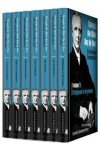
Through the Bible Day by Day: A Devotional Commentary (7 vols.)
- Author: Frederick Brotherton Meyer
- Publisher: American Sunday School Union
- Publication Date: 1914–1918
- Pages: 1,525
- Volumes: 7 (in one resource)
This seven-volume devotional commentary by renowned preacher Frederick Brotherton Meyer divides Scripture into small, manageable sections and offers Meyer’s insightful reflections on each section. As Meyer himself states in the introduction, “There is . . . nothing more vital to an accurate knowledge of the Bible than the good old practice of reading it thoughtfully and steadily through with such brief notes as this [collection] provides.”
Meyer offers practical application for allowing the Word of God to penetrate through to your daily life. He provides an introduction and outline for each book in the Bible, and review questions are included “to enable readers to sum up and better preserve in memory what they have learned.” Each volume in the collection also contains Illustrations of Bible scenes by celebrated artists and contemporary artists of the day.
Frederick Brotherton Meyer (1847–1929) was a Baptist pastor and evangelist in England. He was educated at Brighton College, University of London, and Regent’s Park College. Meyer was well known for his friendship with Dwight L. Moody, and became involved with ministry work on both sides of the Atlantic. Upon his death he was described as “the archbishop of the Free Churches.” He wrote over 40 books, including Christian biographies and devotional commentaries on the Bible, such as The Bells of Is, Christ in Isaiah, Abraham: or, the Obedience of Faith, and Elijah: and the Secret of His Power.
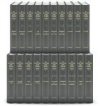
The Great Texts of the Bible (20 vols.)
- Author: James Hastings
- Publisher: T&T Clark and Charles Scribner’s Sons
- Publication Date: 1910–1915
- Pages: 9,724
- Volumes: 20
This extensive twenty-volume collection is a commentary of different essays, sermons, anecdotes, and interpretations of various Scripture passages. Scottish Presbyterian minister James Hastings compiled The Great Texts of the Bible in the early twentieth century. Hastings provides helpful and personal observations on Scripture texts throughout the entire Bible, resulting in over nine thousand pages of material. He presents word meanings, expositions, poetry and quotations from many authors and thinkers, as well as a list of references and literature used for each text. Each section is outlined into major topics and points, offering readable commentary.
The Great Texts of the Bible is perfect for pastors and anyone wanting expository notes on key passages of Scripture. Hastings’s work is encouraging, clear, and well-researched. Each volume contains both a topical and a Scripture passage table of contents for reference.
James Hastings was born in 1852 in Scotland. He was a Presbyterian minister and theologian. Hastings was the editor of many Biblical works, including: Dictionary of the Bible, Dictionary of Christ and the Gospels, Encyclopaedia of Religion and Ethics, and The Great Texts of the Bible. He died in 1922.

The Lutheran Commentary (12 vols.)
- Series Editor: Henry Eyster Jacobs
- Publisher: The Christian Literature Company
- Publication Date: 1895–1898
- Pages: 4,885
- Volumes: 12
“The name ‘Lutheran’ ought always, in the sphere of scholarship, to designate first of all devotion to exegetical study.” —from the introduction
Luther, Melanchthon, and Chemnitz, while being theologians, were above all else exegetes, drawing the mysteries of Christianity prayerfully and resourcefully forth from the Holy Scriptures. Their calling as expounders of the Scriptures is a time-honored tradition in ecclesiastical Lutheran heritage that still proves itself today. The Lutheran Commentary is a product of that tradition, reverently exegeting the biblical text—not for the sake of generating more systematic theologies and dogmatic treatises, but for a closer devotion to the God who gave us the Scriptures. The rich and lively expositions contained in this commentary were written to stimulate the mind, challenge the conscience, and grow the heart—of Christians of any creed or confession.
Henry Eyster Jacobs (1844–1932) was an American educator and a Lutheran theologian born in Gettysburg, Pennsylvania. He graduated from Pennsylvania College in 1862 and from the Lutheran Theological Seminary in 1865. He took up the position of professor at Pennsylvania College in 1870, and then was appointed professor of systematic theology at the Lutheran Theological Seminary in Mount Airy in 1894. In 1920, he became president of the seminary. He published several histories of Lutheranism and commentaries on the New Testament, and, with John A.W. Haas, published The Lutheran Cyclopedia in 1899.
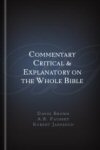
Commentary Critical and Explanatory on the Whole Bible
- Author: David Brown, A.R. Fausset and Robert Jamieson
- Publisher: Logos Bible Software
- Publication Date: 1997
This renowned set has earned a reputation as trustworthy, conservative, devout, and practical. JFB covers every chapter in the Bible, with a fine balance of learning and evangelical devotion. The comments are based on the original languages but aren't overly technical, so laypeople as well as pastors and students will benefit from the sound scholarship and apt insights.
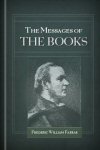
“My desire,” says F.W. Farrar in the preface, is “to point out the general form, the peculiar characteristics, the special message of the Sacred Books one by one, because I had found by experience, both as a teacher and as a clergyman, that this method of studying each part of Scripture as a complete whole was much less common than could be desired.” In The Messages of the Books, Farrar sets out to apply this book-by-book method to the New Testament. He looks at the 27 books of the New Testament one by one, giving preference to the overall structure and message of each book and to any critical issues that bear on the book as a whole. The book also includes a chapter that looks at the nature of the Gospels, a chapter that looks at the nature of the epistle as it is used in the New Testament, and a chapter that looks at specifically at St. Paul’s epistles as a group.
Frederic William Farrar (1831–1903) was born in Bombay, India. He attended King William’s College, King’s College, London, and Trinity College, Cambridge. Farrar was canon of Westminster and later rector of St. Margaret’s, Westminster. Later he became the archdeacon of Westminster Abby and Dean of Canterbury. Known for his preaching, Farrar was also a prolific author. He wrote works on Scripture and theology along with novels and children’s books.
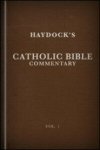
Haydock’s Catholic Bible Commentary
- Author: George Leo Haydock
- Publisher: Edward Dunigan and Brother
- Publication Date: 1859
Haydock’s Catholic Bible Commentary was assembled by Rev. George Leo Haydock (1774-1849) and published as notes to the Douay-Rheims translation of the Bible in numerous editions between 1811 and 1859. The 1859 edition has remained in print until the present, an indication of the work’s continuing importance. It is primarily an assemblage of sayings of the fathers and of medieval exegetes and theologians, but includes more modern interpretations. Haydock’s commentary is widely considered a Catholic classic which directly and accurately expresses the Church’s traditional interpretation of biblical passages.

Biblical Encyclopedia and Museum (15 vols.)
- Series Editor: James Comper Gray
- Publisher: S.S. Scranton Co.
- Publication Date: 1900
- Pages: 5,772
- Volumes: 15
First published in 1900, these fifteen volumes provide notes for the entire Bible, specifically for pastors, students, and teachers of Scripture. This set is a practical and compelling overview of the Bible. Author James Comper Gray gives readable notes relating to various topics, such as historical background, context, definitions of terms, and Scripture cross-references. Biblical Encyclopedia and Museum: A Collection of Notes, Explanatory, Homilectic, and Illustrative, on the Holy Scriptures also features quotes from other theologians and Biblical thinkers, as well as literary figures throughout history, including Shakespeare and John Milton. Each volume contains an introduction, synopsis, and chronology. An index for the whole collection is provided in the final volume.

Expositions of Holy Scripture (33 vols.)
- Editors: Alexander Maclaren, George Eayrs, and W. Robertson Nicoll
- Pages: 12,570
- Volumes: 33
Alexander MacLaren is ranked among the expert expositors of the nineteenth century. His life was passionately devoted to the study of Scripture and to the pulpit ministry. His career was marked by a faithful commitment to both his church community and to the integrity of the Baptist tradition. His writings and reputation were world renown, and his skill with the English language and ability to handle the biblical languages has inspired students of Holy Scripture for decades. Even to this day, MacLaren is considered to be a prime exemplar of expository preaching.
The sermons included in the thirty-two volumes of Expositions of Holy Scripture cover sixty-four of the sixty-six books included in the Protestant canon of Scripture. The 1,500+ sermons are arranged in canonical order making this collection an expository commentary on most of the Bible. MacLaren's unique ability to handle the original languages of Scripture and his skilled writing style draw the reader deep into the life of Holy Scripture.
Alexander MacLaren (1826-1910) was a Baptist preacher in England. He was educated at Stepney College, London, where he studied Hebrew and Greek and learned the discipline of expository preaching. He presided over Portland Chapel in Southhampton for twelve years, Union Chapel in Manchester for forty-five years and was twice elected as President of the Baptist Union. His ministerial career spanned nearly sixty-five years from 1842–1905. MacLaren's passion for the pulpit ministry was only surpassed by his pursuit of a life hid with God in Christ. He was revered by all who heard him speak and has served as an exemplar of expository preaching for all who have come after him.

The Complete Works of Thomas Manton (22 vols.)
- Author: Thomas Manton
- Publisher: James Nisbet & Co.
- Volumes: 22
- Pages: 10,981
The Complete Works of Thomas Manton contains all of Manton’s writings and treatises, along with nearly one thousand sermons on law and grace, justification and sanctification, faith and works, and other theological topics central to the theology of the Reformation and the spirit of Puritanism. Thomas Manton devoted his life to preaching and teaching, and devoted his sermons to a verse-by-verse exposition of Scripture, uncovering the specific meaning for his listeners. He preached hundreds of sermons on Romans 8, Psalm 119, Ephesians 1, Hebrews 11, the book of 1 John, the prayer of Jesus in John 17, and countless other sermons from nearly every book of the Bible—often devoting multiple sermons to a single verse of Scripture.
Thomas Manton was born in 1620 in Somerset, England. He attended Oxford University, and graduated in 1639. At age 19, he was ordained as a deacon, and became the town lecturer of Collumpton in Devon. He began preaching at St. Mary’s Church in 1644, and became lecturer at Westminster Abbey in 1656. He also participated in the Westminster Assembly and preached before Parliament.
In 1662, Manton was forced to leave the Church of England for nonconformity. He was imprisoned—as were many Puritans—in 1670 for preaching illegally. He also crafted the Fundamentals of Religion with Richard Baxter during this time. Throughout his lifetime, Thomas Manton was a devoted follower and ardent defender of Reformed theology. He died in 1677.
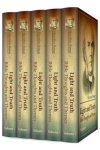
Light and Truth Bible Thoughts (5 vols.)
- Author: Horatius Bonar
- Publisher: James Nisbet & Co.
- Volumes: 5
- Pages: 2,085
Originally titled Light and Truth: Bible Thoughts and Themes, these five works follow the canonical order of the Bible and trace its thought and message of hope and redemption. Bonar selects major passages from the Bible and provides very practical and personal meditations on each passage, drawing the reader into a deeper and more personal understanding of the Word. Each meditation is immediately applicable and eminently teachable, allowing you to take Bonar’s devotional thoughts on the Bible to your small group or congregation. Study with the insight of Horatius Bonar in a thorough study of the themes and applications of the major Bible passages.
Horatius Bonar was born and raised in Edinburgh, Scotland, in a family with a long history of ministry in the Church of Scotland. After graduating from the University of Edinburgh in 1838 (where he studied under Dr. Thomas Chalmers), Bonar was ordained and became pastor of the North Parish, Kelso, where he remained for 28 years. He joined the Free Church of Scotland after “the Great Disruption” of 1843, and in 1853 he earned a Doctor of Divinity degree from the University of Aberdeen. In 1867 he took over ministry duties at Chalmers Memorial Church in Edinburgh, and in 1883 he was elected Moderator of the General Assembly of the Church of Scotland. A prolific author, he wrote and edited numerous books, biographies, articles, poems, tracts, and over 600 hymns. Horatius Bonar died on May 31, 1889.
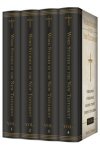
Vincent’s Word Studies in the New Testament (4 vols.)
- Author: Marvin R. Vincent
- Publisher: Charles Scribner’s Sons
- Publication Date: 1887
- Volumes: 4 (in one resource)
- Pages: 2,720
Marvin Vincent's Word Studies has been treasured by generations of pastors and laypeople. Commenting on the meaning, derivation, and uses of significant Greek words and idioms, Vincent helps you incorporate the riches of the New Testament in your sermons or personal study without spending hours on tedious language work. Written in a verse-by-verse format following the Greek New Testament, this resource essentially forms a commentary on each important word of the New Testament in versified order.
Marvin R. Vincent was Baldwin Professor of Sacred Literature in Union Theological Seminary, New York.
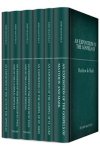
John MacEvilly Commentaries Collection (6 vols.)
- Author: John MacEvilly
- Publisher: M.H. Gill & Son and Benziger Brothers
- Publication Date: 1887–1902
- Volumes: 6
- Pages: 2,597
John MacEvilly’s commentaries offer a clear, Catholic, passage-by-passage interpretation of Sacred Scripture. With their combination of traditional exegesis and moral exhortation, MacEvilly’s works are widely used as devotional texts. Though originally intended for laymen, MacEvilly’s writings also quickly became textbooks in seminary education, with numerous editions printed. Each volume in this collection offers an introduction to the biblical text by MacEvilly and analysis of each chapter.
Commentary coverage includes all four Gospels, the Acts of the Apostles, the Epistles of St. Paul, and the Catholic Epistles.
John MacEvilly (1818–1902) was born in Ireland and attended the Seminary of Tuam and Maynooth College. He was ordained a Roman Catholic priest in 1842. He became bishop of Galway in 1857. He served as archbishop of Tuam from 1881 until his death in 1902.

The Expository Thoughts of J.C. Ryle (7 vols.)
- Author: J.C. Ryle
- Publisher: Robert Carter & Brothers
- Publication Date: 1859–1880
- Volumes: 7
- Pages: 3,116
J.C. Ryle’s Expository Thoughts series offers a spiritual approach to Scripture, written in an easy to understand manner for practical teaching and study. These seven volumes are an effective companion to the Gospels, with Ryle highlighting pertinent passages and offering useful insight into their significance and meaning. His interpretations are insightful, his observations are practical for daily Christian living, and his words reflect the great joy Ryle found in Scripture.
This series contains:
- Expository Thoughts on Matthew
- Expository Thoughts on Mark
- Expository Thoughts on Luke, vol. 1
- Expository Thoughts on Luke, vol. 2
- Expository Thoughts on John, vol. 1
- Expository Thoughts on John, vol. 2
- Expository Thoughts on John, vol. 3
J.C. Ryle (1816–1900) was educated at Christ Church, Oxford, where he was a Craven Scholar. He was ordained in 1841, and became the first bishop of Liverpool in 1880. Ryle was a prolific writer his entire life, publishing dozens of bestsellers that were translated into many languages.
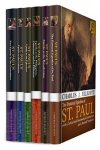
Examine the Pauline epistles in a variety of ways—grammatically, critically, and exegetically. Bishop Charles J. Ellicott approached these texts with a great reverence and a keen eye. Because of this, his commentaries on Paul’s epistles have remained classics.
Each commentary consists of the Greek text, a synopsis of the contents of each paragraph, special notes on the textual criticism of passages that require more than just a list of authorities, and a series of footnotes containing various readings together with the author’s own exegesis with alternative interpretations, including the reasons for and against each interpretation. At the end of each volume are new translations of the epistle, with footnotes indicating all important deviations from the established version, including numerous citations from other versions. The translation is not a paraphrase, but is designed to give the precise English words and idioms which the author regards as synonymous, or nearly synonymous, with the words and idioms of the original.
This series contains:
- St. Paul’s First Epistle to the Corinthians
- St. Paul’s Epistle to the Galatians
- St. Paul’s Epistle to the Ephesians
- St. Paul’s Epistles to the Philippians, Colossians, and to Philemon
- St. Paul’s Epistles to the Thessalonians
- The Pastoral Epistles of St. Paul
Charles John Ellicott (1819–1905) was an English theologian, dean of Exeter, and bishop of the sees of Gloucester and Bristol. He studied at Stamford School and St. John’s College, Cabridge, and was ordained in the Anglican Church in 1848. He is the author of several works on Christianity and the church, as well as commentaries on Paul’s Epistles. Ellicott died on October 15, 1905.

H.A. Ironside's Commentaries on the Bible (32 vols.)
- Author: H.A. Ironside
- Publisher: Loizeaux Brothers
- Publication Date: 1906–1952
- Volumes: 32
- Pages: 9,428
Inspired by Dwight Moody, Ironside comforted and challenged a generation of evangelicals during two world wars and an economic depression. He spoke to a lay audience, and made the Bible understandable and accessible to as many people as possible—and now, 32 of his volumes of biblical exposition and commentary are available to enlighten your Bible study and research. Covering 48 books of the Old and New Testaments, these commentaries stimulate the mind and capture the imagination, rich with anecdotes and illustrations that bring life to any ordinary Bible study.
Harry Allen Ironside, one of the twentieth century’s greatest preachers, was born in Toronto, Canada on October 14, 1876. Though his education stopped with grammar school, his fondness for reading and a retentive memory put his learning to use. His scholarship was recognized in academic circles when he received honorary degrees from Wheaton College and Bob Jones University and was invited as frequent lecturer at Dallas Theological Seminary. Dr. Ironside was appointed to the boards of numerous Bible institutes, seminaries, and Christian organizations. He also served as director of the Africa Inland Mission.
Ironside preached widely throughout the United States and abroad. He served as pastor of Moody Memorial Church from 1930 to 1948, and during his lifetime, he preached more than 7,000 sermons to over 1.25 million listeners.
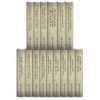
Collected Homilies of St. John Chrysostom
- Author: John Chrysostom
- Publication Date: 1839–1877
- Volumes: 15
- Pages: 7,692
Archbishop of Constantinople and influential early Church Father John Chrysostom was known for his eloquent preaching. His homilies were not written, but spoken to the people, often transcribed by listeners for wider distribution. Direct and personal in style, his teaching often targeted Christian involvement in the materialism and paganism surrounding the early church.
This collection contains hundreds of homilies from “the golden mouth.” Rich with practical examples and analogies, his homilies display his aptitude for reaching laypeople as well as developing complex theological substance that helped to formulate early Christian thought. Compiling 15 volumes that contain hundreds of homilies and discourses, this collection showcases Chrysostom’s lasting legacy, making it accessible and edifying for Christians today.
John Chrysostom (c. 347–407) was the archbishop of Constantinople and an influential Early Church Father. He was known for his oratorical skills and was given the epithet Chrysostom, or “golden-mouthed,” after his death. His homilies consistently emphasize care for the poor. He is one of the Three Holy Hierarchs, along with Basil the Great and Gregory Nazianzus. Both the Orthodox and Catholic churches recognize him as a saint and a doctor of the Church.
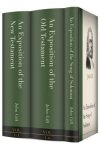
The Expositions of John Gill
- Author: John Gill
- Publication Date: 1809–1854
- Volumes: 10 (in three resources)
- Pages: 7,921
John Gill’s commentaries on the Bible helped solidify the shift in Reformed thinking in the eighteenth century. These expository commentaries are key for the study of the development of Baptist and Reformed theological exegesis, and a must for any student serious about studying the Reformed tradition.
Gill’s writings helped to define and encourage Reformed thinking in the eighteenth century. Considered to be the first major Baptist scholar, Gill continues to shape modern Calvinism. Although modern scholars debate about Gill’s role as the father of Baptist hyper-Calvinism, it cannot be denied that at the very least, he was a forerunner to that tradition. During his lifetime, Gill and his church backed the preaching and ministry of George Whitefield. His work represents not only essential eighteenth-century biblical scholarship, but a turning point in Reformed theology.
Gill’s commentaries are still widely used today by laity and pastors, being theologically sound and practical for daily study. Gill makes the Scripture accessible and applicable to the everyday reader, believing that sound doctrine impacts daily life. Containing over 7,000 pages, The Expositions of John Gill is an essential resource for any student of the Scriptures and of Reformed thinking. Perfect for the general reader, professors, and Bible scholars, these three volumes will enlighten, encourage, and stimulate thinking and application. The Logos edition makes study easy by linking with every Scripture reference to the Bibles in your library. With commentary on every book of the Bible, these 10 volumes of commentary have been combined into three volumes convenient volumes, allowing you to progress through your studies without disruption.
John Gill was born in 1697 in England. A Baptist clergyman, Gill was also a biblical scholar, learning Latin and Greek by age 11. He was also a fervent Reformed thinker, holding to the Five Points of Calvinism. Gill is considered by many to be the father of hyper-Calvinism. He was a preacher at the Strict Baptist Church for fifty–one years, which later became the Metropolitan Tabernacle, pastorate of Charles Spurgeon. Because of his considerable scholarship, Gill was given an honorary doctorate by the University of Aberdeen in 1748. He is most known for being the author of definitive academic works, including, The Doctrine of the Trinity Stated and Vindicated, The Cause of God and Truth, and A Body of Doctrinal Divinity, all of which are included in this collection. Gill died in 1771.
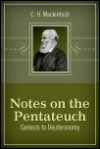
Notes on the Pentateuch: Genesis to Deuteronomy
- Author: C.H. Mackintosh
- Series: C.H. Mackintosh Collection
- Publisher: Loizeaux Brothers Publications
- Publication Date: 1973
- Pages: 928
For more than one hundred years, pastors, teachers, and students of the Bible have benefited from Mackintosh’s deeply devotional commentary on the first five books of the Bible. His reflections are borne out of prolonged reflection and pastoral sensitivity—not abstruse theological concepts or an abstract engagement of the text. Mackintosh coaxingly invites readers to place themselves within the stories of the Pentateuch and confront the issues faced by the characters—to walk the garden with Adam and Eve, to connive with Jacob, to travel with Joseph, and to wander with the Israelites from the bondage of Egypt to the freedom of the Promised Land. The Pentateuch expresses the most basic human sentiments, and exposes the tension between promises and fulfillment, good and evil, belief and deception. Mackintosh’s Notes on the Pentateuch shows how these books lay the groundwork for God’s redemptive history.
Man’s complete ruin in sin, and God’s perfect remedy in Christ, are fully, clearly, and often strikingly presented [in Mackintosh’s writings].
—Andrew Miller, a leader of the Plymouth Brethren movement
Charles Henry Mackintosh (1820–1896) was notable for his work in philanthropic work during the Irish Potato Famine which affected much of Ireland, Scotland, and England at the time. He converted to Christianity through correspondence with his sister and through reading John Darby's Operations of the Spirit.

Classic Commentaries and Studies on Genesis (22 vols.)
- Volumes: 22
- Pages: 8,464
Featuring nineteen distinguished scholars of the Old Testament, this 22-volume collection on Genesis is an indispensable and comprehensive analysis of the first book of the Pentateuch. The contributions from these eminent theologians cover biblical history, linguistics, typology, textual criticism, documentary hypothesis, translations, and much, much more. A critical exploration into the beginnings of man, this collection features well known scholars from the late 19th and early 20th centuries such as August Dillmann, John Cumming, and Robert Smith Candlish.
These key historical works formed the intellectual foundation from which today’s scholars of Genesis build from. Highly influential, nearly all contemporary commentaries on Genesis cite these significant works. The twenty-two volumes contained in Classic Studies on Genesis have had an enduring impact on Old Testament exegesis, and this exceptional collection provides easy accessibility to this wealth of significant scholarship.
With almost 9,000 pages of Old Testament exegesis, including twelve commentaries and ten other remarkable studies on Genesis, this collection is essential for students, scholars, pastors, historians, and teachers of the Bible.
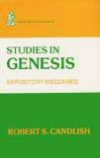
Studies In Genesis
- Author: Robert S. Candlish
- Publisher: Logos Research Systems
- Publication Date: 1997
These conservative, expository messages are rich in devotional emphasis and contain many theological discussions of special value to all students of the Word. All the major events of Genesis are expounded to bring out the doctrine of grace. Thoughts and observations are expressed with a simplicity and economy of language seldom mastered. C.H. Spurgeon says, "We characterize this as THE work on Genesis ... It should be in every biblical library."
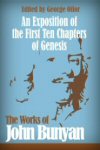
An Exposition of the First Ten Chapters of Genesis
- Author: John Bunyan
- Editor: George Offor
- Publisher: John Knox Press
- Publication Date: 2006
- Pages: 90
The editor writes, "This exposition is evidently the result of long and earnest study of the holy scriptures. It is the history of the creation and of the flood explained and spiritualized, and had it been originally published in that form and under a proper title, it would most probably have become a very popular work...If the thousands of godly preachers who are scattered over our comparatively happy island were to take Bunyan's mode of expounding scripture as their pattern, it would increase their usefulness, and consequently their happiness, in the great work of proclaiming and enforcing the doctrines of the gospel."
Bunyan has always been one of the most popular of the Puritans—no doubt because, while possessing the Word-centeredness as well as the depth of doctrine and experience of other Puritans, he also possessed a warm simplicity of style.
—Reformation and Revival Ministries, Reformation and Revival Volume 5, 2003
Bunyan is best known for his ageless classic, The Pilgrim's Progress. His literary genius in this work [is such] that people are prone to forget that this tinker from Bedford was first and foremost a Pastor and preacher...
—Thomas K. Ascol, The Founders Journal
For over 150 years the accepted edition of The Works of John Bunyan has been that edited by George Offor... This scholarly labor has contributed much toward a better appreciation of Bunyan's gospel motivated writings...
—From Bunyan Ministries
John Bunyan of Elstow and Bedford, is important to the Reformed tradition, since his famous allegory is one of the chief avenues by which the Puritan spirit entered the mainstream of the English Reformation. With Calvinism as foundational, Bunyan’s prolific writings and fervent preaching embodied a vibrant awareness of Reformed theological thought and its implication for Christian living. The author of more than sixty books, he gained a unique place in history through Grace Abounding (1666), The Pilgrim’s Progress (pt. 1, 1678; pt. 2, 1684), The Life and Death of Mr. Badman (1680), and The Holy War (1682). Other works were primarily expository, doctrinal, and practical.
Bunyan joined the Bedford Baptist Church (1654) and soon began preaching in nearby villages. Prosecuted under an Elizabethan act against nonconformity, he was imprisoned for three months, which was extended to twelve years, with a brief respite during the sixth year. Bunyan emphasized the centrality of the Bible as the foundation for belief and conduct, stressing the grace of God as the basis of predestination, the focal point of eternal salvation. Initiative in the salvation of sinners belonged to God, since God elected, within God’s purpose and framework of grace, certain individuals to eternal life. Subscribing to the doctrine of “effectual calling,” Bunyan believed it was impossible to resist the call because of the power with which the Holy Spirit accompanied and illuminated the sinner’s understanding. None of the elect could fall from grace.
Though Bunyan was primarily an adherent of the Calvinist tradition, his view of God as Savior, providing salvation from divine wrath rather than God as sovereign ruler, and his belief in the necessity of justification through grace alone showed influence of Luther. The separatist tradition shaped his view of the sacraments. He strongly opposed teachings of the Quakers and the Arminians.
—taken from The Encyclopedia of Reformed Faith
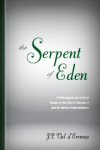
To Jews and Christians alike, the narrative of the temptation and fall of man is an article of faith. It’s the very foundation of the edifice of faith; the very groundwork of the whole scheme of redemption. It is an article of faith that Eve was tempted by “the Serpent” and fell—that she, in turn, tempted Adam, who also fell—and that Adam, Eve, and this “Serpent” were subjected each to a special condemnation by God in punishment of the sin that each had committed. But who or what that “Serpent” was, and in what way he tempted Eve, and in what precisely his condemnation consisted, and in what manner it worked: these details have never been defined as articles of faith.
In The Serpent of Eden, Rev. J.P. Val d’Eremao provides an in-depth study of Genesis 3 and its various interpretations, examining the English, Latin, Hebrew, and Greek texts for comparison. With the Logos edition, you have the unique ability to cross-reference this volume with other commentaries on Genesis 3, comparing d’Eremao’s scholarship with that of other commentators, both contemporary and classic. Bible verses are hyperlinked to your favorite translation, giving you instant access to each passage mentioned throughout this volume.
J.P. Val d’Eremao (1841–1896) was editor of the Imperial and Asiatic Quarterly Review, to which he was also a frequent contributor. His other works include Hail Mary, The Keys to Peter, and Selected Feast Day Hymns.

Gleanings in Genesis
- Author: A.W. Pink
- Publisher: Logos Research Systems, Inc.
- Publication Date: 2005
- Pages: 408
As the book of beginnings, Genesis records the origins not just of the earth but of God's revelation of himself and his dealings with mankind. Pink shows that the essential doctrines of the entire Scriptures can be traced to the book of Genesis, including doctrines such as the Trinity, election, justification by faith, divine incarnation, the priesthood of Christ, and the judgment of God on the wicked. Little wonder Genesis has been called, “The seed plot of the Bible!”
The widespread circulation of his writings after his death made him one of the most influential evangelical authors in the second half of the twentieth century.
—Iain H. Murrary
A.W. Pink (1886-1952) a native of Nottingham, England, whose life as a pastor and writer was spent in a variety of locations in the British Isles, the United States, and Australia. As a young man he turned away from the Christian faith of his parents and became an adherent of the theosophical cult; but then he experienced an evangelical conversion and crossed the Atlantic in 1910, at the age of 24, to become a student at the Moody Bible Institute in Chicago. After only six weeks, however, he left to take up a pastoral ministry. It was during the years that followed that he found his way to a strictly Calvinistic position in theology. He was soon wielding a quite prolific pen. As one whose life was devoted to the study and exposition of the Scriptures, he became the author of numerous books which the Banner of Truth Trust has been assiduously reprinting in recent times. No doubt his chief monument is the paper Studies in the Scriptures which he produced monthly and regularly for a period of thirty years from the beginning of 1922 until his death in 1952.

Classic Commentaries and Studies on Exodus (21 vols.)
- Volumes: 21
- Pages: 6,309
This massive twenty-one volume collection features some of the best commentaries and studies on the book of Exodus from the late nineteenth and early twentieth centuries. With scholars and authors such as James G. Murphy, Benjamin Wisner Bacon, Edward Dennett, and John Cumming, Classic Commentaries and Studies on Exodus (21 vols.) offers over 6,000 pages of interpretation, observations, translations, contextual history, and application on this important book of the Old Testament. The twenty-one volumes contained in Classic Commentaries and Studies on Exodus have had an enduring impact on Old Testament exegesis, and this exceptional collection provides easy accessibility to this wealth of significant scholarship.

Classic Commentaries and Studies on Exodus Upgrade (14 vols.)
- Volumes: 14
- Pages: 3,799
This 14 volume collection features some of the best commentaries and studies on the book of Exodus from the eighteenth to early twentieth centuries. With scholars and authors like Richard G. Moulton, Samuel Eyles Pierce, Charles S. Robinson, and E.H. Palmer, Classic Commentaries and Studies on Exodus offers nearly 4,000 pages of quality commentary, criticism, context, interpretation, and application of this important Old Testament book. These 14 commentaries and studies on Exodus have had an enduring impact on Old Testament exegesis. With this exceptional collection you have easy access to a wealth of significant scholarship on Exodus.

Gleanings in Exodus
- Author: A.W. Pink
- Publisher: Logos Research Systems, Inc.
- Publication Date: 2005
- Pages: 384
A central theme of the book of Exodus is the redemption of God's people. In this in-depth commentary, Pink shows how the theme of redemption in Exodus is not formally expounded as a doctrine but is strikingly illustrated by narrative, types and symbols. As he draws the Old and New Testaments together, you will be impressed once again that the story of history is the story of God and his people. Contains 72 chapters of verse by verse commentary perfectly suited to the preaching pastor, Sunday school teacher, Bible study leader, or layperson engaged in Bible study.
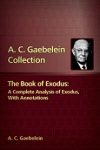
The Book of Exodus: A Complete Analysis of Exodus with Annotations
- Author: Arno Clemens Gaebelein
- Publisher: Logos Research Systems, Inc.
- Publication Date: 2009
- Pages: 218
The book of Exodus may well be called Israel’s birthday book. Israel entered Egypt as a family and left Egypt as a nation, brought forth by the power of God. Unlike Genesis—in which history progresses through a series of generations and genealogies—the book of Exodus progresses through a trajectory of deliverances: from Egypt through the Red Sea, from the shackles of slavery to a land of promise, from Israel’s groans to future glory.
In this way, Exodus teaches us about the nature of deliverance and redemption—and that places Exodus squarely within the New Testament narrative of grace. It’s also noteworthy that Jesus referred to the Book of Moses—in which Exodus is figured prominently—no less than twenty-five times, in addition to the numerous other allusions scattered throughout the New Testament. Take note of Exodus, says Gaebelein, to understand the nature of deliverance. The Book of Exodus: A Complete Analysis of Exodus with Annotations serves as an excellent introduction to this important story of redemption.
It is my privilege to commend to the people of God… the volumes of Mr. A.C. Gaebelein…
—C.I. Scofield
[These are] works of wide research…
—Westminster
His writings will never lose their timeliness—a valuable addition to any library.
—United Evangelical Action
Arno Clemens Gaebelein was born in 1861 in Germany, and immigrated to the United States in 1879. He was converted at an early age, and became ordained in the Methodist church in 1886. Gaebelein was a prolific writer. He wrote numerous books and tracts and served as editor of Our Hope, a Bible study magazine, for fifty-two years. He also co-edited the Scofield Reference Bible. Gaebelein devoted nearly ten years of his life to writing The Annotated Bible, a 3,000-page commentary on Scripture, also available from Logos. He also lectured frequently at Dallas Theological Seminary. Gaebelein died in 1945.

Classic Commentaries and Studies on Leviticus (21 vols.)
- Volumes: 21
- Pages: 4849
This massive twenty-one volume collection features some of the best commentaries and studies on the book of Leviticus from the late nineteenth and early twentieth centuries. With scholars such as S.R. Driver, M.M. Kalisch, James G. Murphy, and William Kelly, Classic Commentaries and Studies on Leviticus (21 vols.) offers over 4,000 pages of interpretation, observations, translations, contextual history, and application of law. The twenty-one volumes contained in Classic Commentaries and Studies on Leviticus (21 vols.) have had an enduring impact on Old Testament exegesis, and this exceptional collection provides easy accessibility to this wealth of significant scholarship.

Classic Commentaries and Studies on Numbers and Deuteronomy (20 vols.)
- Volumes: 20
- Pages: 4,340
The Classic Commentaries and Studies on Numbers and Deuteronomy offers some of the most significant classic studies on the books of Numbers and Deuteronomy from the late nineteenth and early twentieth centuries. With notable authors such as Richard G. Moulton, Simon Patrick, Henry Blunt, and George Bush, Classic Commentaries and Studies on Numbers and Deuteronomy (20 vols.) offers over 4,000 pages of interpretation, observations, translations, contextual history, and practical application. The twenty-one volumes contained in the Classic Commentaries and Studies on Numbers and Deuteronomy (20 vols.) have had an enduring impact on Old Testament exegesis, and this exceptional collection provides easy accessibility to this wealth of significant scholarship.
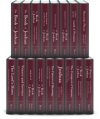
Classic Commentaries and Studies on Joshua (17 vols.)
- Volumes: 17
- Pages: 4,156
After following the Israelites through their 40-year exodus, the book of Joshua offers a brilliant ray of hope as they finally lay claim to the “land flowing with milk and honey.” Though often viewed as a strictly historical document chronicling the Israelite’ conquest and division of the Promised Land, the book actually offers much more in the way of allegory and foreshadowing, setting up Joshua as an archetype for the coming Messiah.
Classic Commentaries and Studies on Joshua offers more than 4,000 pages of interpretation, observation, translation, contextual history, reflection, and practical application. A rich and varied collection, it marries accessibility and scholastic richness.

Gleanings in Joshua
- Author: A.W. Pink
- Publisher: Logos Research Systems, Inc.
- Publication Date: 2005
- Pages: 430
Among the “last expositions to come from the gifted pen of the late Arthur W. Pink” this commentary provides an invaluable guide to the book of Joshua for the preacher, teacher or anyone engaged in Bible study. As Pink states in the introduction, “The book of Joshua records one of the most interesting and important portions of Israel's history. It treats of the period of their estatement as a nation, of which Genesis was prophetic and the rest of the Pentateuch immediately preparatory. The books of Moses would be imperfect without this one: as it is the capstone of them, so it is the foundation of those which follow...Thus this book may be contemplated from two distinct but closely related standpoints: first as the end of Israel's trials and wanderings in the wilderness, and second as the beginning of their new life in the land. It is that twofold viewpoint which supplies the clue to its spiritual interpretation, as it alone solves the problem which so many have found puzzling in this book.”
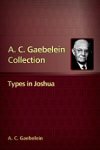
The book of Joshua chronicles the Israelite settlement of the Promised Land—the victories and defeats, falling walls, the division of the land. What do the people, places, and events in Joshua tell us about God? Gaebelein devotes significant attention to these details, and shows how an understanding of the minor plots in the story of Joshua helps us understand the story as a whole. The succinct exposition of the book of Joshua in Types in Joshua tells the story of the Israelites, and—more importantly—tells the story of God.
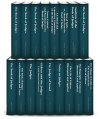
Classic Commentaries and Studies on Judges (16 vols.)
- Volumes: 16
- Pages: 3,534
The Classic Commentaries and Studies on Judges (16 vols.) offers some of the most significant classic studies on the books of Judges from the late nineteenth and early twentieth centuries. With notable authors such as Edward Lewis Curtis and A.R. Fausset, Classic Commentaries and Studies on Judges (16 vols.) offers over 3,500 pages of interpretation, observations, translations, contextual history, and practical application. The seventeen volumes contained in the Classic Commentaries and Studies on Judges (16 vols.) have had an enduring impact on Old Testament exegesis, and this exceptional collection provides easy accessibility to this wealth of significant scholarship.

Classic Commentaries and Studies on Ruth (12 vols.)
- Volumes: 12
- Pages: 2,088
Classic Commentaries and Studies on Ruth (12 vols.) compiles many of the most significant late-eighteenth- to early-twentieth-century studies on the book of Ruth. Thanks to notable authors such as John MacGowan and Andrew Thomson, Classic Commentaries and Studies on Ruth offers over 2,000 pages of interpretation, observation, translation, contextual history, and practical application. The 12 volumes contained in Classic Commentaries and Studies on Ruth have had an enduring impact on Old Testament exegesis, and this exceptional collection provides easy access to a wealth of significant scholarship.
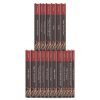
Classic Commentaries and Studies on Joshua, Judges, and Ruth (19 vols.)
- Volumes: 19
- Pages: 4,319
Take a guided tour of the events, places, and personalities that make Joshua, Judges, and Ruth three of the Bible’s most exciting books. Emphasizing the spiritual dimensions and practical lessons of these books, the authors in this collection illuminate the meaning of the biblical text while explaining how each book reveals Christ and contains accurate historical depictions. Consider the place of Christ in the historical books, their practical application, and the depth and richness their stories bring to the biblical narrative.

Classic Commentaries and Studies on the Books of Samuel (11 vols.)
- Volumes: 11
- Pages: 2,638
The Classic Commentaries and Studies on the Books of Samuel (11 vols.) offers some of the most significant classical studies on the books of Samuel from the nineteenth and twentieth centuries. With notable authors such as W.O.E. Oesterley, Loring W. Batten T. Boston Johnstone, and John Cumming, Classic Commentaries and Studies on the Books of Samuel (11 vols.) contains over 2,000 pages of interpretation, observations, translations, contextual history, and practical application. The twelve volumes contained in the Classic Commentaries and Studies on the Books of Samuel (11 vols.) have had an enduring impact on Old Testament exegesis, and this exceptional collection provides easy access to this wealth of significant scholarship.

Classic Commentaries and Studies on the Books of Samuel Upgrade (11 vols.)
- Volumes: 11
- Pages: 3,253
This collection offers some of the most significant classical studies on the books of Samuel from the eighteenth, nineteenth, and twentieth centuries. With notable authors such as George Lawson, George C.M. Douglas, James Davies, and Patrick Simon, the Classic Commentaries and Studies on the Books of Samuel Upgrade contains over 3,000 pages of interpretation, exposition, practical application, and contextual history. These 11 volumes have had an enduring impact on Old Testament exegesis, and this exceptional collection provides easy access to this wealth of significant scholarship.
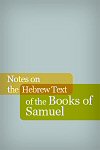
Notes on the Hebrew Text of the Books of Samuel
- Author: Rev. S.R. Driver, D.D.
- Edition: 2nd, Revised and Enlarged
- Publisher: Oxford
- Publication Date: 1890
- Pages: 390
This book, authored by Samuel Driver of Brown-Driver-Briggs fame, tackles what is one of the thorniest books of the Old Testament from a text-critical point of view. It is considered by many to be one of the best commentaries on Samuel ever written.
Initially published in 1890, it is still regarded as a model of text-critical method—which is noteworthy in light of the rugged condition of the text of 1 Samuel. Driver wrote using the text of the Septuagint, without the benefit of the Dead Sea Scrolls. Yet his conclusions about the validity of LXX readings of Samuel (as opposed to the MT text, which suffers from some lengthy gaps) were well argued and demonstrated to be accurate when the Qumran discovery came along.
R.W. Klein, writing in the Word Biblical Commentary volume on 1 Samuel, observes that, “The Masoretic Text of 1 Samuel is not in good shape. In particular many letters and words have been accidentally omitted, often because of the phenomenon of homoioteleuton. For more than a century commentators have attempted to emend the text on the basis of the LXX.… Thenius was the first modern scholar to make extensive use of the LXX, but a new level of excellence in the use of the LXX for the textual criticism of Samuel was achieved by Julius Wellhausen and S.R. Driver. Many of their emendations and textual notations were cited in BHK by Rudolf Kittel.… Wellhausen and Driver recognized that the LXX reflected an alternate and often superior form of the Hebrew text. Their insights were confirmed and refined with the discovery of the Dead Sea Scrolls.”
In addition, Driver was an expert grammarian and his exegesis is well-respected. Moisés Silva once suggested in his bibliography for students at Westminster, “If you find this one, sell your car to buy it.”
In his book Old Testament Exegesis, Dr. Douglas Stuart writes, “Seeing how an expert does textual criticism is one of the best ways to try to understand the methods involved. One of the best examples of careful textual criticism applied to a large section of the OT is worth learning from if you can find it: S.R. Driver, Notes on the Hebrew Text and the Topography of the Books of Samuel …”
Samuel Rolles Driver
English Christian Hebraist; born at Southampton Oct. 2, 1846; regius professor of Hebrew (in succession to Pusey), and canon of Christ Church, Oxford, since 1883; member of the Old Testament Revision Company, 1876-84.
Together with T.K. Cheyne and Robertson Smith, Driver has been one of the foremost champions of Biblical criticism in England. Driver approached it from its linguistic side ("Jour. of Phil." 1882, pp. 201-236). His first contribution, "A Treatise on the Use of the Tenses in Hebrew" (Oxford, 1874; 3d ed., 1892), has remained the most complete presentation of the subject...In matters of criticism Driver has always taken a conservative view, showing much moderation and sympathy with the orthodox position.
...
Driver has edited two small rabbinical works: a commentary on Jeremiah and Ezekiel by Moses ben Sheshet, London, 1871, and one on Proverbs, attributed to Abraham ibn Ezra, Oxford, 1880. He has also been a collaborator on the second edition of Smith's "Bible Dictionary," on Hasting's "Dictionary of the Bible," and on Cheyne and Black's "Encyclopædia Biblica," and is coeditor, with Professors Brown and Briggs, of the Clarendon press edition of Gesenius.
by Joseph Jacobs & Richard Gottheil

Classic Commentaries and Studies on Kings (12 vols.)
- Volumes: 12
- Pages: 3,901
Classic Commentaries and Studies on Kings (12 vols.) offers some of the most significant classical studies and scholarship on Kings from the nineteenth and twentieth centuries. With notable authors such as John Cumming, Andrew Jukes, Richard G. Moulton, and C.F. Burney, Classic Commentaries and Studies on Kings (12 vols.) contains over 3,000 pages of interpretation, observations, translations, contextual history, and practical application. The 12 volumes contained in the Classic Commentaries and Studies on Kings (12 vols.) have had an enduring impact on Old Testament exegesis, and this exceptional collection provides easy access to this wealth of significant scholarship.

Classic Commentaries and Studies on Chronicles (7 vols.)
- Volumes: 7
- Pages: 1,370
The Classic Commentaries and Studies on Chronicles (7 vols.) offers some of the best commentaries and studies on the books of Chronicles from the nineteenth and twentieth centuries. With notable authors such as James G. Murphy, Richard G. Moulton, and W.E. Barnes, Classic Commentaries and Studies on Chronicles (7 vols.) contains over 1,000 pages of interpretation, observations, translations, contextual history, and practical application. The seven volumes contained in the Classic Commentaries and Studies on Chronicles (7 vols.) have had an enduring impact on Old Testament exegesis, and this exceptional collection provides easy access to this wealth of significant scholarship.

Classic Commentaries and Studies on Ezra, Nehemiah, and Esther (18 vols.)
- Volumes: 18
- Pages: 4,167
The Classic Commentaries and Studies on Ezra, Nehemiah, and Esther (18 vols.) offers some of the most significant classic studies on the exile and redemption of Israel. With notable authors such as Henry Linton, C.F. Keil, F. Delitzsch, and J. Davies, Classic Commentaries and Studies on Ezra, Nehemiah, and Esther offers over 4,000 pages of interpretation, observations, translations, contextual history, and practical application. The eighteen volumes contained in

Classic Commentaries and Studies on Job (18 vols.)
- Volumes: 18
- Pages: 6,330
This immense eighteen volume collection features the best commentaries and studies on the book of Job from the nineteenth and early twentieth centuries. With scholars and authors such as Morris Jastrow, William Kelly, Moses Buttenweiser, and Georg Heinrich Ewald, Classic Commentaries and Studies on Job (18 Vols.) offers over 6,000 pages of interpretation, observations, translations, contextual history, and application on this highly influential and sometimes controversial book of the Old Testament. Theses authors come from a wide range of study and viewpoints, supplying a holistic overview of the character of Job, suffering, the nature of God, the literary value of the text, the historical context, and philological concerns.
This collection provides valuable and historical perspective and insight for anyone who wonders about suffering in human experience, the character of God, or who has studied the book of Job in any context. As well as presenting solid religious studies and scholarly analysis, Classic Commentaries and Studies on Job (18 Vols.) is a meaningful and documentation study in historical theology.
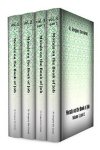
St. Gregory the Great’s massive three-volume commentary on the book of Job is thought to have been started in 578, before his papacy, and finished in Rome around 595. He explicates the book in a detailed three-part structure: historical, allegorical, and moral application. Like many of his other writings, his interpretation of Job focuses on the symbolic and how those symbols relate to living a life of integrity. Modern students of the Bible continue to benefit from this Latin Father’s analysis of Job.
Throughout the whole Church, and in particular England, the works of St. Gregory became the foundation of the moral, theological, and spiritual teaching during the centuries after his death. It is not too much to say that his Morals on the Book of Job and his treatise on the Pastoral Charge long formed the storehouses from which generations of spiritual writers drew their inspirations, their ideas, and frequently their very words.
—The Dublin Review
Saint Gregory the Great (AD 540–AD 604) was born into Roman nobility and was prefect of Rome before converting the family estate into a monastery dedicated to St. Andrew, where he remained until AD 579, when he was appointed as apocrisiarius to Constantinople. He began his papacy in AD 590 under the name Pope Gregory I.
Gregory was a great leader, with successful missionary campaigns that changed the reach of Christianity in Europe. He was also an able reformer, and was known as “the Father of Christian Worship” for his work in developing the liturgy of his day. Upon his death, he was immediately declared a saint by popular acclamation, and is venerated as a saint in the Roman Catholic, Eastern Orthodox, Anglican and some Lutheran churches. Much of Gregory’s abundant work has survived, including Morals on the Book of Job and Dialogues.
Charles Marriott (1811–1858) was an Anglican priest, fellow of Oriel College, Oxford, and one of the members of the Oxford Movement.
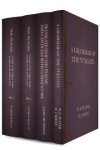
Translation of the Vulgate Collection (4 vols.)
- Volumes: 4 (in six resources)
- Pages: 1,539
The Translation of the Vulgate Collection brings together essential reference texts and translations of the Vulgate Psalter, all at your fingertips. These classic works were especially designed to help you understand the breviary and the Latin liturgy better while growing your knowledge of the ecclesial Latin. With key translations and commentaries that compare the Latin Vulgate with the original Hebrew Psalms—as well as a grammar specifically composed with biblical Latin in mind—these works will help transform your ecclesial Latin studies.
These resources contain textual and technical commentary on the Psalms and on the Song of Solomon, citing Hebrew and Latin texts in their translation notes. This collection also contains a classic technical grammar of Vulgate Latin, aiding in the process of translating difficult or confusing passages.

Classic Commentaries and Studies on Psalms (35 vols.)
- Volumes: 35
- Pages: 15,773
The words of the Psalmists have provided encouragement, comfort, and inspiration to Christians for thousands of years. From laments, to joyful songs, to words of praise, this Old Testament literature is as relatable today as it was when the words were originally penned. Classic Commentaries and Studies on Psalms (35 Vols.) brings together historical background, literary analysis, outlines, study guides, studies on the original Hebrew text, and practical application from dozens of well-loved theologians. Including the writings of Georg Heinrich Ewald, Moses Buttenweiser, James G. Murphy, J.J. Stewart Perowne, and many more, these volumes provide a fantastic backdrop for the understanding of the Psalms.
Laity, students, professors, ministers, and teachers will all benefit from the biblical wisdom and knowledge contained in these thirty-five volumes on the Psalms. A well-rounded collection containing the analysis of individual psalms as well as more holistic studies of the book, these resources contain valuable insight into the Psalms and the Old Testament biblical figures who first penned them.

The Treasury of David (6 vols.)
- Publisher: Marshall Brothers
- Author: Charles H. Spurgeon
- Volumes: 6
- Pages: 3,296
Throughout history, the Psalms have yielded in Spurgeon’s words, “boundless profit and ever-growing pleasure.” The Treasury of David, a 6-volume commentary on the Psalms by Charles Spurgeon, captures Spurgeon at the height of his literary career. With hundreds of thousands of copies sold, these classic commentaries have informed and inspired generations of Christians who have studied the Psalms.
The Treasury of David is one of the most comprehensive commentaries on the Psalms ever written, and Spurgeon devoted nearly two decades to completing the project. For each Psalm, Spurgeon offers verse-by-verse commentary, followed by detailed explanatory notes, quotations, and sayings for each verse. Each Psalm also contains suggestions for preaching and teaching, including illustrations, themes, and other tips. That makes Spurgeon’s Treasury of David one of the more useful commentaries for pastors and teachers ever written on the Psalms.
A classic in its field. Richly rewarding, deeply devotional, and pleasingly relevant. Provides not only the thoughts of the great 'Prince of Preachers,' but also an abundance of quotations taken from the writings of those who have preceded him in the ministry of the Word."
—Cyril J. Barber, The Minister's Library

Commentary on the Psalms (3 vols.)
- Author: E.W. Hengstenberg
- Publisher: Oxford University Press
- Volumes: 3
- Pages: 1,664
This commentary on the Psalms by Ernst Wilhelm Hengstenberg, a 19th century German Lutheran theologian and exegete, is still widely known and cited and is considered a solid addition to the personal library of any serious student of the Old Testament.
Hengstenberg is cited hundreds of times in works such as Pulpit Commentary and Keil & Delitzsch Commentary on the OT. The translator and editor of Calvin's Commentaries also makes frequent reference to the works of this 19th century German Protestant commentator.
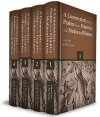
Commentary on the Psalms from Primitive and Mediæval Writers (4 vols.)
- Editors: J.M. Neale and R.F. Littledale
- Publisher: Joseph Masters
- Volumes: 4
- Pages: 2,191
In Commentary on the Psalms from Primitive and Mediæval Writers, editors J.M. Neale and R.F. Littledale have condensed the writings of the Church Fathers and other important writers from the Middle Ages into a verse-by-verse commentary of all 150 Psalms. This unique four-volume collection weaves together commentary on the Psalms from the Venerable Bede, Dionysius the Carthusian, Cyril of Alexandria, Gregory the Great, Thomas Aquinas, Saint Augustine, and many more. Additionally, Neale and Littledale reference various office-books and hymns from the Roman, Mozarabic, Ambrosian, Gallican, Greek, Coptic, Armenian, and Syriac Rites.
This is the ultimate collection for studying the Psalms in the same spirit that the mediæval commentators approached them.
This commentary on the Psalms is an important contribution to theological literature, in two points of view, as a collection of antique facts and opinions in relation to this portion of Holy Scripture, and as an example of mystical exegesis.
—Journal of Sacred Literature and Biblical Record
It will be found by those who have any taste at all for such studies a rich and valuable mine to which they may again and again recur without running the slightest risk of digging out the contents too hastily.
—Guardian
A work of singular interest to the devotional reader, and one which will open a new field of thought to theological students.
—Christian Remembrancer
This commentary is both theologically and devotionally an immense advance upon any commentary upon any portion of Holy Scripture which has yet to be written.
—Church Review
To clergymen it will prove invaluable for homiletical purposes, as an abundance of new trains of thought will be suggested, which will give their sermons that freshness which is as unusual as it is desirable in pulpit utterances. And no less a boon will it be to those of the laity who enjoy a book, which without requiring any great amount of continuous reading, will give food for meditation, and enable them to enter with more interest into that book of Holy Scripture which they are probably more familiar with than with any other.
—Church Times
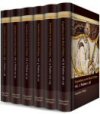
Augustine’s Expositions on the Book of Psalms (6 vols.)
- Author: Augustine of Hippo
- Translators: E.B. Pusey, H. Walford, and Charles Marriott
- Publisher: Francis & John Rivington and John Henry Parker
- Series: A Library of Fathers of the Holy Catholic Church
- Volumes: 6
- Pages: 2,952
In his Expositions on the Book of Psalms, Augustine of Hippo provides a vivid and compelling exploration of the Psalms, with the beautiful humanity that characterizes his work.
This six volume collection was translated by E.B. Pusey, H. Walford, and Charles Marriott, and it provides notes throughout each volume.
Augustine of Hippo (354–430) was born in Thagaste, Numidia, in Northern Africa. He studied rhetoric in Carthage when he was 17. As an adult, Augustine abandoned the Christianity of his youth to pursue Manichaeism. Through his Manichaen connections, Augustine became professor of rhetoric at the imperial court of Milan. While in Milan, Augustine was heavily influenced by the bishop of Milan, Ambrose. Influenced by Ambrose and by the biography of St. Anthony, Augustine began exploring Christianity and eventually reconverted. He was baptized in 387 and returned to Africa. There he was ordained and became a well-known preacher and apologist for the Christian faith. He was eventually made Bishop of Hippo, an office he held until his death in 430.

Classic Commentaries and Studies on Proverbs (20 vols.)
- Volumes: 20
- Pages: 6,115
Proverbial teaching is one of the most ancient forms of instruction—handed down in short, pithy, easy-to-remember sayings, proverbs have long been used to instruct and exhort. The Book of Proverbs, in keeping with the form, is designed for reflection and practical application. Amassing some of the most significant late-nineteenth- and early-twentieth-century studies on Proverbs, these volumes put the Old Testament book under the microscope.
Classic Commentaries and Studies on Proverbs offers more than 6,000 pages of interpretation, observation, translation, contextual history, reflection, and practical application. A rich and varied collection, it combines accessibility and scholastic richness.

Classic Commentaries and Studies on Ecclesiastes (26 vols.)
- Volumes: 26
- Pages: 7,628
The Classic Commentaries and Studies on the Book of Ecclesiastes (26 vols.) offers some of the most significant classical studies on the book of Ecclesiastes from the nineteenth and twentieth centuries. With notable authors such as Charles Bridges, Richard G. Moulton, and James Strong, Classic Commentaries and Studies on the Book of Ecclesiastes (26 vols.) contains over 7,000 pages of interpretation, observations, translations, contextual history, and practical application. The twenty-six volumes contained in the Classic Commentaries and Studies on the Book of Ecclesiastes (26 vols.) have had an enduring impact on Old Testament exegesis, and this exceptional collection provides easy access to this wealth of significant scholarship.

Classic Commentaries and Studies on the Song of Songs (24 vols.)
- Volumes: 24
- Pages: 6,932
This massive twenty-four volume collection features some of the best commentaries and studies on the Song of Songs from the eighteenth, nineteenth, and early twentieth centuries. With scholars and authors such as Morris Jastrow, John Fry, Richard Frederick Littledale, and J.F. Thrupp, Classic Commentaries and Studies on the Song of Songs (24 vols.) offers over 6,000 pages of interpretation, observations, translations, contextual history, and application on this important book of the Old Testament. The twenty-four volumes contained in Classic Commentaries and Studies on the Song of Songs (24 vols.) have had an enduring impact on Old Testament exegesis, and this exceptional collection provides easy accessibility to this wealth of significant scholarship.

Classic Commentaries and Studies on Isaiah (22 vols.)
- Volumes: 22
- Pages: 6,732
The Classic Commentaries and Studies on Isaiah offers some of the most significant classic studies on the book of Isaiah from the late nineteenth and early twentieth centuries. With notable authors such as Richard G. Moulton, S.R. Driver, Joseph Addison Alexander, and T.K. Cheyne, Classic Commentaries and Studies on Isaiah offers over 6,000 pages of interpretation, observations, translations, contextual history, and application on this important book of the Old Testament. The twenty-two volumes contained in Classic Commentaries and Studies on Isaiah have had an enduring impact on Old Testament exegesis, and this exceptional collection provides easy accessibility to this wealth of significant scholarship.
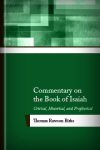
Explore Thomas Rawson Birks’ commentary on Isaiah alongside the text of his revised English translation of the book. He provides exposition of the Scripture, and seeks to unfold “the structure of the book of Isaiah, and the mutual relation of its parts, and thus to confirm the genuineness and unity of the whole prophecy.” His object is also to unfold the “relation between Isaiah’s successive visions and the circumstances out of which they arose.” He also provides a number of appendixes on various related subjects.
Contents:
- Introduction
- The Nature of Scripture Prophecy
- The Books of the Prophets
- The Life and Times of Isaiah
- Structure of the Book of Isaiah
- First Series of Visions
- Commentary
- Appendixes
- On the Genuineness of the Later Prophecies
- Structure of the Later Prophecies
- The Assyrian Reigns in Isaiah
- The Prophecy of Immanuel
- The Historical Groundwork of the Burdens
- The Assyrian Overthrow
- The Controversy with Gentile Idolatry
- The Internal Evidence of the Isaian Authorship of Ch. LV–LXVI
- On Ch. LXVI, and the Events of the Last Times
- On Ch. LXVI 22–24, and the Doctrine of Eternal Judgment
Thomas Rawson Birks (1810–1883) was an Anglican priest and Knightbridge Professor of Moral Philosophy at Cambridge. He also wrote extensively, authoring numerous theological works, many of which sparked discussion and debate. Some of his books include Essay on the Right Estimation of Manuscript Evidence, The Exodus of Israel, Scripture Doctrine of Creation, The Philosophy of Human Responsibility, and Modern Physical Fatalism and the Doctrine of Evolution.
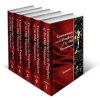
Commentary on the Prophets of the Old Testament (5 vols.)
- Author: George H. Ewald
- Publisher: Williams and Norgate
- Volumes: 5
- Pages: 1,788
Well-known Biblical scholar Georg Heinrich Ewald takes an in-depth look at the prophets of the Old Testament in this collection, Commentary on the Prophets of the Old Testament (5 Vols.). The Old Testament prophets are a large and much discussed part of the Old Testament writings, and Ewald presents a critical commentary series unique in historical context and writing style. This exceptional set introduces each prophet in historically chronological order, rather than presenting a more traditional Biblically ordered listing.
A professor of both theology and philosophy, Ewald was associated with both the Protestant association and the Hanoverian Church of Germany. His writings on the Old Testament come from his extensive studies in the Hebrew language and research on the topic of the chronology of the Old Testament.
Along with a thorough exegesis, these resources published between the years of 1875 and 1881 also contain indexes and appendixes. A must-have for all interested in Old Testament studies, these volumes are now also easily searchable in your Logos collection.
Georg Heinrich Ewald, well-known orientalist, theologian and teacher, was born in 1803 in Gottingen, Germany. Throughout his life, he taught numerous students who went on to become well-known themselves, including Christian Friedrich, Ferdinand Hitzig, August Dillman, and August Schleicher. In addition to writing over twenty theological books, Ewald was also quite politically active until his death in 1875.
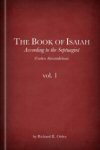
The Book of Isaiah according to the Septuagint (Codex Alexandrinus), vol. 1
- Author: Richard R. Ottley
- Publisher: University Press
- Publication Date: 1909
- Pages: 336
Volume one of The Book of Isaiah according to the Septuagint (Codex Alexandrinus) contains a concise introduction to the history of the Septuagint before providing parallel English translations of Isaiah from the Hebrew and the Greek texts. The side-by-side translations make for easy comparison, and Ottley provides helpful notes on each page.
Richard Rusden Ottley (1864–1946) received his MA from Trinity College, Cambridge and was an assistant master at Dover College from 1893–1900. He was the editor of H.B. Swete’s Introduction to the Old Testament in Greek.
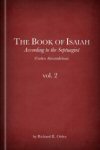
The Book of Isaiah according to the Septuagint (Codex Alexandrinus), vol. 2
- Author: Richard R. Ottley
- Publisher: University Press
- Publication Date: 1906
- Pages: 418
Volume two of The Book of Isaiah According to the Septuagint includes the entire Greek text of Isaiah from the Codex Alexandrinus, and then a full commentary with notes and textual variants. Includes a Greek index and a general index.
Future commentators on Isaiah, as well as present preachers, will be wise to consult both volumes frequently.
—The Expository Times
Richard Rusden Ottley (1864–1946) received his MA from Trinity College, Cambridge and was an assistant master at Dover College from 1893–1900. He was the editor of H.B. Swete’s Introduction to the Old Testament in Greek.

Classic Commentaries and Studies on Jeremiah and Lamentations (22 vols.)
- Volumes: 22
- Pages: 5,858
Classic Commentaries and Studies on Jeremiah and Lamentations includes some of the most significant classical studies on the books of Jeremiah and Lamentations from the late nineteenth and early twentieth centuries. With notable authors such as S.R. Driver, A.S. Peake, and John Skinner, Classic Commentaries and Studies in Jeremiah and Lamentations (22 vols.) offers over 5000 pages of exegetical analysis, rhetorical context, contextual comparison, and interpretation of divine inspiration. The twenty-two volumes contained in Classic Commentaries and Studies on Jeremiah and Lamentations (22 vols.) have had an enduring impact on Old Testament exegesis, and this exceptional collection provides easy accessibility to this wealth of significant scholarship.

Classic Commentaries and Studies on Ezekiel (15 vols.)
- Volumes: 15
- Pages: 4740
Classic Commentaries and Studies on Ezekiel (15 vols.) features a variety of the most notable classic studies on Ezekiel from nineteenth and twentieth centuries. With scholars such as William Kelly, C.H. Toy, and E.W. Hengstenberg, this collection offers over 4,000 pages of interpretation, observations, translations, contextual history, and application on this critical piece of prophetic prose. The fifteen volumes contained in Classic Commentaries and Studies on Ezekiel (15 vols.) have had an enduring impact on Old Testament exegesis, and this exceptional collection provides easy accessibility to this wealth of significant scholarship.

Classic Commentaries and Studies on Ezekiel Upgrade (9 vols.)
- Volumes: 9
- Pages: 1,350
Deepen your understanding of Ezekiel with the Classic Commentaries and Studies on Ezekiel Upgrade. Scholars from a variety of theological traditions offer insight on the text, focused academic studies, and sermons to help you interpret the prophet’s enigmatic visions. Weigh arguments for and against multiple authorship. Investigate the meaning of Ezekiel’s vision of a new temple while appreciating his distinct literary style. You’ll find the tools you need to conduct a thorough study of Ezekiel’s prophecy and uncover its riddles.
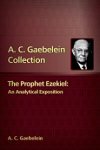
The Prophet Ezekiel: An Analytical Exposition
- Author: Arno Clemens Gaebelein
- Publisher: Logos Research Systems, Inc.
- Publication Date: 2009
- Pages: 346
The definition of Ezekiel’s name—“strengthened by God”—could also serve as the moniker which describes his prophetic ministry. Ezekiel begins with a great vision near a river, and tells the story of a man filled with energy and vigor, along with a deep sense of human responsibility. His prophecy contains severe condemnations, and his visions are detailed enough to describe a difficult reality and a saving God. When catastrophe fell upon the remnant in exile, Ezekiel brought promises of hope and restoration. The Prophet Ezekiel: An Analytical Exposition helps us understand the significance of his prophecy and the importance of his calling.

Classic Commentaries and Studies on Daniel (21 vols.)
- Volumes: 21
- Pages: 6,167
This massive twenty-one volume collection features some of the best commentaries and studies on the Book of Daniel from the late nineteenth and early twentieth centuries. With scholars and authors such as Moses Stuart, Charles H.H. Wright, James Moffatt, E.B. Pusey, and S.P. Tregelles, Classic Commentaries and Studies on Daniel (21 vols.) offers over 6,000 pages of interpretation, observations, translations, contextual history, and application on this highly influential and sometimes controversial book of the Old Testament. The twenty-one volumes contained in Classic Commentaries and Studies on Daniel (21 vols.) have had an enduring impact on Old Testament exegesis, and this exceptional collection provides easy accessibility to this wealth of significant scholarship.
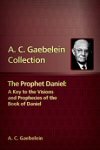
Prophecy is history rewritten. The history of nations, the times of the Gentiles, the present age in which we live, its course and end, the coming glories in a future age—all this and much more God has revealed. But the center of all prophecy is Jesus Christ—his sufferings and glory, his first and second coming. The book of Daniel, perhaps more than any other, deals with great prophecies—some unfulfilled to this day. In The Prophet Daniel, Gaebelein outlines the trajectory of world history through the prophecy in the book of Daniel. He shows how the past fulfillment of prophecy in Daniel provides added certainty of future fulfillment.
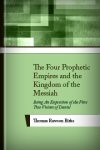
Explore Birks’ exposition of the four kingdoms described in Daniel. He comments that he aims to “impress the mind of the reader with a vivid sense of the reality of Divine Providence, based firmly on a strict and logical interpretation of the visions, and then to clothe the bare outline with a refreshing variety of spiritual meditations.”
Contents:
- General Introduction
- On the Four Empires in General
- On the Empire of Babylon
- On the Empires of Persia and Greece
- On the Undivided Fourth Empire
- The Fourth Prophetic Empire—First Stage of Division
- The Fourth Prophetic Empire—Later Stage of Division
- On the Ten Kings
- On the Moral Aspect of the Ten Kings
- The Rise of the Little Horn
- The Character of the Little Horn—The Papal Supremacy
- The Character of the Little Horn—The Papal Persecution
- On the Moral Aspect of the Vision of the Little Horn
- The Spiritual Lessons of the Prophetic History
- On the Millennium
- On the New Heavens and Earth
- On the Time of the Second Advent
- The Destruction of the Great Image
- The Kingdom of the Son of Man
- Concluding Reflections
- On the Four Empires in Connection with Sacred Chronology
- On the First Resurrection
Thomas Rawson Birks (1810–1883) was an Anglican priest and Knightbridge Professor of Moral Philosophy at Cambridge. He also wrote extensively, authoring numerous theological works, many of which sparked discussion and debate. Some of his books include Essay on the Right Estimation of Manuscript Evidence, The Exodus of Israel, Scripture Doctrine of Creation, The Philosophy of Human Responsibility, and Modern Physical Fatalism and the Doctrine of Evolution.

Classic Commentaries and Studies on the Minor Prophets (40 vols.)
- Volumes: 40
- Pages: 9,509
The Classic Commentaries and Studies on the Minor Prophets collection includes some of the most significant late-nineteenth- and early-twentieth-century studies on the books of the twelve Minor Prophets. With notable authors such as S.R. Driver, Ralph Wardlaw, and Edward Marbury, Classic Commentaries and Studies on the Minor Prophets offers more than 9,000 pages of exegetical analysis, rhetorical insight, and contextual comparison. These 40 volumes have had an enduring impact on Old Testament exegesis, and this exceptional collection marries easy accessibility and scholastic richness.
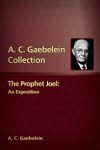
The book of Joel mentions the phrase “the day of the Lord” five times, but what does this phrase mean? And what does the day of the Lord have to do with the present? Gaebelein expresses bewilderment that God’s people in the present age, standing at the threshold of the fulfillment of many of the predictions in Joel, neglect intentional study of this important prophecy.
The book of Joel tells us little about the prophet, but much about the dire situation of Israel. Swarming locusts, severe drought, and invading armies threaten to undermine Israel’s existence, and they cast doubt on God’s promises. But in the end, God has mercy, and he promises to pour out his Spirit on the people—a telling prophecy, both then and now, given the trials. This exposition of Joel divides the book into manageable sections and analyzes each one, with a keen eye toward prophecy and prophetic fulfillment. The Prophet Joel: An Exposition also contains an introduction by C.I. Scofield.
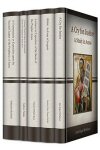
Classic Commentaries and Studies on Amos (5 vols.)
- Volumes: 5
- Pages: 1,060
Classic Commentaries and Studies on Amos offers some of the most significant classic studies on the book of Amos from the seventeenth, eighteenth, and nineteenth centuries. With notable authors such as Scottish theologian John Edgar McFadyen and Old Testament scholar H.G. Mitchell, this collection offers over 1,000 pages of interpretation, observations, translations, contextual history, and practical application. These five volumes have had an enduring impact on Old Testament exegesis, and this exceptional collection provides easy accessibility to this wealth of diverse and significant scholarship.
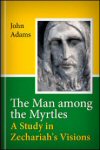
Adams brings to life the prophet Zechariah, making his works and visions accessible to pastors, teachers, and laity. Adams focuses on Hebrew grammar and writing styles, bringing valuable context to the life of this prophet. He explains chapter by chapter, giving a full spectrum of information such as background, relation to other prophets, and cultural ramifications of the prophecies of Zechariah.
John Adams was a twentieth-century American pastor and Biblical studies editor. He compiled many sermon helps, such as The Short Course Series and Hebrew studies materials.

Classic Commentaries and Studies on the Biblical Apocrypha/Deuterocanon (42 vols.)
- Volumes: 42
- Pages: 7,910
The Classic Commentaries and Studies on the Biblical Apocrypha collection presents many of the most important late-nineteenth- and early-twentieth-century studies on the Apocrypha and related literature. Thanks to such notable authors as W.O.E. Oesterley, R.H. Charles, Montague Rhodes James, and F.C. Burkitt, Classic Commentaries and Studies on the Biblical Apocrypha offers over 7,000 pages of interpretation, observation, translation, contextual history, and application on this important collection of ancient texts. The collection’s 42 volumes have had an enduring impact on Apocrypha studies, and this exceptional library provides easy access to a wealth of significant scholarship.

Classic Commentaries and Studies on the Gospels and Acts (24 vols.)
- Volumes: 24
- Pages: 10,204
This collection offers enduring classics on the Gospels and Acts including multivolume commentaries, helpful overviews, focused monographs, and rich daily expositions. These volumes delve into the interpretation of these foundational Scriptures and address some of the most pressing and perennial challenges that face exegetes and theologians. Renowned scholars, such as Brooke Foss Westcott, Constantine von Tischendorf, A.B. Bruce, and others, bring their monumental insights to the four Gospels and the book of Acts, allowing readers to stand on the shoulders of these theological and exegetical giants and reach new heights of understanding this fundamental section of the New Testament. In addition to in-depth commentaries, this collection also includes works that examine and defend the historical character of the Gospels, focus on the sayings of Jesus, and offer chronologies of the Gospel events. This collection is a veritable one-stop-shop for classic treatments of all the major aspects and issues surrounding the Gospels and Acts.

Classic Commentaries and Studies on Matthew (25 vols.)
- Volumes: 25
- Pages: 9,277
The Classic Commentaries and Studies on Matthew includes some of the most significant classic studies on the book of Matthew from the late nineteenth and early twentieth centuries. With notable authors such as A.C. Gaebelein, Alfred Plummer, William Kelly, and Richard Chenevix Trench, Classic Commentaries and Studies on Matthew offers over 9000 pages of exegetical analysis, rhetorical context, contextual comparison, and interpretation. The twenty-five volumes contained in Classic Commentaries and Studies on Matthew have had an enduring impact on New Testament exegesis, and this exceptional collection provides easy accessibility to this wealth of significant scholarship.
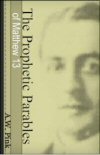
The Prophetic Parables of Matthew 13
- Author: A.W. Pink
- Publisher: Logos Research Systems, Inc.
- Publication Date: 2005
The Sower, Mustard Seed, Wheat and Tares, Pearl of Great Price...how should we understand the parables of Matthew 13? Pink views them as prophetic in nature and writes, “[T]he thirteenth chapter of Matthew... is, from the standpoint of prophecy, the most important chapter of all the New Testament. There is much in God's prophetic program which must necessarily remain dark until the parables of this chapter are thoroughly mastered. At present they are much misunderstood and misinterpreted.” In discussing the seven parables, Pink suggests that the first four give us the external view of the history of Christendom, while the last three address that which is internal or spiritual.
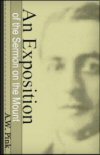
An Exposition of the Sermon on the Mount
- Author: A.W. Pink
- Publisher: Logos Research Systems, Inc.
- Publication Date: 2005
- Pages: 442
Pink writes, “We do not think that W. Perkins went too far when he said of the Sermon on the Mount, ‘It may justly be called the key of the whole Bible, for here Christ openeth the sum of the Old and New Testaments.’ . . . [W]e regard this Sermon as a forecast and an epitome of the entire oral ministry of Christ, that it summarizes the general tenor of His whole teaching.” The Sermon the Mount is the longest recorded discourse of Christ, and is intensely practical in its bearing. Over the course of 64 chapters, Pink moves through Matthew 5-7 verse by verse, offering illuminating commentary and application for this well-loved passage of Scripture.
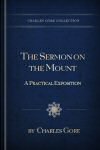
In the preface, Gore says that The Sermon on the Mount: A Practical Exposition is “intended simply to assist ordinary people to meditate on the Sermon on the Mount in the Revised Version, and to apply its teaching to their own lives.” As such, the book is geared toward practical and devotional reflection rather than scholarly study.
Charles Gore (1853–1932) was born in Wimbledon, London. He attended Balliol College, Oxford, graduating with honors in classics and philosophy. In 1875, he accepted a fellowship at Trinity College, Oxford; he was ordained in the Church of England three years later. In 1883, Gore became the first principal of the newly established Pusey House, a library and study center named for the Anglo-Catholic scholar Edward Pusey. Four years later, in 1887, Gore founded the Community of the Resurrection—a religious society for priests modeled on monastic society. In 1902, Gore was named the bishop of Worcester, and in 1905, he became bishop of the newly created diocese of Birmingham. He transferred to the diocese of Oxford in 1911, an office he held until he retired in 1919. He began lecturing in theology at King’s College, Oxford, and later became the dean of the Faculty of Theology at University of London. During this period, he travelled throughout the world preaching and lecturing. In 1930, he went on a preaching tour through India and returned quite ill. He died in 1932.
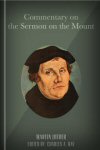
Martin Luther was never shy about calling out what he believed to be the excesses, heresies, and depravity of his tempestuous era. In these sermons on Matthew 5–7, he interprets Jesus’ Sermon on the Mount in light of the theological disputes of his day. Luther’s take on Jesus’ most famous sermon has become one of the most influential approaches in Christian history, emphasizing a strong dichotomy between the Gospel and the Law—a view heavily influenced by his sharp disagreements with the Catholic Church.
Charles A. Hay was a nineteenth-century translator of theological works.
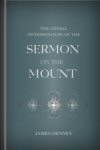
James Denney, Marcus Dods, and James Moffatt question the practice of the Bible’s teaching in contemporary churches and the relevance of its commandments in contemporary society. Would Jesus and Paul have spoken different words if they were instructing contemporary churches on issues such as women’s roles, swearing oaths, and even proper church attire? These authors explore a literal interpretation and application of the Sermon on the Mount for the benefit of modern church society, demonstrating that Christian moral conduct is timeless and that Jesus’ teachings are never out of date.
Marcus Dods (1834–1909) was born in Belford, Northumberland. Dods went on to study divinity and theology at Edinburgh Academy and Edinburgh University, where he graduated in 1854. He is a highly respected scholar who published over a dozen books of theology, which are recognized for their expansive critical research.
James J. Moffatt (1870–1944) was a graduate of Glasgow University. He first ministered before becoming professor of Greek and New Testament exegesis at Mansfield College, Oxford in 1911. He returned to Glasgow in 1915 as professor of church history at the United Free Church College. From 1927 to 1939 he was Washburn Professor of Church History at the Union Theological Seminary, New York. He authored many books, especially commentaries.

Catena Aurea: Commentary on the Four Gospels (8 vols.)
- Publisher: Oxford: J.H. Parker
- Author: St. Thomas Aquinas
- Translator: John Henry Newman
- Volumes: 8
- Pages: 2,784
This famous commentary from St. Thomas Aquinas is now more accessible than ever! The Catena Aurea (or, Golden Chain) is a compilation of Patristic commentary on the Gospels and contains passages from over eighty Church Fathers. In this masterpiece, Aquinas seamlessly weaves together extracts from various Fathers to provide a complete commentary on all four Gospels.
It was Pope Urban IV who commissioned St. Thomas Aquinas to bring together the Catena Aurea in a bid to make readily available to the academic public an orthodox patristic commentary on the Gospels. His work manifests an intimate acquaintance with the Fathers of the church and provides an excellent complement to the modern attempts to understand how the fathers read scripture. Corresponding to each of the four Gospel writers, the Catena begins by putting forth the verses to be analyzed and then takes each verse phrase-by-phrase and provides the early Fathers' insights into the passage.
Thomas Aquinas was born in 1225 in what is now Italy. He entered the Benedictine abbey of Montecassino at the age of five to begin his studies. He was transferred to the University of Naples at the age of sixteen, where he became acquainted with the revival of Aristotle and the Order of the Dominicans. Aquinas went on to study in Cologne in 1244 and Paris in 1245. He then returned to Cologne in 1248, where he became a lecturer.
Aquinas’s career as a theologian took him all over Europe. In addition to regularly lecturing and teaching in cities throughout Europe, Aquinas participated regularly in public life and advised both kings and popes.
Thomas Aquinas died on March 7, 1274 while traveling to the Second Council of Lyons. Fifty years after his death, Pope John XXII proclaimed Aquinas a saint. The First Vatican Council declared Aquinas the “teacher of the church.” In 1879, Pope Leo XII declared the Summa Theologica the best articulation of Catholic doctrine, and Aquinas was made the patron saint of education.
Thomas Aquinas has also profoundly influenced the history of Protestantism. He wrote prolifically on the relationship between faith and reason, as well as the theological and philosophical issues which defined the Reformation.
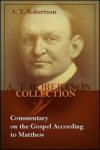
Commentary on the Gospel According to Matthew
- Author: A.T. Robertson
- Publisher: Macmillan
- Publication Date: 1911
- Pages: 294
Throughout the nineteenth century, biblical studies progressed and expanded, with the onset of new forms of criticism and the emergence of the historical consciousness. This volume is A.T. Robertson’s attempt to bring divergent views and interpretations on the Gospel of Matthew together into one volume. He offers a comprehensive commentary that is both compact and clear. In addition to discussions of canonicity, authorship, and historicity, this verse-by-verse commentary also outlines the characteristics and purpose of the book, as well as its theology and Christology.
Archibald Thomas Robertson was born on November 6, 1863 in Chatham, Virginia, during the height of the Civil War. His family moved to Statesville, North Carolina, where he grew up. He was baptized in 1876 and immediately recognized God’s call to preach, and attended Wake Forest College.
Upon graduation in 1885, Robertson entered The Southern Baptist Theological Seminary, where he devoted himself to Greek studies under John Broadus. He was appointed Greek instructor as a student, and received his Th.M. in 1888. Robertson became an associate professor in 1890, and then served as Professor of New Testament Interpretation from 1895 to 1934. He devoted his life to preaching, teaching, scholarly activities, and giving public lectures, many of which have been reproduced in book form in this collection. He was a founding member of the Baptist World Alliance, and participated in numerous Bible conferences with Dwight Moody and F.B. Meyer.
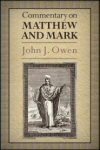
John J. Owen’s commentary on Matthew and Mark draws from critical knowledge of the Greek language—including its grammar, structure, and idioms—as well as his acquaintance with the latest scholarship. It incorporates the findings of linguists, historians, archaeologists and other scholars to reveal relevant contextual issues. Owen’s commentary displays a masterful understanding of Greek. In fact, prior to writing commentaries on the Bible, Owen published numerous works on Homer, Zenophpon, and other classics. At the same time, Owen’s commentary serves a general audience of teachers, lay readers, and students of the Bible. He avoids unnecessary technicalities, and exposits Scripture in readable and accessible language, in order to aid general readers in the study of God’s Word.
...Completeness, precision, and conciseness characterize his commentary. On the few passages which can be supposed to refer to disputed dogmas, he accords, as we should expect, with the Trinitarian and Calvinistic interpretation; but, on these, he does not merge the critic in the controversialist, and still less does he obtrude his own peculiar opinions where the text does not demand their expression. His notes are learned, yet without the ostentation of learning, and devout, without the parade of personal feeling. They contain all that the common reader needs, and nearly all that the scholar can furnish, for the elucidation of the text. In thoroughness, in critical impartiality, and in their tokens of profound biblical scholarship, we deem them preferable to Barnes’s Commentaries, which we nevertheless hold in high esteem, while they are parallel with that series in their adaptation to popular use.
—North American Review

Classic Commentaries and Studies on Mark (24 vols.)
- Volumes: 24
- Pages: 5,895
The Classic Commentaries and Studies on Mark includes some of the most significant classic studies on the book of Mark from the late nineteenth and early twentieth centuries. With notable authors such as John A. Broadus, Allan Menzies, Ernest DeWitt Burton, A.T. Robertson, and M.F. Sadler, Classic Commentaries and Studies on Mark (24 vols.) offers over 5,000 pages of interpretation, observations, translations, contextual history, and practical application. The twenty-four volumes contained in Classic Commentaries and Studies on Mark (24 vols.) have had an enduring impact on New Testament exegesis, and this exceptional collection provides easy accessibility to this wealth of significant scholarship.
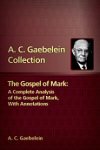
Gaebelein calls the Gospel of Mark “the neglected Gospel.” The Gospel of Mark: A Complete Analysis of the Gospel of Mark, with Annotation reintroduces us to the themes of service and the nature of Christ as a servant which dominate the Gospel of Mark. Gaebelein also includes an outline of the entire Gospel, and he notes points of comparison and contrast with the other synoptic Gospels. This brief commentary on each section of the Gospel of Mark is written in accessible and non-technical language, making it ideal for personal or group Bible study.
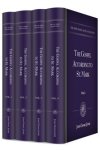
J.D. Jones’ Commentary on Mark (4 vols.)
- Author: John Daniel Jones
- Publisher: Religious Tract Society
- Volumes: 4
- Pages: 1,149
Get devotional and spiritual insights into the Gospel of Mark in an extensive but simple format. Congregational preacher J.D. Jones brings out some of the most applicable lessons from Mark without dodging the difficult passages, and in doing so delivers what Wiersbe calls “one of the best” commentaries on Mark.
John Daniel Jones (1865–1942) was a Congregational minister, preacher, and popular author. He earned his MA from Owen’s College, Manchester, and his BD from St. Andrews in 1889. He was later awarded honorary DD degrees from the universities of St. Andrews, Manchester, and Wales. In 1888 he became minister of Richmond Hill Church, Bournemouth, where he remained until his retirement. It was from that pulpit where most of his popular sermons were delivered and where he earned the nickname “Archbishop of Congregationalism.” His church at Richmond Hill was considered to be one of the most renowned of nonconformist congregations in the whole country of England.

Classic Commentaries and Studies on Luke (24 vols.)
- Volumes: 24
- Pages: 9,169
This massive 25-volume collection features some of the best commentaries and studies on the Gospel According to Luke from the late nineteenth and early twentieth centuries. With scholars and authors such as James Foote, Edwin W. Rice, Charles Erdman, Arthur Carr, and James Hamilton, Classic Commentaries and Studies on Luke (25 vols.) offers over 9,000 pages of interpretation, observations, translations, contextual history, and application on the "most literary" book of the New Testament. The twenty-four volumes contained in Classic Commentaries and Studies on Luke (25 vols.) have had an enduring impact on New Testament exegesis, and this exceptional collection provides easy accessibility to this wealth of significant scholarship.
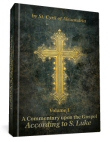
This commentary, like many other patristic commentaries, was delivered in a course of short sermons.
Cyril of Alexandria was the Patriarch of Alexandria from 412 to 444. His uncle, Pope Theophilus of Alexandria, was Patriarch of Alexandria from 385 to 412. Cyril was well educated, wrote extensively, and was a leading figure in the First Council of Ephesus in 431, the third ecumenical council of the early Christian Church. The council convened amid disputes over the teachings of Nestorius, Patriarch of Constantinople, and Cyril led the charges of heresy against Nestorius. Nestorius' teachings were condemned by the council, leading to the formation of separate denominations that broke from the Orthodox church.
Cyril of Alexandria is venerated as a saint in the Roman Catholic Church, Eastern Orthodox Church, Oriental Orthodox Church, Anglican Church, and Lutheran Church.
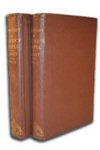
Godet’s Commentary on Luke’s Gospel (2 vols.)
- Author: Louis Godet
- Publisher: T & T Clark
- Publication Date: 1893
- Pages: 903
Logos is pleased to offer Frederic Louis Godet's classic commentary on the Gospel of Luke. Godet's commentary is frequently referenced to this day as a reliable source for the study of Luke's Gospel. It is one of the most significant studies of Luke from the 19th century and is respected for its exegetical style and ability to address the authenticity and origins of Luke's Gospel with precision.
Godet's Commentary on Luke is an important addition to the Logos Bible Software library because of its historical precedence as a premier study of third Gospel. This commentary includes the standard scripture reference tagging and language tools that allow users to integrate the new wealth of knowledge into their existing library and study the Gospel of Luke with greater depth.
Here is a deep well of refreshing insight on the Gospel of Luke. Godet was a leading Swiss Protestant Reformed scholar of the 19th century. He was an able defender of the orthodox Christian faith in an age of growing liberalism. This book represents one of Godet’s finest works of analysis and exposition.
—C.H. Dyer in Bibliotheca Sacra
[Godet] brings out the plan of the work, its unity, and many of the internal proofs that it was written by Luke, not as a mere compilation, or as founded upon the other gospels, but as a history in the true sense of the word, which drew its sources, indeed, from brief oral or written accounts already in existence, but wrought out what they furnished into a new and elaborated work.
—Review from New Englander and Yale Review, published in 1875
Godet, in all his commentaries, shows a scholarly breadth of familiarity with the commentators who preceded him. Many of their interpretations are stated and refuted in order to present that which the author feels is the correct interpretation of the passage. One can in reading this work avail himself of a clear summary of the views of many various writers. The author was respected as a theologian, hence his work has depth, and was revered as a Greek scholar and exegete, and thus his work has accuracy.
—J.D. Pentecost in Bibliotheca Sacra
Frédéric Louis Godet (1812–1900) Swiss Protestant theologian and New Testament scholar
Born at Neuchatel, and educated there and at Bonn and Berlin, Godet served from 1838 to 1844 as tutor to Crown Prince (later King) Frederick Wilhelm III of Prussia. He served as supply preacher in the Val–de–Ruy from 1844 to 1851, and as pastor at Neuchatel from 1851 to 1866. Between 1851 and 1873 he was also professor of exegetical and critical theology in Neuchatel. From 1873 to 1887 he was professor of New Testament exegesis at the newly established Free Evangelical Faculty, which he helped to found.
Godet did much to interpret German theological thought to French–speaking Protestants, and the English translations of his works made him influential in international New Testament scholarship. His conservative viewpoint in New Testament interpretation is clearly expressed in his critical commentaries (John, 1864–1865; Luke, 1871; Romans, 1879–1880; 1 Corinthians, 1886).
- taken from Who's Who in Christian History
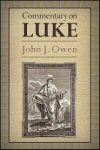
An ordained minister in the Presbyterian church, John J. Owen (1803-1869) taught as a professor of classical languages in the Free Academy, New York, until he was made vice-principal of that institution in 1853, in which capacity he served until his death. An eminent classicist, Owen's translations of Greek works were highly acclaimed and his biblical commentaries were well received.
When this commentary was published, the North American Review had very favorable things to say about it: "On the appearance of Dr. Owen’s previous volume, we expressed our high appreciation of his learning, skill, and impartiality as a critic. That estimate is fully sustained by the Commentary on Luke. We are particularly pleased with the adaptation of the work equally to the use of the Biblical scholar and the needs of the merely English reader. No important critical question is ignored or slighted; and yet there is not a sentence beyond the comprehension of an intelligent and thoughtful child. Equally admirable is the union of the critical and practical purposes, which a popular commentary should subserve at the same time..."

Classic Commentaries and Studies on the Gospel according to John (25 vols.)
- Volumes: 25
- Pages: 8,911
Classic Commentaries and Studies on the Gospel according to John offers some of the most significant classic studies on the book of John from the late nineteenth and early twentieth centuries. With notable authors such as John J. Owen, A.T. Robertson, William Kelly, and W.W. Hengstenberg, Classic Commentaries and Studies on the Gospel according to John (25 vols.) offers over 8,000 pages of interpretation, observations, translations, contextual history, and practical application. The 25 volumes contained in the Classic Commentaries and Studies on the Gospel according to John (25 vols.) have had an enduring impact on Old Testament exegesis, and this exceptional collection provides easy accessibility to this wealth of significant scholarship.
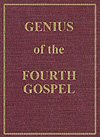
The Genius of the Fourth Gospel: A Homiletical Commentary on the Gospel of John
- Author: David Thomas
- Publisher: Logos Research Systems, Inc.
- Publication Date: 1997
Originally published in two volumes, this popular commentary has been valued by Bible students for more than a century. The Genius of the Fourth Gospel is an intensely practical commentary which focuses on the issue of the message. As such, the commentary is a wonderful resource for teachers in lesson preparation. It is also an excellent commentary for use in personal devotional readings. The work is enormously practical in that it focuses on the events and the unfolding story in the text rather than grammar issues and word derivations.
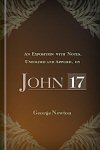
This volume presents George Newton’s insights on the John 17 High Priestly Prayer—Christ’s prayer for himself, his disciples, and his believers. Newton focuses on five themes: Christ’s finished work and divine glory; ministry in converting; preserving and sanctifying the church; the unity of believers through his indwelling; and present and future glory secured through the same loves as the Father. Discover the historical and contemporary significance of the John 17 prayer. Uncover what Jesus requested of the Father on our behalf.
George Newton (1602–1681) was an English nonconformist minister and theologian. He was educated at Exeter College, Oxford, where he received his BA (1621) and MA (1624). In 1631 he began his work as a minister at Bishop’s Hull, near Taunton, Somerset. The Act of Uniformity in 1662 deprived Newton of a living, but he continued to preach. As a result, he was imprisoned several years for unlawful preaching.
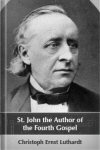
The question of the authenticity, canonicity, and integrity of the Gospel of John has been in question for centuries. Yet, within it resides substantial claim to our understanding of the person of Jesus Christ. In this volume, Luthardt brings together the facts—from a myriad of sources and evidences—and proves the canonity and trustworthiness of the Gospel of John. This classic work is still cited in numerous texts and studies on the John’s Gospel, including the Hermenia series, the KJV Bible Commentary, and many others.
Contents
- Chapter I: Tradition
- Chapter II: St. John’s Authorship Disputed
- Chapter III: The Testimony of the Church
- Chapter VI: The Testimony outside of the Church
- Chapter V: St. John’s Residence at Ephesus
- Chapter VI: The Passover Controversy
- Chapter VII: The Testimony of the Gospel Itself
- Chapter VIII: St. John’s Gospel and the Second Century
- Chapter IX: St. John’s Gospel and the Synoptists
- Chapter X: St. John’s Gospel and the Revelation
- Chapter XI: St. John’s Christology Psychologically Possible
- Appendix: Literature of the Disputed Origin of the Fourth Gospel from 1792 to the Present
Christoph Ernst Luthardt (1823–1902) was a German Lutheran theologian from Bavaria. After studying theology at Erlangen and Berlin, he was appointed professor of systematic theology and New Testament exegesis at Leipzig. He was strictly orthodox in his interpretive style, widely recognized for his confrontational apologetic lectures and writings, which defended against the atheistic explanation of a material-only universe. He was a voluminous writer belonging to the Erlangen school of Lutheran theologians. He wrote Apologetic Lectures on the Fundamental Truths of Christianity, Apologetic Lectures on the Saving Truths of Christianity, Apologetic Lectures on the Moral Truths of Christianity, St. John the Author of the Fourth Gospel, History of Christian Ethics, and a number of books not translated into English, including the widely read and referenced Compendium der Dogmatik.
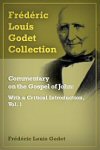
The importance of the study of the Gospel of John and its enormous impact on theology compelled Godet to write this lengthy and detailed commentary. Given its clear distinction from the Synoptic Gospels, John’s Gospel became an easy target for historical criticism and modernist theology—making Godet’s defense of its divine inspiration all the more urgent. This volume contains an introduction to the authorship issue, the history of Johannine authenticity, the dating of composition, and a broad survey of all exegetical, interpretive, and historical material on the Gospel of John. This volume concludes with a detailed exposition of the first chapter of John.
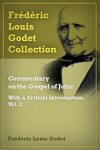
Volume 2 of Godet’s commentary on John covers the middle part of the Gospel. He provides detailed commentary on Jesus’ first miracle, his travels to Judea, Samaria, and Galilee, as well as the controversies in Jesus’ ministry. This volume concludes with commentary on the First Discourse and the Second Discourse in chapter ten.
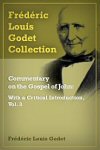
Volume 3 contains commentary on the second half of John’s Gospel, including the raising of Lazarus, the final days of Jesus’ ministry, and the development of the disciples’ faith. He comments at length on the passion narrative, including Jesus’ arrest, trial, and resurrection.

An Exposition of the Gospel of John
- Author: A.W. Pink
- Publisher: Logos Research Systems, Inc.
- Publication Date: 2005
- Pages: 1,154
Pink devoted 15 years of special study to John's Gospel and taught the book five times over before writing this commentary. He intended the verse by verse commentary to serve the needs of preachers, Sunday school teachers, and anyone involved in Bible study. Pink states in the forward that, “He has diligently sought to do two things: obtain from God the meaning of the text, and how to apply its lessons most effectively to his hearers and readers. This complete exposition comprises three volumes. It is not a dry commentary, nor a ponderous production suited only to seminary students. It avoids the technical, and aims at the practical. It is designed for those who crave spiritual food. It will appeal not to the intellectuals but to the spiritually minded.”
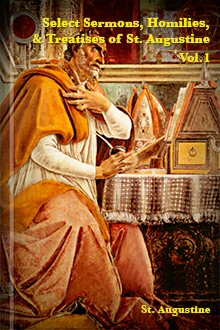
Sermons on Selected Lessons of the New Testament, vol. 1: St. Matthew, St. Mark, & St. Luke
- Author: Augustine of Hippo
- Translator: R.G. Macmullen
- Series: A Library of Fathers of the Holy Catholic Church
- Publisher: John Henry Parker
- Publication Date: 1844
- Pages: 485
Surprisingly accessible, clear, and pastoral in tone—the first volume of Sermons on Selected Lessons of the New Testament by St. Augustine examines 66 different passages from the Synoptic Gospels. Focusing on practical application to the lives of his parishioners, Augustine also takes care to emphasize the relevance of the various passages for his listeners’ spiritual lives. Modern readers, whether scholars who are studying Augustine or lay readers who merely wish to learn from him, will find much of value in these sermons. They are easily adaptable for devotional reading and provide keen insights into how Augustine interpreted the Bible.
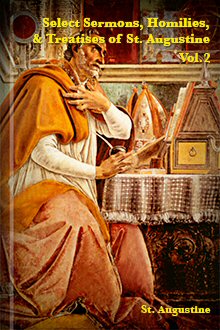
Sermons on Selected Lessons of the New Testament, vol. 2: St. John, Acts, Romans, 1 Corinthians, Galatians, Ephesians, Philippians, 1 Thessalonians, 1 Timothy, Titus, James, & 1 John
- Author: Augustine of Hippo
- Translator: R.G. Macmullen
- Series: A Library of Fathers of the Holy Catholic Church
- Publisher: John Henry Parker
- Publication Date: 1845
- Pages: 526
This volume of Augustine’s Sermons on Selected Lessons of the New Testament comprises 67 sermons and covers passages from the Johannine corpus, Acts, eight Pauline epistles, and the epistle of James. These Augustinian compositions reflect the great theologian’s desire for church parishioners to clearly understand his teachings and to be able to apply them to their lives. Written for an ancient audience, the relevance of these sermons for the modern world is easily discernible, and contemporary readers will find them useful for studying Augustine and his scriptural hermeneutics as well as for devotional reading and doctrinal instruction.
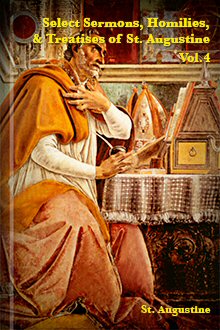
Homilies on the Gospel According to St. John, and his First Epistle, vol. 1: Homilies 1–43 & St. John 1–8
- Author: Augustine of Hippo
- Translator: H. Browne
- Series: A Library of Fathers of the Holy Catholic Church
- Publisher: John Henry Parker
- Publication Date: 1848
- Pages: 586
In the year AD 416, following a long period of preaching on the Psalms, Augustine began a new and extended treatment of John’s first epistle and of the Gospel of John. Volume 1 of Homilies on the Gospel According to St. John and his First Epistle covers the first eight chapters of John’s Gospel, and provides especially illuminating commentary on the unique chapters of John—chapters 1 and 8. Augustine’s sermons present a clear interpretation of Scripture, are practical in scope, and provide readers with the opportunity to deliberate over Scripture with one of the church’s greatest pastor-theologians.
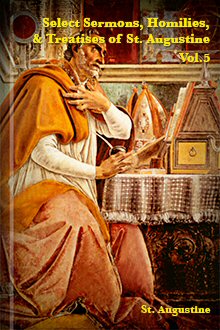
Homilies on the Gospel According to St. John, and his First Epistle, vol. 2: Homilies 44–124, St. John 9–21, Homilies 1–10, & 1 St. John
- Author: Augustine of Hippo
- Translator: H. Browne
- Series: A Library of Fathers of the Holy Catholic Church
- Publisher: John Henry Parker
- Publication Date: 1849
- Pages: 702
This volume of Augustine’s Homilies on the Gospel According to St. John, and his First Epistle presents sermons given to his congregation in the year AD 416 and covers chapters 9–21 of John’s Gospel as well as John’s entire first epistle. Focused on the concrete realities of life, these sermons draw practical lessons from John’s writings while simultaneously drawing the attention of the reader towards the work of Christ, the nature of his divinity, and the goodness he has displayed toward humanity in his death and resurrection. Readers of all types will find much to consider in these sermons including Augustine’s hermeneutics, the cogency of his teachings as well as material rich in devotional material.
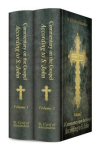
Cyril of Alexandria was a theologian, bishop, Church Father, and Doctor of the Church. Although his reputation is marked with controversy, Cyril is most remembered for his intelligent writing, his strong condemnation of heresy, and the Nestorian Schism. The dispute between Cyril and Nestorius, Patriarch of Constantinople, over different Christological views was decided in favor of Cyril at the First Council of Ephesus in 431 and the Council of Chalcedon in 451. Churches supporting Nestorius’ teachings split from the Orthodox church, forming their own denominations. Cyril’s Commentary on the Gospel of S. John is a powerful demonstration of Cyril’s views on Christ and the person and nature of Christ, and is a major exegetical accomplishment of fifth-century biblical interpretation.
Cyril of Alexandria was the Patriarch of Alexandria from 412 to 444. His uncle, Pope Theophilus of Alexandria, was Patriarch of Alexandria from 385 to 412. Cyril was well educated, wrote extensively, and was a leading figure in the First Council of Ephesus in 431, the third ecumenical council of the early Christian Church. The council convened amid disputes over the teachings of Nestorius, Patriarch of Constantinople, and Cyril led the charges of heresy against Nestorius. Nestorius' teachings were condemned by the council, leading to the formation of separate denominations that broke from the Orthodox church.
Cyril of Alexandria is venerated as a saint in the Roman Catholic Church, Eastern Orthodox Church, Oriental Orthodox Church, Anglican Church, and Lutheran Church.
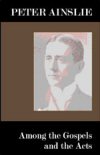
In this work, Peter Ainslie provides an excellent Bible reading companion by breaking up the Gospels and Acts into manageable sections and providing commentary on each section. For each book, he offers a brief survey of its contents, authorship, date, and similar considerations. The divisions of the book are laid out, along with a unique system of marking and underlining the text so that key concepts stand out. He then proceeds through the book section by section, offering notes on historical and cultural background, application, and keen observations along the way. Each division concludes with a prayer and a number of questions for review purposes.
Among the Gospels and the Acts can serve as a guide to inductive Bible study, offering aid where it's needed most but never getting in the way of your own interaction with the biblical text.
Peter Ainslie, a minister of the Christian Church (Disciples of Christ), pastored a large church in Baltimore, Maryland, for most of his life, but was better known for his labors on behalf of Christian unity. Ainslie’s life spanned the period of the Restoration (or “Christian”) Movement, out of which came the more open Disciples of Christ.
Alexander Campbell (1788–1866), an early leader of the Restoration Movement, had proposed a unity of all believers around what he saw as simple New Testament Christianity. Ainslie led the way in applying that idea in the modern ecumenical movement. He edited the Christian Union Quarterly for many years and was president of the Association for the Promotion of Christian Unity from 1910 to 1925. His many books arguing for cooperation among believers included The Message of the Disciples for the Union of the Church (1913). Said Ainslie, “Henceforth let no man glory in his denomination; that is sectarianism; but let men glory in Christ and practice brotherhood; that is Christianity.”

Classic Commentaries and Studies on the Acts of the Apostles (31 vols.)
- Volumes: 31
- Pages: 9,665
The Classic Commentaries and Studies on Acts collection (31 vols.) includes some of the most significant classic studies on the book of Acts from the late nineteenth and early twentieth centuries. With authors such as Joseph Addison Alexander, Frederick Denison Maurice, William Owen Carver, and C.J. Vaughan, Classic Commentaries and Studies on Acts offers over 9,000 pages of exegetical analysis, rhetorical context, contextual comparison, and interpretation. The thirty volumes contained in Classic Commentaries and Studies on Acts have had an enduring impact on New Testament exegesis, and this exceptional collection provides easy accessibility to this wealth of significant scholarship.
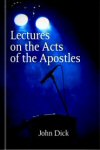
Lectures on the Acts of the Apostles
- Author: John Dick
- Publisher: Robert Carter and Brothers
- Publication Date: 1857
- Pages: 407
Lectures on the Acts of the Apostles contains 29 lectures. The first 16 are designed to illustrate the principal events in the history of the Church, from the ascension of Christ to the meeting of the Council of Jerusalem. The last 13 center primarily on Paul’s labors and sufferings.
This is a work of no ordinary merit. We most earnestly recommend this work to our readers.
—The Methodist Review
John Dick’s Lectures on the Acts of the Apostles is marked by the same penetrating exegetical and theological insight that characterizes his famous Lectures on Theology. Every paragraph sheds light on the sacred page. Dick wrote with great warmth and eloquence. This book doesn’t just inform the mind; it also stirs the heart. These lectures are a grand tour of Acts conducted by a master in Israel.
—Dr. Robert Paul Martin
John Dick was born in Aberdeen, Scotland, in 1764. He was licensed to preach in 1785, and his community immediately noticed the elegance of his sermons and the eloquence of his delivery. He was soon ordained and appointed to a congregation in the village of Slateford. For 15 years he remained in Slateford, next moving to Glasgow to head another church. In 1815 he received his Doctor of Divinity, and in 1820 he was appointed theological professor to the Associate Synod. He was appointed president of the Auxiliary Bible Society of Glasgow in 1832.
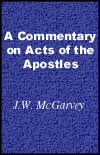
A Commentary on Acts of the Apostles
- Author: John W. McGarvey
- Publisher: Logos Research Systems
- Publication Date: 1999
From the introduction: "Much the greater part of Acts may be resolved into a detailed history of cases of conversion, and of unsuccessful attempts at the conversion of sinners. If we extract from it all cases of this kind, with the facts and incidents preparatory to each and immediately consequent upon it, we will have exhausted almost the entire contents of the narrative."
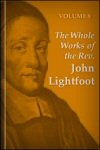
The Whole Works of John Lightfoot, vol. 8: Commentary on Acts 1–12
- Author: John Lightfoot
- Publisher: J.F. Dove
- Publication Date: 1822
- Pages: 437
Volume eight contains Lightfoot’s commentary on the first twelve chapters of the Acts of the Apostles. It also includes Hebrew and Talmudical exercitations on Acts and a brief Christian and Roman history of the first four centuries.
John Lightfoot (1602–1675) was born in England, the son of a clergyman. Lightfoot was a brilliant academic, educated at Cambridge. He followed in his father’s footsteps as a minister. Lightfoot also was a prolific writer, known for his work on the date of Creation.
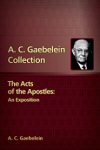
The book of Acts reveals the transition from Judaism to Christianity, from the prominence of the law to the expanse of grace. For Gaebelein, Acts represents the earliest moments whereby grace becomes the normative way by which we know God. Pay attention to Acts, he says, to understand grace.
Gaebelein approaches the book of Acts apart from what Ford C. Ottman calls “the yoke of traditional interpretation” and removed from “the feverish discontent with the supernatural.” In particular, Gaebelein has little tolerance for the higher critics, whose attempts to domesticate the work of the Spirit obfuscate the primary purpose of the book. Gaebelein’s approach brings the work of the Spirit to the fore—especially the Spirit’s role of fulfilling the promises of Jesus. He also explains the ongoing tensions between Jewish expressions of Christianity and a wholesale Gentile embrace of the Gospel. The book of Acts, says Gaebelein, exhorts us toward greater faithfulness and bolder preaching, because the message of the Holy Spirit’s comfort is needed in all times and places. The Acts of the Apostles: An Exposition also includes an introduction, which includes Gaebelein’s outline of the book and a brief discussion about authorship and historicity.
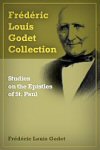
Studies on the Epistles of St. Paul brings us into close contact with the early churches in their trials and triumphs, and examines the overarching themes which provide interpretive clues for Paul’s writings. Although Godet wrote numerous commentaries on Paul’s epistles, this volume uniquely surveys the circumstances of Paul’s life, his spiritual challenges, and the lasting influence of his theology. This volume also connects Paul’s writings with issues the church faces today, such as the use of spiritual gifts, the conflict between law and grace, varying beliefs about Christ’s second coming, and controversy over women in ministry.

Studies on the Epistles of St. Paul brings us into close contact with the early churches in their trials and triumphs, and examines the overarching themes which provide interpretive clues for Paul’s writings. Although Godet wrote numerous commentaries on Paul’s epistles, this volume uniquely surveys the circumstances of Paul’s life, his spiritual challenges, and the lasting influence of his theology. This volume also connects Paul’s writings with issues the church faces today, such as the use of spiritual gifts, the conflict between law and grace, varying beliefs about Christ’s second coming, and controversy over women in ministry.
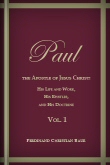
How does the historical value and character of the Acts of the Apostles stand in relation to the historical contents of the Pauline Epistles? In Paul the Apostle of Jesus Christ, F.C. Baur begins his quest with that question in mind. This inquiry divides itself into three closely connected parts: the life and work of the Apostle, the historical position and meaning of his epistles, and the contents and connection of his doctrine. Volume one includes the following chapters:
- First Part: The Life and Work of the Apostle Paul
- The Church at Jerusalem before the Apostle’s Conversion
- Stephen the Predecessor of the Apostle Paul
- The Conversion of the Apostle Paul
- The First Missionary Journey of the Apostle
- The Transactions between the Apostle Paul and the Elder Apostles at Jerusalem
- The Second Missionary Journey of the Apostle
- The Apostle in Athens, Corinth, Ephesus—His Journey to Jerusalem by Miletus
- The Arrest of the Apostle in Jerusalem
- The Apostle in Rome—His Imprisonment and Martyrdom
- Second Part: The Epistles of the Apostle Paul
- The Epistle to the Galatians
- The Two Epistles to the Corinthians
- The Epistle to the Romans
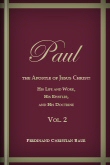
How does the historical value and character of the Acts of the Apostles stand in relation to the historical contents of the Pauline Epistles? In Paul the Apostle of Jesus Christ, F.C. Baur begins his quest with that question in mind. This inquiry divides itself into three closely connected parts: the life and work of the Apostle, the historical position and meaning of his epistles, and the contents and connection of his doctrine. Volume two includes the following chapters:
- Second Part (Continued): The Epistles of the Apostle Paul
- The The Epistles to the Ephesians and Colossians
- The Epistle to the Philippians
- The Epistle to Philemon
- The Epistles to the Thessalonians
- The Pastoral Epistles
- General Observations on the Smaller Pauline Epistles
- Third Part: The Doctrine of the Apostle
- The Principle of the Christian Consciousness
- The Doctrine of Justification: In Its Negative Aspect
- The Doctrine of Justification: In Its Positive Aspect
- Christ as Principle of the Society Founded by Him
- The Relation of Christianity to Judaism and Heathenism
- Christianity as a New Principle of the World’s Historical Development
- Faith, Love, and Hope: The Three Factors of the Christian Consciousness
- Special Discussion of Certain Minor Points of Doctrine
- On Certain Features of the Apostle’s Character
- Appendix
- On the Literature of the Legend of Peter
- Comparison of the Pauline Doctrine of Justification with That of the Epistle of James
- The Two Epistles to the Thessalonians, Their Genuineness and Their Bearing on the Doctrine of the Parousia of Christ

Classic Commentaries and Studies on Romans (32 vols.)
- Volumes: 32
- Pages: 14,377
Thirty-two volumes make up this engaging collection on the book of Romans. Arguably the most doctrinally-rich Pauline epistle, Romans is discussed by an astonishing twenty-eight theologians and biblical scholars in this collection of commentaries and studies. Infused with insight, wisdom, and critical exegesis, Classic Commentaries and Studies on Romans (32 Vols.) will prove to be invaluable for pastors, professors, Sunday school teachers, students, and laity. Written at a time of new archaeological discoveries and new ways of understanding the biblical text, these books are cited in major commentaries on Romans written today. All who read the words from these theological writers will come away with a greater understanding of the doctrinal truths and practical instruction found in Romans.
Over 14,000 pages of instruction and application make up this remarkable collection, composed of commentary from scholarly greats such as H.P. Liddon, E. Purdue, and Thomas Robinson. The collection demonstrates a comprehensive spectrum of interpretation of Romans, and includes outlines, verse-by-verse exegesis, historical facts, doctrinal truths, word studies, commentaries, and study notes.
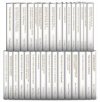
Classic Commentaries and Studies on Romans Upgrade (32 vols.)
- Volumes: 32
- Pages: 8,004
This extensive collection provides notable classic studies and commentaries on one of the most theologically dense books in the Bible, Paul’s epistle to the Romans. Spanning five centuries of scholarship, the Classic Commentaries and Studies on Romans Upgrade combines critical interpretations, exegetical studies, discussions of thematic elements, study guides, and practical applications. This collection’s valuable insights are only available together in this special upgrade to Classic Commentaries and Studies on Romans, offering easy access to nearly 8,000 pages of significant scholarship.
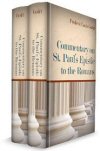
Frédéric Louis Godet brings thoughtful Christian scholarship to bear on the book of Romans. In his Commentary on St. Paul's Epistle to the Romans, Godet's exposition is as exegetical as it is theological. He not only critically examines the original text, but also discusses the key doctrines in relation to both the entire book of Romans and the rest of Scripture. He approaches Romans from the perspective of a theologian, and with the eye of a textual critic.
Frédéric Louis Godet brings thoughtful Christian scholarship to bear on the book of Romans. In his Commentary on St. Paul’s Epistle to the Romans, Godet’s exposition is as exegetical as it is theological. He not only critically examines the original text, but also discusses the key doctrines in relation to both the entire book of Romans and the rest of Scripture. He approaches Romans from the perspective of a theologian, and with the eye of a textual critic.
[Frédéric Louis Godet] has many qualifications for his work. One of the most needful exists in an eminent degree—a hearty sympathy with the book he is expounding. He does not approach it from the outside, but the inside, having a heartfelt experience of the power of the blessedness of its truths.
—Talbot W. Chambers
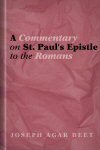
A Commentary on St. Paul’s Epistle to the Romans
- Author: Joseph Agar Beet
- Series: Joseph Agar Beet Collection
- Publisher: Thomas Whittaker
- Publication Date: 1901
- Pages: 386
Contents:
- Introduction
- All Are Guilty
- Justification and its Results
- The New Life in Christ
- Harmony of the Old and New
- Practical Lessons
- Conclusion of the Epistle
- Dissertations
In Dr. Agar Beet the Wesleyans have now a theologian who takes his place among the best of living expositors. . . . It is no small achievement to have carried into its ninth edition a book on so well worked a theme as the Epistle to the Romans. This success is the reward of solid and sober work. The writer has the great merit of knowing his own mind and of expressing his meaning with lucidity; and his literary skill enables him to give his readers most of the results attained by scholarship without distracting the unlearned by a parade of Greek. But he is more than a commentator; he applies the lessons of the Epistle with impressive earnestness and unfailing good taste.
—The Saturday Review
This is one of the greatest extant commentaries on Romans; and it is more, for it is also a compendium of theology, as must needs be the case with a work on the Epistle that deals at all adequately with its subject. Again and again as we turn over the pages we are delighted with some happy rendering, the skilful unraveling of some knotty phrase, the keen cut of thought into the heart of some tough sentence.
—The Christian World
Joseph Agar Beet was an English Wesleyan pastor from 1864 to 1885, and professor of systematic theology in Wesleyan College, Richmond, 1885–1905. He was also a member of the faculty of theology in the University of London in 1901–05.
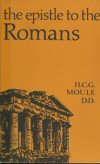
The Epistle to the Romans is an invaluable standard commentary, a true book of devotion. The late H.C.G. Moule, former dean of Trinity College, succeeds in making this difficult epistle luminous while demonstrating its practical lessons. This verse-by-verse commentary includes Moule’s own translation of the text with an emphasis on an explanation of details. He also puts into context the writings of Paul by vividly describing the man and the time and place in which he lived.
H.C.G. Moule (1841-1920) was the son of the vicar of Fordington, Dorchester, and was educated at home prior to attending university at Cambridge. He was ordained in 1867 and was curate at Fordington before being appointed as dean of Trinity College, Cambridge, 1873 to 1876. During his tenure at Cambridge he became first principal of Ridley Hall Theological College, in 1881, and Norrisian Professor of Divinity in 1899. In 1901, he succeeded B.F. Westcott as Bishop of Durham.
In 1898 he became honorary chaplain to Queen Victoria and in 1900 represented evangelicals at the Round Table Conference on Holy Communion. Moule later chaired the missionary section of the Pan-Anglican Congress and was closely associated with the Keswick Convention. Although a profound scholar, he could speak and write for ordinary people as this commentary demonstrates. Noted for the many hymns and poems he penned, Bishop Moule’s works also include expositions and commentaries on nearly all the Epistles, as well as books on devotion. He is the author of the popular Doctrine of Man, Outlines of Christian Doctrine (a down-to-earth work on theology), and contributed to The Fundamentals (4 volumes).
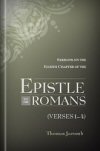
Sermons on the Eighth Chapter of the Epistle to the Romans (Verses 1–4)
- Author: Thomas Jacomb
- Publisher: James Nichol
- Publication Date: 1868
- Pages: 381
This volume presents Thomas Jacomb’s exposition of Romans 8:1–4. Filled with sound, biblical arguments, it analyzes the gospel of redemption and salvation. Jacomb addresses the many controversies surrounding the text and provides readers practical insight concerning faith, holiness, and deliverance from sin’s dominion.
Thomas Jacomb (1622–1687) was a Puritan minister. He attended Oxford and Cambridge and served as a fellow of Trinity College. In 1647 he became a chaplain to the Countess of Exeter, a position he held for 40 years.
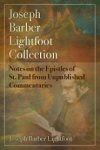
Notes on the Epistles of St. Paul from Unpublished Commentaries
- Author: Joseph Barber Lightfoot
- Publisher: MacMillan & Co.
- Publication Date: 1895
- Pages: 336
The content from Notes on the Epistles of St. Paul from Unpublished Commentaries was reproduced from Lightfoot’s manuscripts and student notes from his lectures delivered at Cambridge. This volume contains notes on the two epistles to the Thessalonians, the first part of 1 Corinthians, portions of Romans, and the first chapter of Ephesians.
The ease with which [Lightfoot] passes . . . from one subject to another, from a review of commentaries on St. Paul’s Epistles to an emendation of the text of Euripides, from an investigation of the meaning of ‘Caesar’s household’ to the position of the Long Walls at Athens, represents the work of [one] who regards the New Testament as the goal of all his studies.
—Brooke Foss Westcott, author
Lightfoot’s research is characterized by clarity and precision, and a historical sense that sees the details within the larger movement of history.
—William Baird
Joseph Barber Lightfoot (1828–1889) was born in Liverpool. He attended King Edward’s School in Birmingham before enrolling at Trinity College, Cambridge. He edited the Journal of Classical and Sacred Philology from 1854 to 1859.
In 1852 he was elected a Fellow of Cambridge, and was ordained in 1854. He became tutor of Trinity College in 1857, professor of divinity in 1861, and anon of St. Paul’s Cathedral in 1871. Lightfoot preached regularly and participated in various ecclesiastical activities. He gained enormous popularity for his defense of the New Testament in response to Walter Richard Cassel’s Supernatural Religion. Lightfoot also participated on the committee for an English revision of the New Testament.
In 1879, Lightfoot became Bishop of Durham, where he continued his theological study, writing, and preaching. In addition to the works included in this collection, Lightfoot also wrote commentaries on Galatians, Philippians, and Colossians and Philemon. Lightfoot was succeeded as bishop by his lifelong friend, Brooke Foss Westcott.
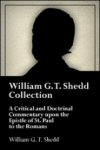
First published in 1879, this volume contains Shedd’s detailed and thorough commentary on each chapter of the book of Romans. In this verse-by-verse commentary, Shedd pays careful attention to the Greek text, while providing detailed exposition for pastors and scholars. Widely cited and highly influential for generations of commentators on Romans, this commentary has become a standard text on Paul’s most important epistle.
William G.T. Shedd was born in 1820 in Acton, Massachusetts. He attended the University of Vermont, where he studied under James Marsh and encountered the writings of Samuel Taylor Coleridge. He graduated in 1839 and entered Andover Theological Seminary, where he studied under Leonard Woods. At Andover, he became committed to Calvinism in general and Presbyterianism in particular. Upon graduating in 1843, he became a minister at the congregational church in Brandon, Vermont for two years. He taught at the University of Vermont from 1845 to 1852, at Auburn Theological Seminary from 1852 to 1854, and at Andover Theological Seminary from 1854 to 1862. He began teaching at Union Theological Seminary in 1864, where he remained until his death in 1894. While at Union, he defended the Reformed theology of Old School Presbyterianism against the increasing influence of modernism and higher criticism. In addition to the works included in this collection, he is also well-known for his 7-volume Complete Works of Samuel Taylor Coleridge and his Dogmatic Theology, available from Logos.
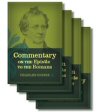
Charles Hodge Commentary Collection (4 vols.)
- Author: Charles Hodge.
- Publisher: Logos Research Systems, Inc.
- Volumes: 4
- Pages: 1,801
The four commentaries in the Charles Hodge Commentary Collection serve as the basis for Hodge’s life and thought, making his commentaries important for both biblical scholars and theologians. The volumes contain verse-by-verse commentary on every chapter in Romans, 1 Corinthians, 2 Corinthians, and Ephesians, along with textual analysis, doctrinal points, and helpful chapter summaries. Each commentary also includes a lengthy introduction and overview written by Hodge himself, in which he examines the authorship and dating of each book, along with the historical, cultural, political, and theological context of the original audience.
Contemporary scholarship remembers Charles Hodge more for his systematic theology than his biblical exposition. Nevertheless, his whole life was primarily devoted to the critical and systematic study of the Bible, and his entire theological method is eminently biblical. In fact, Charles Hodge taught in biblical studies for more than twenty years at Princeton Theological Seminary before he was transferred, reluctantly, to the theological department. Hodge’s theology is rooted in his exposition of scripture; not the philosophical schemes and cultural whims that informed the vast majority of theological reflection in the nineteenth century. That makes the Charles Hodge Commentary Collection an important tool not only for understanding the Bible, but also for understanding Hodge’s systematic theology as a whole.
Logos is pleased to offer the unabridged version of Hodge’s commentaries, with all of Hodge’s Greek completely retained. The Charles Hodge Commentary Collection offers full access to Hodge’s work as it was originally published, making the Logos edition the preeminent standard for Hodge studies and the most accessible way to read the entirety of Hodge’s commentaries. These commentaries will benefit Bible scholars, theologians, and pastors looking for theologically-rich Bible commentaries, and are ideal for anyone interested in discovering the relationship between Hodge’s biblical exposition and his theological method. For those looking for the English-only, abridged versions, Logos also offers Charles Hodge’s commentaries on Romans, 1 Corinthians, 2 Corinthians, and Ephesians as part of the Crossway Classic Commentary Collection (13 volumes).
Hodge's method and matter make him doubly useful in commenting. He is singularly clear, and a great promoter of thought.
—Charles Spurgeon
[Hodge] gave theological structure to the claims of reality that reminded their hearers of the limitations of human achievement and the fragility of true virtue.
—John Farina
Charles Hodge counts as one of the most influential theologians of the nineteenth century and one of Calvinism’s most ardent defenders in America. He was born in 1797 in Philadelphia to Hugh and Mary Hodge. He graduated from the College of New Jersey (Princeton University) in 1815, and was ordained in the Presbyterian Church in 1821. In 1822, at the request of Archibald Alexander, he became a professor at Princeton, and taught biblical literature and systematic theology until 1878. From 1826 to 1828, Hodge also studied in Europe, and became acquainted with Friedrich Augustus Tholuck, Wilhelm Gesenius, Augustus Neander, and Friedrich Schleiermacher.
During his tenure at Princeton, Hodge instructed more than three thousand ministers, served as moderator of the Presbyterian General Assembly in 1846, helped revise the Presbyterian Church’s Book of Discipline, and served on the Board of Foreign Missions. He also founded the Biblical Repertory and Princeton Review and served as its editor for forty-three years. In addition to his systematic theology and four Bible commentaries, Hodge also wrote books on the Presbyterian Church and published numerous articles.
Charles Hodge died on June 19, 1878. Among his last words: “To be absent from the body is to be with the Lord, to be with the Lord is to see the Lord, to see the Lord is to be like him.”

Classic Commentaries and Studies on Corinthians (29 vols.)
- Volumes: 29
- Pages: 7,722
This massive twenty-nine volume collection features a variety of the most notable studies on Corinthians from the nineteenth and twentieth centuries. With scholars such as William Milligan, James Moffatt, E.P. Gould, and H. Hensley Henson, Classic Commentaries and Studies on Corinthians (29 vols.) provides over 7,500 pages of critical interpretation, exegetical studies, thematic elements, semantic discourse, doctrinal interpretation, and practical application. This twenty-nine volume set offers a solid foundation for biblical interpretation and practical application through expositional scholarship.

Classic Commentaries and Studies on Corinthians Upgrade (12 vols.)
- Volumes: 12
- Pages: 3,867
The Classic Commentaries and Studies on Corinthians Upgrade (12 vols.) provides even more valuable resources for studying Paul’s letters to the Corinthians. The critical interpretations, exegetical studies, discussions of thematic elements, semantic discourse, doctrinal interpretations, and practical applications found in this collection are only available together in this special upgrade to Classic Commentaries and Studies on Corinthians. This collection of nineteenth and twentieth-century scholarship is invaluable for students, scholars, pastors, historians, teachers of the Bible, or anyone studying the Epistles to the Corinthians.
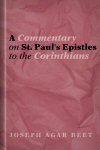
A Commentary on St. Paul’s Epistles to the Corinthians
- Author: Joseph Agar Beet
- Series: Joseph Agar Beet Collection
- Publisher: Hodder and Stoughton
- Publication Date: 1882
- Pages: 544
Contents:
- Exposition of the First Epistle
- Introduction
- About the Church Parties
- About the Misconduct of some Church Members
- About Marriage
- About the Idol-Sacrifices
- About the Abuses in Church-Meetings
- About the Spiritual Gifts
- About the Resurrection of the Dead
- Personal Matters
- Exposition of the Second Epistle
- Introduction
- Review of Recent Events
- The Collection for the Poor at Jerusalem
- Paul's Reply to His Opponents
- Dissertations
Mr. Beet's commentary is judicious, clear, devout, candid, and well-written . . . we heartily welcome and commend this new product of Mr. Beet's very industrious pen.
—Bibliotheca Sacra
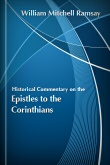
Historical Commentary on the Epistles to the Corinthians
- Author: William Mitchell Ramsay
- Publisher: Hodder and Stoughton
- Publication Date: 1900–1901
- Pages: 168
Historical Commentary on the Epistles to the Corinthians was first serialized in three issues of The Expositor from 1900 to 1901. Ramsay begins the commentary by noting the differences between the epistles to the Corinthians and the epistle to Galatians. He then provides a thorough examination of the Corinthian epistles, giving historical context for Paul's instructions.
William Mitchell Ramsay was born in Glasgow, Scotland, in 1851. His education took place at Oxford, the University of Aberdeen, and Gottingen, and he later went on to become Professor of Humanity at University of Aberdeen, as well as the first ever Professor of Classical Archaeology at Oxford. Perhaps most well-known for his archaeological endeavors, he traveled extensively throughout Asia Minor, studying the missionary journeys of Paul and conducting archaeological research, writing numerous books on the findings and adventures of his studies, including St. Paul the Traveller and Roman Citizen. His original intent in his studies was to disprove Christianity through archaeology, but through his research he realized that the Bible was accurate and converted to Christianity. Ramsay died in 1939.
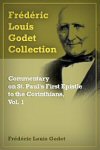
Commentary on St. Paul’s First Epistle to the Corinthians, vol. 1
- Author: Frédéric Louis Godet
- Publisher: T & T Clark
- Publication Date: 1889
- Pages: 428
The first epistle to the Corinthians directly addresses core issues in the church—then and now—and answers crucial questions about its theology. This book’s practicality and theological wisdom, as well as its historical parallels with issues facing the contemporary church make it vital reading for modern Christians.
Volume 1 of Godet’s commentary on 1 Corinthians includes a lengthy introduction to the epistle as a whole, along with detailed commentary of the first six chapters. Godet devotes particular attention to the historical situation of the church in Corinth, church discipline, impurity, and marriage. Throughout his commentary, Godet—departing from the dominant trend in nineteenth century biblical criticism—does not sacrifice sound exegesis and interpretation to conform to the standards of historical, textual, and modernist criticism.
Godet, in all his commentaries, shows a scholarly breadth of familiarity with the commentators who preceded him. Many of their interpretations are stated and refuted in order to present that which the author feels is the correct interpretation of the passage. One can in reading this work avail himself of a clear summary of the views of many various writers. The author was respected as a theologian, hence his work has depth, and was revered as a Greek scholar and exegete, and thus his work has accuracy.
[Frédéric Louis Godet] has many qualifications for his work. One of the most needful exists in an eminent degree—a hearty sympathy with the book he is expounding. He does not approach it from the outside, but the inside, having a heartfelt experience of the power of the blessedness of its truths.
—Talbot W. Chambers
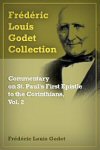
Commentary on St. Paul’s First Epistle to the Corinthians, vol. 2
- Author: Frédéric Louis Godet
- Publisher: T & T Clark
- Publication Date: 1890
- Pages: 493
This volume continues Godet’s commentary on 1 Corinthians. He devotes significant attention to Paul’s advice to the church in Corinth regarding the role of women in public worship, the celebration of the Lord’s Supper, and spiritual gifts—issues which remain at the center of church controversies 2,000 years later. Godet closes his commentary with a detailed exposition of chapter 15 and the resurrection of the body. This volume also includes chapters on the historicity of 1 Corinthians, the ecclesiastical offices of the church in Corinth, and the criticism of the text.

Classic Commentaries and Studies on Galatians (24 vols.)
- Volumes: 24
- Pages: 8,210
This massive 24-volume collection features a variety of the most notable classic studies on Ephesians from the nineteenth and twentieth centuries. With scholars such as Charles Gore, Arthur Pridgam, and Paul Bayne, Classic Commentaries and Studies on Ephesians offers over 8,000 pages of interpretation, observations, translations, contextual history, and application on this important Pauline Epistle. The twenty-three volumes contained in Classic Commentaries and Studies on Ephesians have had an enduring impact on New Testament exegesis, and this exceptional collection provides easy accessibility to this wealth of significant scholarship.
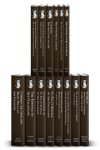
Classic Commentaries and Studies on Galatians Upgrade (14 vols.)
- Volumes: 14
- Pages: 3,444
This 14-volume Classic Commentaries and Studies on Galatians Upgrade features some of the best commentaries and studies on Paul’s epistle to the Galatians from the late nineteenth and early twentieth centuries. Scholars and theologians such as George G. Findlay, William Kelly, and Philip Mauro are among many who offer insights in this collection. Readers can access nearly 3,500 pages of history, commentaries, lectures, notes, and sermons on the meaning and application of this important Pauline epistle. This significant collection presents important themes such as freedom from law, liberty in Christ, and the basis of Martin Luther’s reformation.
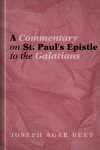
A Commentary on St. Paul’s Epistle to the Galatians
- Author: Joseph Agar Beet
- Series: Joseph Agar Beet Commentary Collection
- Publisher: Hodder and Stoughton
- Publication Date: 1885
- Pages: 272
Contents:
- Paul's Contrary Conduct and Principles
- Justification is by Faith, Apart from Law, and Therefore from Circumcision
- Christian Morals
- Conclusion of the Epistle
- Dissertations
A really sound, able, and original scholar, who has evidently thought much and worked long at St. Paul's Epistles. It is remarkably independent and impartial in weighing disputed passages like the above, and does so by the strict rules of philological science.
—Dr. Sanday, Professor of Exegesis, University of Oxford
Mr. Beet has achieved a work which we have long desired to see, a thoroughly scientific and scholarly commentary on one or more parts of the New Testament in which there in no unnecessary and ostentatious display of Greek . . . it is seldom indeed that we have had the pleasure of welcoming a work in which so many excellences co-exist. The introductions and dissertations are admirable.
—The Scottish Review
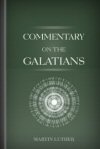
Luther’s Commentary on Galatians
- Author: Martin Luther
- Publisher: Logos Research Systems, Inc.
- Publication Date: 1997
This classic commentary on Galatians enables you to study under the great reformer who not only reveals great scholarship but also an intense personal identification with these profound Pauline truths. Martin Luther avoids unnecessary technicalities, yet he brings to light the depths of Paul's meaning like no other commentator. This is an outstanding, doctrinally-sound, comprehensive commentary. The verse-by-verse exposition offers penetrating insights into Luther's theology. It is also a careful analysis and clear presentation of Paul's doctrine, written for all to understand.
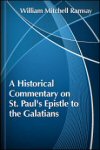
A Historical Commentary on St. Paul’s Epistle to the Galatians
- Author: William Mitchell Ramsay
- Publisher: Baker Book House
- Publication Date: 1965
- Pages: 504
"The attempt is made in this book to show how much light the epistle to the Galatians throws on contemporary history in the widest sense—the history of religion, society, thought, manners, education—in the Eastern provinces of the Empire," states Ramsay. A thorough discussion of the book and history of Galatians is contained, relating the ancient culture to Ramsay's day.
William Mitchell Ramsay (1851–1939) was born in Glasgow, Scotland. His education took place at Oxford, the University of Aberdeen, and Gottingen, and he later went on to become Professor of Humanity at University of Aberdeen, as well as the first ever Professor of Classical Archaeology at Oxford. Perhaps most well-known for his archaeological endeavors, he traveled extensively throughout Asia Minor, studying the missionary journeys of Paul and conducting archaeological research, writing numerous books on the findings and adventures of his studies, including St. Paul the Traveller and Roman Citizen. His original intent in his studies was to disprove Christianity through archaeology, but through his research he realized that the Bible was accurate and converted to Christianity.
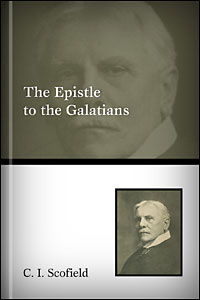
The Epistle to the Galatians
- Author: C.I. Scofield
- Publisher: The Gospel Hour
- Publication Date: 1903
- Pages: 41
Originally given as lectures at the Sea Cliff Bible Conference, C.I. Scofield's the Epistle to the Galatians is a brief study on the key aspects of Paul's letter to the churches in Galatia.
C.I. Scofield (1843–1921) is considered one of the early influential American proponents of dispensationalism. He is widely recognized as the editor of the Scofield Reference Bible, first published in 1909. He is the author of a number of books as well as a contributor to the four-volume set The Fundamentals. Before his life as a minister and theologian, Scofield was a member of the Kansas House of Representatives as well as US District Attorney for the state of Kansas.

Classic Commentaries and Studies on Ephesians (23 vols.)
- Volumes: 23
- Pages: 8,210
This massive twenty-three volume collection features a variety of the most notable classic studies on Ephesians from the nineteenth and twentieth centuries. With scholars such as Charles Gore, Arthur Pridgam, and Paul Bayne, Classic Commentaries and Studies on Ephesians (23 vols.) offers over 8,000 pages of interpretation, observations, translations, contextual history, and application on this important Pauline Epistle. The twenty-three volumes contained in Classic Commentaries and Studies on Ephesians (23 vols.) have had an enduring impact on New Testament exegesis, and this exceptional collection provides easy accessibility to this wealth of significant scholarship.

Classic Commentaries and Studies on Ephesians Upgrade (14 vols.)
- Volumes: 14
- Pages: 3,569
The 14-volume Classic Commentaries and Studies on Ephesians Upgrade provides even more valuable resources for studying Paul’s letters to the Ephesians. The critical interpretations, observations, discussions of thematic elements, and practical applications found in this collection are only available together in this special upgrade to Classic Commentaries and Studies on Ephesians (23 vols.). This collection of nineteenth- and twentieth-century scholarship is invaluable for students, scholars, pastors, historians, teachers of the Bible, or anyone studying Ephesians.
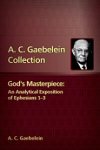
The epistle to the Ephesians holds a place of particular prominence in the New Testament. The revelation given in this epistle captures the essence of God’s will for the church and for the world. Gaebelein does not intend for us to discard the rest of Scripture; rather, he encourages us to read the rest of Scripture through the lens of Ephesians.
The first three chapters of Ephesians contain profound revelation—God’s comprehensive work for creating, redeeming, and manifesting himself in the life of the church. Gaebelein believes the church tends to read these chapters too quickly and dwell on large overarching themes without concentrating on the minutia. God’s Masterpiece: An Analytical Exposition of Ephesians 1–3 curbs this tendency. Gaebelein argues that “a telescopic sweep of this epistle is insufficient. The microscopic examination brings out its wonders.” This verse-by-verse exposition in non-technical language on the first three chapters of Ephesians combines microscopic scriptural exposition with a doxological response, which helps illuminate the whole.
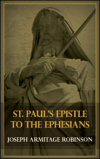
St. Paul’s Epistle to the Ephesians begins with a comprehensive introduction, which includes an outline of the book of Ephesians, along with a summary of Paul’s ministry and a brief history of the early Church. With the Logos edition of St. Paul’s Epistle to the Ephesians, you can perform powerful searches and access a wealth of other information about Ephesians from dictionaries, encyclopedias, and the rest of the titles in your Libronix Digital Library. Hovering over scripture texts will display the scripture reference from your favorite Bible translation, and you can link St. Paul’s Epistle to the Ephesians to the other commentaries in your library for research, analysis, and a fuller understanding of the Bible.
Joseph Armitage Robinson was born in 1858 in Somerset. He studied at Christ’s College at Cambridge, and was ordained in 1882. He served as Dean of Westminster Abbey from 1902–1911. Robinson died in 1933.
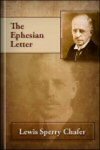
In this careful consideration of one of the best loved books of the New Testament, Chafer presents neither a commentary nor an exegesis of the book of Ephesians, but a doctrinal examination. Breaking up the book into sections, he addresses key themes and teachings in this book. Chafer provides historical and theological context as well, giving a holistic view of Ephesians. Presenting solid theology for the general reader as well as for scholars, this volume is essential for study of the book of Ephesians.
No subject was more dear to the heart of Dr. Lewis Sperry Chafer than the teaching of the Scriptures on the spiritual life.
—John F. Walvoord, president of Dallas Theological Seminary
I welcome therefore this present book on these fundamental truths. Having had the privilege of seeing it in manuscript, I bespeak for it the candid attention of all who are concerned for the truth of God.
—C.I. Scofield, in the preface to the 1936 edition of The Kingdom in History and Prophecy
I am glad of the privilege of calling attention to a presentation of the way of salvation which is certain to lead all who read it earnestly to a living faith in Christ, and then to a constant joy because of the abundant and assured provision of God for the Christian life.
—W.H. Griffith Thomas, in the preface to the 1917 edition of Salvation
Lewis Sperry Chafer (1871-1952) was an American Presbyterian clergyman and educator, born in Rock Creek, Ohio. He studied at New Lyme Academy in Ohio, at Oberlin (Ohio) Conservatory and College, and under C.I. Scofield. Ordained in 1900, he was a traveling evangelist from 1900-1914, and a Bible lecturer from 1914-1924. He also taught Bible at the Philadelphia School of the Bible from 1914-1923. In 1924, he founded the Evangelical Theological College (now Dallas Theological Seminary) and was its president and professor of systematic theology until his death. He is also the author of Systematic Theology (8 Vols.) and was also the editor of Bibliotheca Sacra.
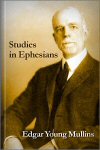
Studies in Ephesians
- Author: Edgar Young Mullins
- Publisher: Sunday School Board of the Southern Baptist Convention
- Publication Date: 1935
- Pages: 143
Studies in Ephesians is a fantastic complement to Mullins' guide to Colossians. As with Studies in Colossians, it contains a concise study guide as well as review questions and a note to pastors and professors who may be using the resource.
Edgar Young Mullins, who was perhaps the most pivotal figure in twentieth century Southern Baptist life, deserves notice.
—Online Reviewer
Edgar Young Mullins is the most formative influence on the theological and doctrinal development of the Southern Baptist Church.
—Online Reviewer
Edgar Young Mullins is one of the twentieth century's most noted Southern Baptist theologians. Both a pastor and professor, Mullins wrote many theological resources that continue to inspire and challenge readers today. He died in 1928, shortly after being named the president of the Baptist World Alliance.
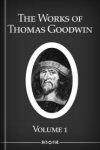
The Works of Thomas Goodwin, vol. 1
- Author: Thomas Goodwin
- Publisher: James Nichol
- Publication Date: 1861
- Pages: 563
Volume One contains Goodwin’s commentary on the first of two volumes on the book of Ephesians. Goodwin deeply valued the minutia of Ephesians, and devotes much of his commentary to portions of the epistle overlooked by other commentators. Throughout his commentary, Goodwin displays a humble awareness for the richness of Paul’s writings and for the grace of God working through the words of the apostle.
He speaks the intimacies of things from an inward sense and feeling of them in his own heart, to the particular cases and experiences of others.
—James Barron
Thomas Goodwin (1600-1680) was born in Norfolk in England as the oldest son of Richard and Catherine Goodwin. At the age of six, Goodwin, in his own words, “began to have some slighter workings of the Holy Spirit.” He attended Christ’s College in Cambridge, and was ordained as a preacher in 1625 and as a lecturer at Trinity Church in 1633.
In 1634, he resigned and in 1639 was forced to flee to the Netherlands to escape persecution.
After Goodwin returned to England, he became a member of the Westminster Assembly, and frequently preached in Parliament. In 1656, he also became chaplain to Oliver Cromwell. Along with John Owen, Thomas Goodwin was instrumental in writing the Westminster Confession of 1658.
In 1660, Goodwin returned to London and served as pastor of Fetter Lane Independent Church, where he remained until his death.
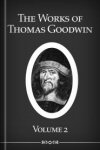
The Works of Thomas Goodwin, vol. 2
- Author: Thomas Goodwin
- Publisher: James Nichol
- Publication Date: 1861
- Pages: 467
Volume Two of The Works of Thomas Goodwin concludes his verse-by-verse exposition of the book of Ephesians. The second half of the volume contains a complete exposition of the book of James, entitled “Patience and Its Perfect Work: Under Sudden and Sore Trials.” The volume also includes Thomas Goodwin’s lengthy memoirs, which recount his childhood, education, ministry, and the experiences that informed his writings and commentaries.
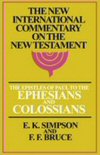
The Epistles to the Ephesians and the Colossians
- Authors: Edmond Simpson, F.F. Bruce
- Series: New International Commentary (NIC)
- Publisher: Eerdmans
- Publication Date: 1965
- Pages: 328
Two champion theologians, F.F. Bruce and Edmond Kidley Simpson, bring us an outstanding commentary on the New Testament books of Ephesians and Colossians. The Epistle to the Ephesians and the Colossians —one of the original New International Commentary volumes—provides a verse-by-verse journey through both of those two epistles, each preceded with a comprehensive introductory section. The thought-provoking and comprehensive commentary found within this volume works as an excellent companion to a student's research, a pastor's sermon preparation, and the daily Bible study of laity.
Professor F.F. Bruce was born in Elgin, Scotland, and received his education at the universities of Aberdeen, Cambridge and Vienna. He was lecturer in Greek at the Universities of Edinburgh and Leeds, and then moved on to Sheffield, where he served as Professor of Biblical History and Literature. He was appointed Rylands Professor of Biblical Criticism and Exegesis at the University of Manchester in 1959. He died in 1990.
Edmond Kidley Simpson was a theologian, scholar, and author of multiple significant books, including The Egyptian Papyri and the New Testament and Words Worth Weighing in the Greek New Testament.
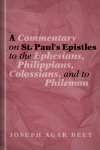
A Commentary on St. Paul’s Epistles to the Ephesians, Philippians, Colossians, and to Philemon
- Author: Joseph Agar Beet
- Series: Joseph Agar Beet Commentary Collection
- Publisher: Hodder and Stoughton
- Publication Date: 1902
- Pages: 440
Contents:
- Exposition of the Epistle to the Philippians
- Exposition of the Epistle to the Colossians
- Praise and Prayer
- The Truth Concerning Christ
- Warning Against Errors
- Practical Application
- Personal Matters
- Exposition of the Epistle to the Philemon
- Exposition of the Epistle to the Ephesians
- Doctrine
- Moral Teaching
- Dissertations
The commentary itself seems to have been very carefully prepared and shows a fair amount of knowledge of the Greek language, and his expositions are for the most part such as we can well accept.
—The Church Review

Classic Commentaries and Studies on Philippians (18 vols.)
- Volumes: 18
- Pages: 4,396
The Classic Commentaries and Studies on Philippians offers some of the most significant classic studies on the book of Philippians from the late nineteenth and early twentieth centuries. With notable scholars such as Jean Daille, William Kelly, Alfred Plummer, and Henry Newland, Classic Commentaries and Studies on Philippians (18 vols.) offers over 4,000 pages of interpretation, observations, translations, contextual history, and practical application. The eighteen volumes contained in the Classic Commentaries and Studies on Philippians (18 vols.) have had an enduring impact on New Testament exegesis, and this exceptional collection provides easy accessibility to this wealth of significant scholarship.

Classic Commentaries and Studies on Philippians Upgrade (12 vols.)
- Volumes: 12
- Pages: 3,341
The Classic Commentaries and Studies on Philippians Upgrade is a 12 volume collection which brings noted theologians and scholars from the nineteenth and twentieth centuries together to explore what many describe as the most loving of the Pauline epistles. Robert Johnstone, Agustus Neander, and H.C.G. Moule are among the many voices guiding the reader to a deeper understanding of this extraordinary biblical text. Nearly 3,500 pages of additional lectures, commentaries, philological notes, and more help readers study Philippians from every angle. This collection includes one French- and two German-language volumes.
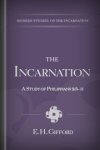
In Philippians 2:5–11, the true meaning of St. Paul’s words in this celebrated passage still meet with the widest diversities of interpretation. There is, however, one point on which all are agreed, namely, that the passage is of primary importance in relation to the fundamental doctrine of the Christian religion, the Incarnation of the Son of God. E.H. Gifford examines various interpretations of this important passage of Scripture as it developed over history, from Marcion to his contemporaries.
Edwin Hamilton Gifford (1820–1905) was educated at Shrewsbury and St. John’s College, Cambridge. From 1884 to 1889 he was Archdeacon of London. His works include Glory of God in Man, Voices of the Prophets, and Romans from The Speaker’s Commentary.
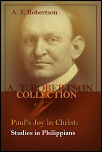
Many modern critics fail to understand Paul because they fail to understand Jesus, and therefore do not know Jesus as Paul knew him—a critical error. In Paul’s Joy in Christ: Studies in the Philippians, Robertson asserts that “nowhere is the tender side of Paul’s nature better shown than here: his delicacy, his courtesy, his elevation of feeling, his independence, his mysticism, and his spiritual passion.” This volume is derived from a series of lectures delivered at the Northfield Conference for Christian workers in August, 1913.
Archibald Thomas Robertson was born on November 6, 1863 in Chatham, Virginia, during the height of the Civil War. His family moved to Statesville, North Carolina, where he grew up. He was baptized in 1876 and immediately recognized God’s call to preach, and attended Wake Forest College.
Upon graduation in 1885, Robertson entered The Southern Baptist Theological Seminary, where he devoted himself to Greek studies under John Broadus. He was appointed Greek instructor as a student, and received his Th.M. in 1888. Robertson became an associate professor in 1890, and then served as Professor of New Testament Interpretation from 1895 to 1934. He devoted his life to preaching, teaching, scholarly activities, and giving public lectures, many of which have been reproduced in book form in this collection. He was a founding member of the Baptist World Alliance, and participated in numerous Bible conferences with Dwight Moody and F.B. Meyer.
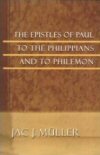
J.J. Muller's work, The Epistles of Paul to the Philippians and to Philemon, is widely known and much loved for its verse-by-verse commentary, careful examination of Philippians and Philemon, and introductory examination of each book. His words, brimming with outstanding scholarship and biblical wisdom, outline the doctrine found within these two Pauline epistles in way that is useful for students, professors, pastors, and laity alike. What's more, this resource was the original New International Commentary volume on Philippians and Philemon.
J.J. Muller was a theologian, biblical scholar, and author.

Classic Commentaries and Studies on Colossians and Philemon (14 vols.)
- Volumes: 14
- Pages: 4,633
The Classic Commentaries and Studies on Colossians and Philemon (14 vols.) includes some of the most significant classic studies on Colossians and Paul’s letter to Philemon from the late nineteenth and early twentieth centuries. With notable authors such as H.G.C. Moule, the Classic Commentaries and Studies on Colossians and Philemon (14 vols.) offers over 4,000 pages of exegetical analysis, rhetorical context, contextual comparison, and interpretation. The fourteen volumes contained in Classic Commentaries and Studies on Colossians and Philemon (14 vols.) have had an enduring impact on New Testament exegesis, and this exceptional collection provides easy accessibility to this wealth of significant scholarship.
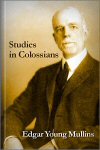
Studies in Colossians
- Author: Edgar Young Mullins
- Publisher: Sunday School Board of the Southern Baptist Convention
- Publication Date: 1935
- Pages: 142
Intended as a study guide for personal Bible study or in a classroom setting, Studies in Colossians contains notes for pastors and professors to guide students through the book of Colossians. Anyone wishing to maximize study of Paul's epistle to the Colossians will find Mullins' study guide to be of great value. Helpful review questions are listed at the back of this resource.
Edgar Young Mullins, who was perhaps the most pivotal figure in twentieth century Southern Baptist life, deserves notice.
—Online Reviewer
Edgar Young Mullins is the most formative influence on the theological and doctrinal development of the Southern Baptist Church.
—Online Reviewer
Edgar Young Mullins is one of the twentieth century's most noted Southern Baptist theologians. Both a pastor and professor, Mullins wrote many theological resources that continue to inspire and challenge readers today. He died in 1928, shortly after being named the president of the Baptist World Alliance.

Classic Commentaries and Studies on Thessalonians (11 vols.)
- Volumes: 11
- Pages: 2,438
The Classic Commentaries and Studies on Thessalonians (11 vols.) include some of the most significant classic studies on the Thessalonian correspondence from the late nineteenth and early twentieth centuries. With notable authors such as Alfred Plummer, Classic Commentaries and Studies on Thessalonians (11 vols.) offers over 2,400 pages of exegetical analysis, rhetorical context, contextual comparison, and interpretation. The eleven volumes contained in Classic Commentaries and Studies Thessalonians have had an enduring impact on New Testament exegesis, and this exceptional collection provides easy accessibility to this wealth of significant scholarship.

Classic Commentaries and Studies on Thessalonians Upgrade (9 vols.)
- Volumes: 9
- Pages: 1,950
In this collection, theologians and Bible scholars of the late-nineteenth and early-twentieth centuries examine the meaning of the epistles to the Thessalonians, two of Paul’s earliest letters. In nearly two thousand pages of valuable insights, notable thinkers such as John Jewel, William Lincoln, and Robert Mackintosh unpack the message of these crucial New Testament books and their application to the Christian life.

Classic Commentaries and Studies on the Pastoral Epistles (12 vols.)
- Volumes: 12
- Pages: 2,351
The Classic Commentaries and Studies on the Pastoral Epistles offers some of the most significant classic studies on the Pastoral Epistles from the late-nineteenth- and early-twentieth-centuries. With notable authors such as Patrick Fairburn, H.P. Liddon, and R.F. Horton, Classic Commentaries and Studies on the Pastoral Epistles offers over 2,000 pages of interpretation, observations, translations, contextual history, and practical application. The thirteen volumes contained in the Classic Commentaries and Studies on the Pastoral Epistles have had an enduring impact on New Testament exegesis, and this exceptional collection provides easy accessibility to this wealth of significant scholarship.
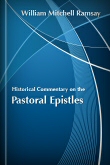
Historical Commentary on the Pastoral Epistles was first serialized in four issues of The Expositor from 1909 to 1911. The bulk of the commentary focuses on 1 Timothy and places Paul's instructions in the proper historical context.
William Mitchell Ramsay was born in Glasgow, Scotland, in 1851. His education took place at Oxford, the University of Aberdeen, and Gottingen, and he later went on to become Professor of Humanity at University of Aberdeen, as well as the first ever Professor of Classical Archaeology at Oxford. Perhaps most well-known for his archaeological endeavors, he traveled extensively throughout Asia Minor, studying the missionary journeys of Paul and conducting archaeological research, writing numerous books on the findings and adventures of his studies, including St. Paul the Traveller and Roman Citizen. His original intent in his studies was to disprove Christianity through archaeology, but through his research he realized that the Bible was accurate and converted to Christianity. Ramsay died in 1939.

Classic Commentaries and Studies on Hebrews (31 vols.)
- Volumes: 31
- Pages: 10,991
The Classic Commentaries and Studies on the Book of Hebrews (31 vols.) offers some of the most significant classical studies on the book of Hebrews from the nineteenth and twentieth centuries. With notable authors such as Franz Delitzsch, Moses Stuart, A.B. Bruce, and G.A. Chadwick, Classic Commentaries and Studies on the Book of Hebrews (31 vols.) contains over 10,000 pages of interpretation, observations, translations, contextual history, and practical application. The thirty-one volumes contained in the Classic Commentaries and Studies on the Book of Hebrews (31 vols.) have had an enduring impact on New Testament exegesis, and this exceptional collection provides easy access to this wealth of significant scholarship.

An Exposition of the Epistle to the Hebrews (7 vols.)
- Author: John Owen
- Volumes: 7
- Pages: 3,967
Logos is pleased to offer the Gold edition of John Owen’s Exposition of the Epistle to the Hebrews—one of the richest commentaries ever written on the book of Hebrews. This massive 7-volume commentary includes two volumes—nearly 1,000 pages—of introductory essays on historical and theological topics relating to Hebrews, along with five volumes of meticulous exposition and commentary.
Owen’s work on Hebrews is partly critical—with comments on the text and language—and partly doctrinal, containing ample discussion of theology and doctrine. His commentary weaves together Old Testament themes of law and covenant with a New Testament definition of Christ’s priestly function and God’s new covenant of grace. Most importantly, Owen’s emphasis on holiness makes An Exposition of the Epistle to the Hebrews eminently useful for practical Christian study and reflection.
This vast work—almost 4,000 pages and over two million words—reflects Owen’s careful inquiry and stunning mastery of the text, and vindicates Owen’s own claim that “this epistle is as useful to the church as the sun is to the world.” An Exposition of the Epistle to the Hebrews is the result of earnest investigation and deep exploration of the theological topics in the book of Hebrews. In fact, Owen’s theology—here and elsewhere—remains so biblically rooted, and his exegesis and exposition so practically theological, that where one ends and the other begins is not plainly evident.
This greatest work of John Owen is a work of gigantic strength as well as gigantic size; and he who has mastered it is very little short…of being an erudite and accomplished theologian.
—Thomas Chalmers
[Owen is] not only the greatest theologian of the English Puritan movement but also one of the greatest European Reformed theologians of his day, and quite possibly possessed the finest theological mind that England ever produced.
—Carl Trueman, Biographical Dictionary of Evangelicals
...the greatest systematic thinker in the Puritan theological tradition.
—I. Breward, New Dictionary of Theology
For solidity, profundity, massiveness and majesty in exhibiting from Scripture God’s ways with sinful mankind there is no one to touch him.
—J.I. Packer, Professor of Theology, Regent College, Vancouver
...the greatest theologian who has ever written in the English language.
—Roger Nicole
To have known the pastoral ministry of John Owen . . . (albeit in written form) has been a rich privilege; to have known Owen’s God an even greater one.
—Sinclair Ferguson
In all our life and ministry, as we care for people and contend for the faith, we can learn much from Owen’s pursuit of holiness in private and public. . . .I thank God for John Owen’s unwavering passion for communion with God. We are debtors to his mighty pen and to the passion for God’s glory . . . that drove it.
John Owen was born at Stadhampton, Oxfordshire in 1616. He entered Queen's College, Oxford, at the age of twelve and completed his M.A. in classics and theology in 1635 at the age of nineteen. He was ordained shortly thereafter and left the university to be a chaplain to the family of a noble lord. His first parish, in 1637, was at Fordham in Essex, to which he went while England was involved in civil war. It was here that he became convinced that the Congregational way was the scriptural form of church government. In the 1640s he became chaplain to Oliver Cromwell, the new "Protector of England," and traveled with him on his expeditions to Ireland and Scotland. Between 1651 and 1660, he played a prominent part in the religious, political, and academic life of the nation. In 1651 he was appointed dean of Christ Church and in 1652 made Vice-Chancellor of Oxford—positions which allowed him to train ministers for the Cromwellian state church. He lost his position in 1660, however, when the restoration of the monarchy began after the death of Cromwell in 1658. Owen moved to London and led the Puritans through the bitter years of religious and political persecution—experiences which shaped his theological inquiry, pastoral reflection, and preaching. He later declined not only invitations to the ministry in Boston in 1663, but also an offer to become president of Harvard in 1670. He died in August, 1683.
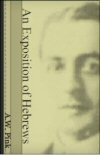
An Exposition of Hebrews
- Author: A.W. Pink
- Publisher: Logos Research Systems, Inc.
- Publication Date: 2005
- Pages: 1,292
The book of Hebrews is rich with doctrine, Old Testament imagery and quotations, and practical exhortation. Pink provides one of the most comprehensive commentaries on the book of Hebrews, moving verse by verse through the book and providing both exposition and application along the way. This is a must-have for anyone preaching, teaching, or studying the book of Hebrews.

Classic Commentaries and Studies on the Epistle of James (14 vols.)
- Volumes: 14
- Pages: 3,862
The Classic Commentaries and Studies on the Epistle of James offers some of the most significant classic studies on the book of James from the late nineteenth and early twentieth centuries. With notable authors such as Augustus Neander, A.T. Robertson, Rudolf Stier, Thomas Manton, Classic Commentaries and Studies on the Epistle of James (14 vols.) offers over 3,000 pages of interpretation, observations, translations, contextual history, and practical application. The fourteen volumes contained in Classic Commentaries and Studies on the Epistle of James (14 vols.) have had an enduring impact on New Testament exegesis, and this exceptional collection provides easy accessibility to this this wealth of significant scholarship.

Classic Commentaries and Studies on the Epistle of James Upgrade (12 vols.)
- Volumes: 12
- Pages: 2,853
The Classic Commentaries and Studies on the Epistle of James Upgrade offers nearly 3,000 pages of commentaries, lectures, contextual history, and practical application of the wisdom found in James. These 12 volumes give you some of the most significant studies on James from the nineteenth and early twentieth centuries. Such figures as W. Boyd Carpenter, Charles Brown, and William Kelly expound upon the epistle and how it applies to the Christian life. This collection also contains two German-language texts and one French-language volume.
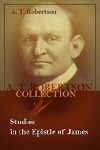
The epistle of James offers profound advice for everyday life and contains "the breath of heaven and the warmth of human sympathy and love." In August, 1912, Robertson delivered a series of lectures on practical aspects of ethics as found in the book of James. He repeated these enormously popular lectures in 1913 at the Winona Bible Conference, and this volume is the result of many requests for publication. In addition to introductory material, this volume includes expanded versions of those lectures, and is written for ministers, students of the Bible, and teachers. Technical language and the Greek text are placed in parentheses and footnotes, making this volume accessible for English-only study.
Archibald Thomas Robertson was born on November 6, 1863 in Chatham, Virginia, during the height of the Civil War. His family moved to Statesville, North Carolina, where he grew up. He was baptized in 1876 and immediately recognized God’s call to preach, and attended Wake Forest College. Upon graduation in 1885, Robertson entered The Southern Baptist Theological Seminary, where he devoted himself to Greek studies under John Broadus. He was appointed Greek instructor as a student, and received his Th.M. in 1888. Robertson became an associate professor in 1890, and then served as Professor of New Testament Interpretation from 1895 to 1934. He devoted his life to preaching, teaching, scholarly activities, and giving public lectures, many of which have been reproduced in book form in this collection. He was a founding member of the Baptist World Alliance, and participated in numerous Bible conferences with Dwight Moody and F.B. Meyer.

Classic Commentaries and Studies on the Epistles of Peter and Jude (26 vols.)
- Volumes: 26
- Pages: 9,172
The Classic Commentaries and Studies on the Epistles of Peter and Jude (26 vols.) offers some of the most significant classical studies on Epistles of Peter and Jude from the nineteenth and twentieth centuries. With notable authors such as Thornley Smith, William Kelly, Robert Leighton, and John Brown, Classic Commentaries and Studies on the Epistles of Peter and Jude (26 vols.) contains over 9,000 pages of interpretation, observations, translations, contextual history, and practical application. The twenty-six volumes contained in the Classic Commentaries and Studies on the Epistles of Peter and Jude (26 vols.) have had an enduring impact on New Testament exegesis, and this exceptional collection provides easy access to this wealth of significant scholarship.
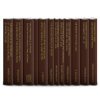
Classic Commentaries and Studies on the Epistles of Peter and Jude Upgrade (12 vols.)
- Volumes: 12
- Pages: 3,270
Exegesis is an intricately detailed task, and it requires thorough analysis from multiple sources. The Classic Commentaries and Studies on the Epistles of Peter and Jude Upgrade provides thorough expository and exegetical analysis from multiple authors and varied perspectives. The collection emphasizes practical application, provides critical commentaries, and discusses each book’s authorial authenticity, as well as the identity and circumstance of its recipients. These volumes represent nearly 500 years of commentary on these short epistles, and include commentaries by authors who—like Peter’s audience—were being persecuted, such as Martin Luther.

Classic Commentaries and Studies on the Epistles of John (25 vols.)
- Volumes: 25
- Pages: 8,941
Classic Commentaries and Studies on the Epistles of John (25 vols.) offers some of the most significant classical studies and scholarship on the epistles of John from the nineteenth and twentieth centuries. With notable authors such as Augustus Neander, Robert S. Candlish, William Kelly, and J.J. Lias, Classic Commentaries and Studies on the Epistles of John (25 vols.) contains over 8,000 pages of interpretation, observations, translations, contextual history, and practical application. The 25 volumes contained in the Classic Commentaries and Studies on the Epistles of John (22 vols.) have had an enduring impact on New Testament exegesis, and this exceptional collection provides easy access to this wealth of significant scholarship.
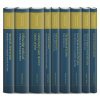
Classic Commentaries and Studies on the Epistles of John Upgrade (9 vols.)
- Volumes: 9
- Pages: 2,797
Classic Commentaries and Studies on the Epistles of John offers even more of the most significant classical studies and scholarship on the epistles of John from the seventeenth, eighteenth, nineteenth, and twentieth centuries. With notable authors such as the Puritan minister of the Massachusetts Bay Colony John Cotton, the Scottish theologian Hugh Binning, and the Canadian founder of the Christian and Missionary Alliance Albert Benjamin Simpson, Classic Commentaries and Studies on the Epistles of John contains over 2,700 pages of interpretation, observations, translations, contextual history, and practical application. The nine volumes contained in the Classic Commentaries and Studies on the Epistles of John have had an enduring impact on New Testament exegesis, and this exceptional collection provides easy access to this wealth of significant scholarship.

Classic Commentaries and Studies on Revelation (27 vols.)
- Volumes: 27
- Pages: 12,448
The book of Revelation is arguably the most mysterious and controversial book of the Bible, and Classic Commentaries and Studies on Revelation provides a massive amount of historical and solid analysis of this book of prophecy. Covering a wide range of topics and viewpoints from the nineteenth and early twentieth century, each volume seeks to clear the confusion associated with this book and interpret it in context. The commentaries provide invaluable insight and clarification from many different stances, presenting a diverse overview and exposition of the book of Revelation.
Each of the authors, all Bible scholars, teachers, and pastors, desire to make this last book of the Bible relevant and clear to God’s people. This collection focuses on textual criticism, comparison with other traditions, historical context, intended message for readers, and construction of the text.
With over 12,000 pages, this is a massive and essential collection for any student of the Bible. In addition to being premium biblical studies on the book of Revelation, these are invaluable historical volumes, allowing the reader to trace the line of how theologians have considered this book of prophecy. Classic Commentaries and Studies on Revelation is perfect for students, professors, historians, and anyone wanting a greater grasp on this divisive book of the Bible. With the Logos edition, all Scriptures are linked to the Bibles in your library, making study fast and easy.
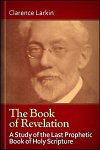
The Book of Revelation: A Study of the Last Prophetic Book of Holy Scripture
- Author: Clarence Larkin
- Series: Clarence Larkin Collection
- Publisher: Clarence Larkin
- Publication Date: 1919
- Pages: 210
This book is the result of twenty-five years of study of the Book of Revelation by Larkin. He interprets Revelation from a Futurist standpoint, showing that the book is to be taken literally, and that it is written in chronological order. The book is illustrated with over thirty of Larkin's beautiful and intricate charts and includes numerous drawings of images described in the Book of Revelation that help elucidate Larkin's teachings.
It is indeed refreshing to take up and exposition of the Book of Revelation and find its author handling it with reverence. Ministers can't own all books, and they shouldn't if they could. There are certain books that are useful and we would class this among the most serviceable.
—The Union Seminary Review
Clarence Larkin (1850–1924) was pastor of Kennett Square in Pennsylvania before authoring numerous titles including: Rightly Dividing the World, The Spirit World, and Dispensational Truth.
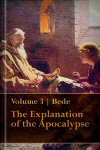
One of the most important intellectuals, writers, and scholars of his day, the Venerable Bede earned the title “The Father of English History” after chronicling one of the most significant books on Anglo-Saxon history and the early expansion of Christianity in England. Contained in this three volume collection is Bede’s masterwork The Ecclesiastical History of the English Nation, a remarkable anthology of his selected short writings and letters, and his commentary on the Book of Revelation, Explanation of the Apocalypse. A virtuosic storyteller and historian, the Works of the Venerable Bede displays an incredible breadth of scholarship from an extraordinary man of faith.
Ordained at age nineteen as a deacon, then a priest at age thirty, Bede spent almost his entire life living and studying in the monastic community of Jarrow, the intellectual epicenter of Northern England. It was there where he learned Latin, Greek, and Hebrew and began his prolific writing on history, theology, poetry, translation, and biblical interpretation.
As entertaining as they are informative, the Works of the Venerable Bede (3 vols.) are some of the most invaluable resources of European Christian history ever written. With Logos Bible Software, these books are completely searchable, with passages of scripture appearing on mouse-over, as well as being linked to Latin texts and English translations in your library.
Written about 710–716, Explanation of the Apocalypse is one of the earliest commentaries on the Book of Revelation ever written. Bede’s succinct but in-depth commentary, separated into three books, is unique in its division of Revelation into seven distinct sections. Included in this volume is a letter to Eusebius, where Bede explains his reasons for structuring his commentary the way he did, as well as an index of the passages of Scripture that he references.
Bede (673–735) was ordained as a deacon at age nineteen, and a priest at the age of thirty. A teacher, theologian, historian, author, poet, and biblical exegete, Bede was one of the foremost intellectuals of his time. He spent the majority of his life living and studying at the Northumbrian monastery in Jarrow, where he authored his famous work The Ecclesiastical History of the English Nation.
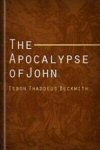
First published in 1919, The Apocalypse of John focuses extensively on the eschatology and Apocalyptic works of the Old Testament and late Jewish writers, as well as the analysis of John’s own writing in the last book of the Bible. Isbon T. Beckwith believes that one must read Revelation in light of the culture, audience, and literary style of which the apostle John was affected by at the time Revelation was written. Beckwith, who was a professor of Greek language and literature at Trinity College in Hartford, Connecticut, also provides a linguistically and theologically thorough commentary of this much-debated book of the Bible.
The Apocalypse of John is a valuable resource for understanding the book of Revelation in the cultural context which it was written. Its overview of apocalyptic literature and summary of John’s writing style, as well as theological insights and commentary, will make this resource a great addition to your Logos collection.
This is one of the most elaborate and satisfactory works that have recently been published upon the Apocalypse.
Born in 1843, Isbon T. Beckwith, Ph.D. and D.D., lived in Hartford Connecticut. In addition to his work as an author, he was a professor of Greek language and literature at Trinity College as well as a professor of the interpretation of the New Testament in the General Theological Seminary in New York.
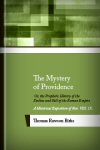
Birks offers a historical exposition of Revelation 8 and 9.
Contents:
- Introduction
- The Season of Intersession
- The Warning and Preparation
- The First Trumpet
- The Pause of Judgment
- The Second Trumpet
- The Third Trumpet
- The Fourth Trumpet
- The Warning in Mid-Heaven
- Rise and Progress of the Locusts
- The Continuance of the Locust Woe
- The Interval of the Two Woes
- The Meaning of the Emblems
- The Days of Chivalry
- The Description of the Horsemen
- The Sins of Christendom
Thomas Rawson Birks (1810–1883) was an Anglican priest and Knightbridge Professor of Moral Philosophy at Cambridge. He also wrote extensively, authoring numerous theological works, many of which sparked discussion and debate. Some of his books include Essay on the Right Estimation of Manuscript Evidence, The Exodus of Israel, Scripture Doctrine of Creation, The Philosophy of Human Responsibility, and Modern Physical Fatalism and the Doctrine of Evolution.
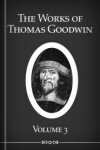
The Works of Thomas Goodwin, vol. 3: Commentary on Revelation
- Author: Thomas Goodwin
- Publisher: James Nichol
- Publication Date: 1861
- Pages: 527
The first part of Volume Three contains Goodwin’s chapter-by-chapter exposition of Revelation, in which he ponders the purpose of the book and the nature of its prophecy. He brings a uniquely Puritan approach to a book more often touted for its bizarre imagery and apocalyptic prophecies than its connections to Puritan theology. Goodwin’s writings on Revelation also include two short summary works on Revelation’s depiction of Christ’s kingdom.
The middle part of Volume Three includes a lengthy excursus on the metaphor of darkness and light in Isaiah 50. In particular, Goodwin ponders the prominence of this metaphor in Isaiah’s prophecy and the implications of the contrasts it draws today.
Volume Three concludes with a Goodwin’s writings on Christian growth, including not only the instances where the church flourishes, but also the obstacles which impede Christian growth.
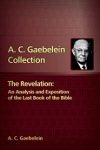
Most interpretations of Revelation are chiefly occupied with symbols of the Book—mysteries, judgments, promised consummation—and neglect to sufficiently emphasize the person of Jesus Christ. If Jesus so prominently stands at the book’s center, what makes the symbolism so appealing and distracting? Gaebelein firmly orients the symbolism, the prophecy, and the apocalyptic predictions in the book of Revelation around the person of Jesus Christ. The Revelation: An Analysis and Exposition of the Last Book of the Bible also contains appendices on connections between Revelation and Daniel, on the symbolic names in Revelation, and on helpful books on prophecy in general and the book of Revelation in particular.
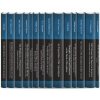
Classic Commentaries and Studies on the Apocalypses of Daniel and Revelation (14 vols.)
- Volumes: 14
- Pages: 4,379
The nineteenth century saw a host of diverse readings of prophecy alongside unprecedented societal shifts. From the Millerites, to patriotic interpreters who saw America as God’s city on a hill—speculation over an imminent apocalypse was perhaps never more intense. These classic commentaries and studies gather some of the most significant historical examinations of the apocalyptic visions in Daniel and Revelation. These diverse volumes include applications of prophecy to historic events, defenses of the Bible against textual and historical criticism, practical commentaries, and detailed examinations of individual passages.
Reviews
3 ratings
ken
12/24/2017
ill tell you how I can give 5 stars to a product I don't own (yet): ...some of these guys (authors) have been my rock stars for a very long time. getting this would be like a literary vinyl heaven. I can just hear the scratches & pops oozing out of Isaiah, The Song of Solomon and The Proverbs..., chillin' on some killer Daniel..., Hangin' out in Spurgeon Bay..., like being at the coolest Hardcore Jesus Freak festival on the planet that you don't wanna' go back home from. ...and last I checked, I've never seen anybody stick a thousand books in their briefcase. Merry Christmas. you guys rock! this is the (a) pearl of great priceHaydn Wood
12/10/2016
Although I have really let rip about the pricing for the upgrade to 7 and still won't/can't do it, I have to say that If I could afford it this is an excellent deal from Logos, Well done guys!Bradford
12/9/2016
Best deal I have seen so far on Logos. I own several base packages and I was considering upgrading or adding other denominational base package until I saw this collection for such a great discount. I enjoy having a treasure vault of 100's of different theologians across a different spectrum of ideology to research for my papers. And there is a greater amount in the collection here then you can find in any base package at the same price at this Christmas discount. If your looking for variety in thought, then this is a good choice.James
12/4/2016